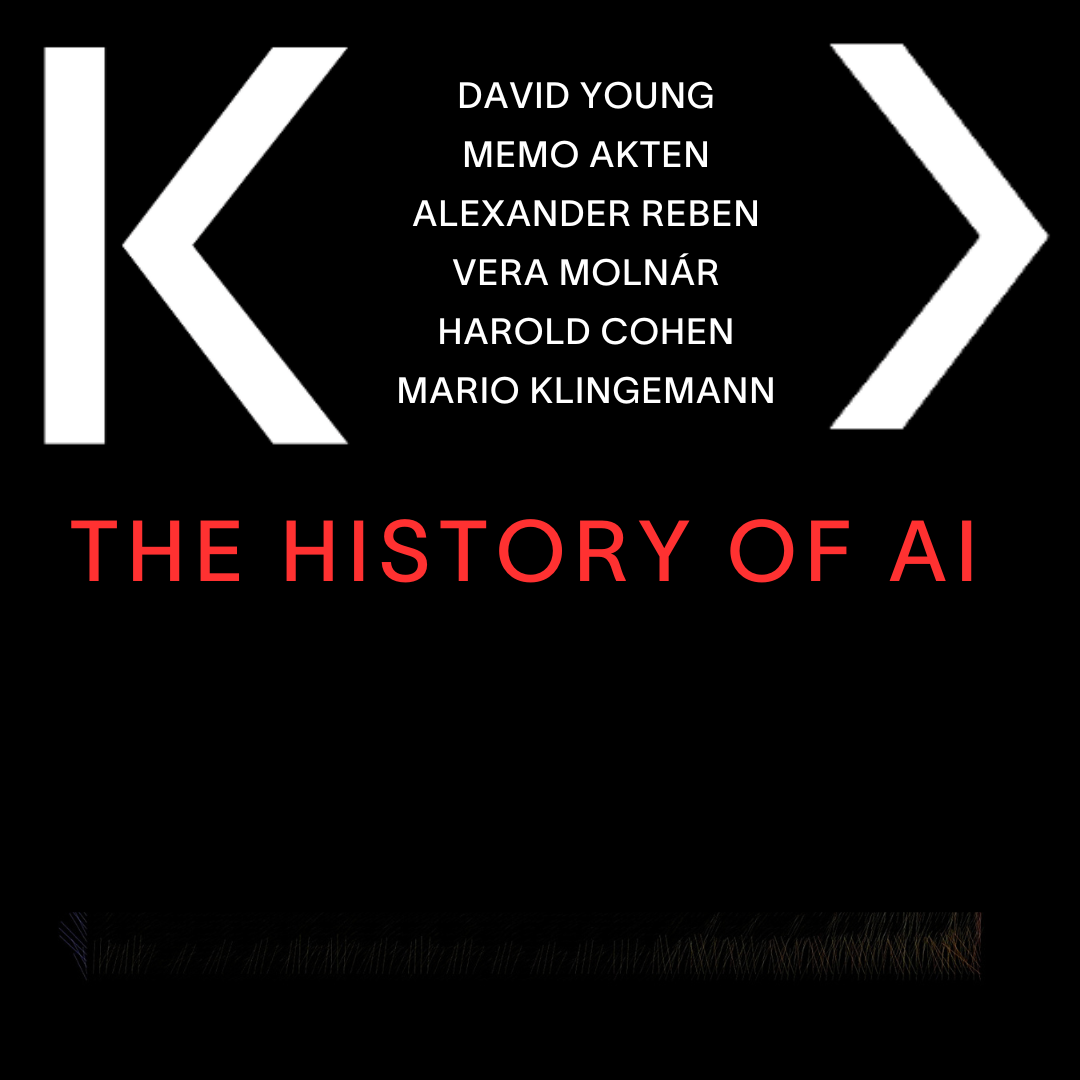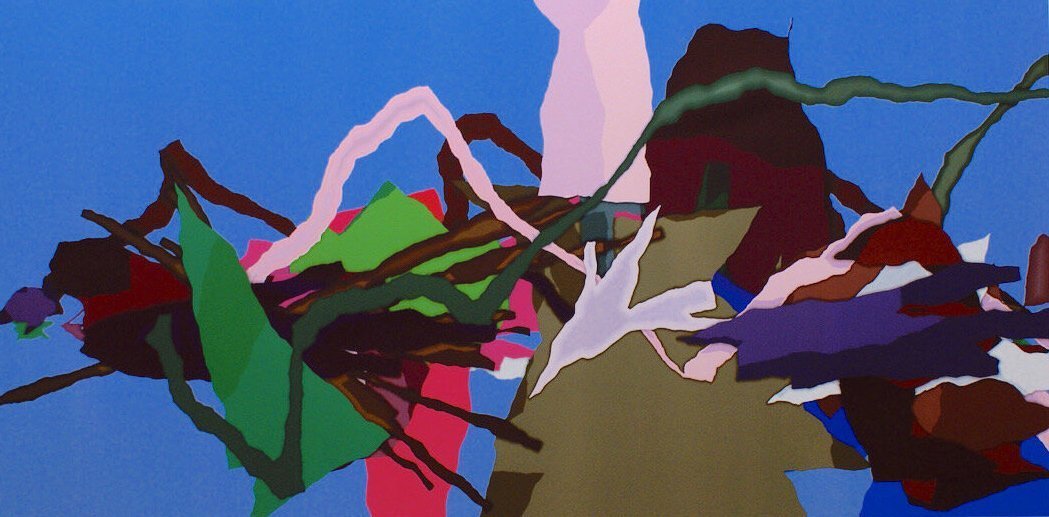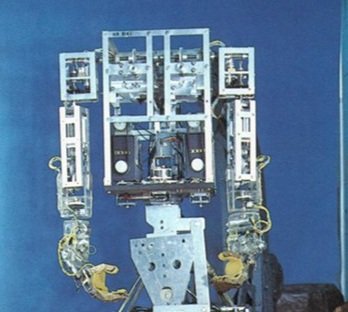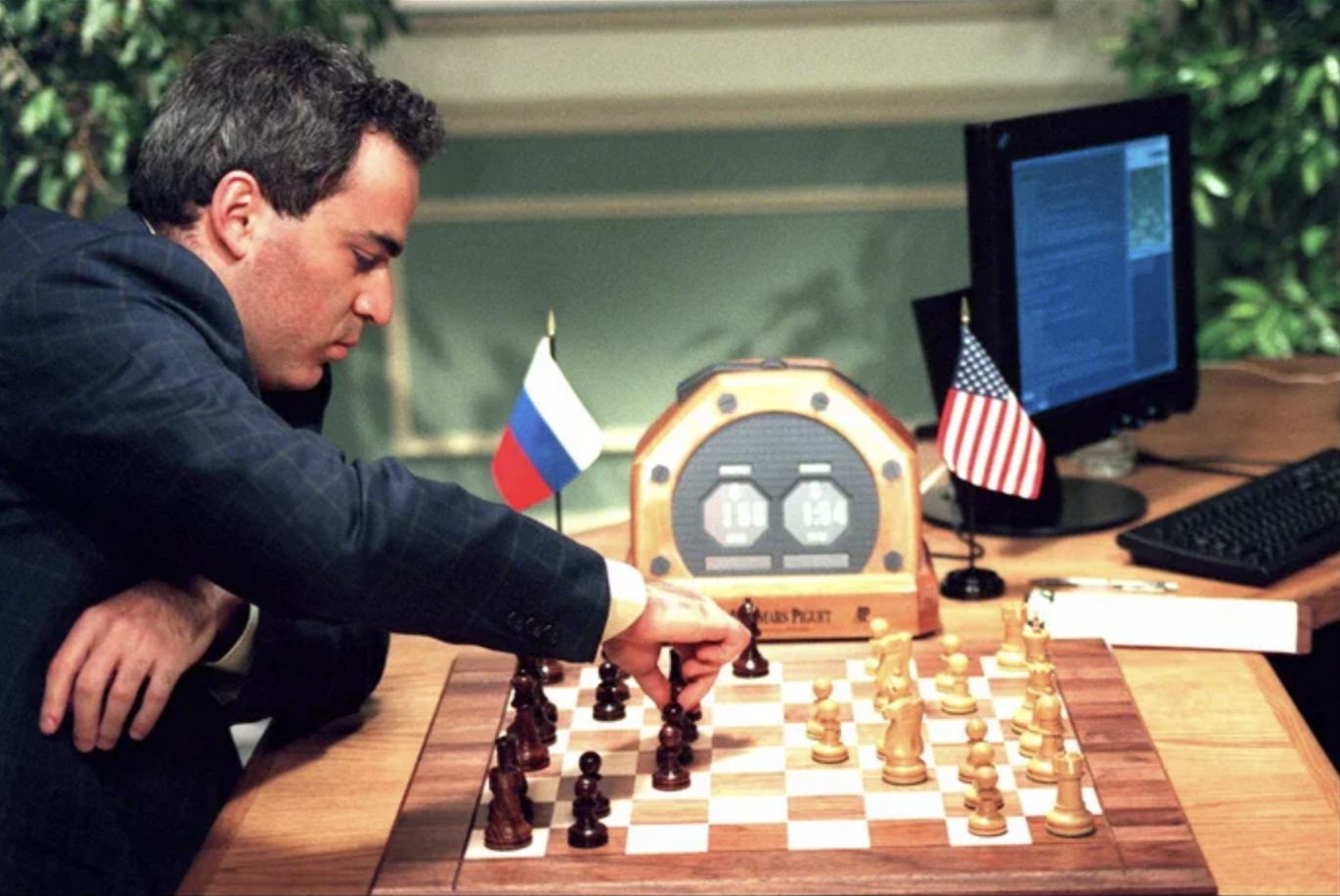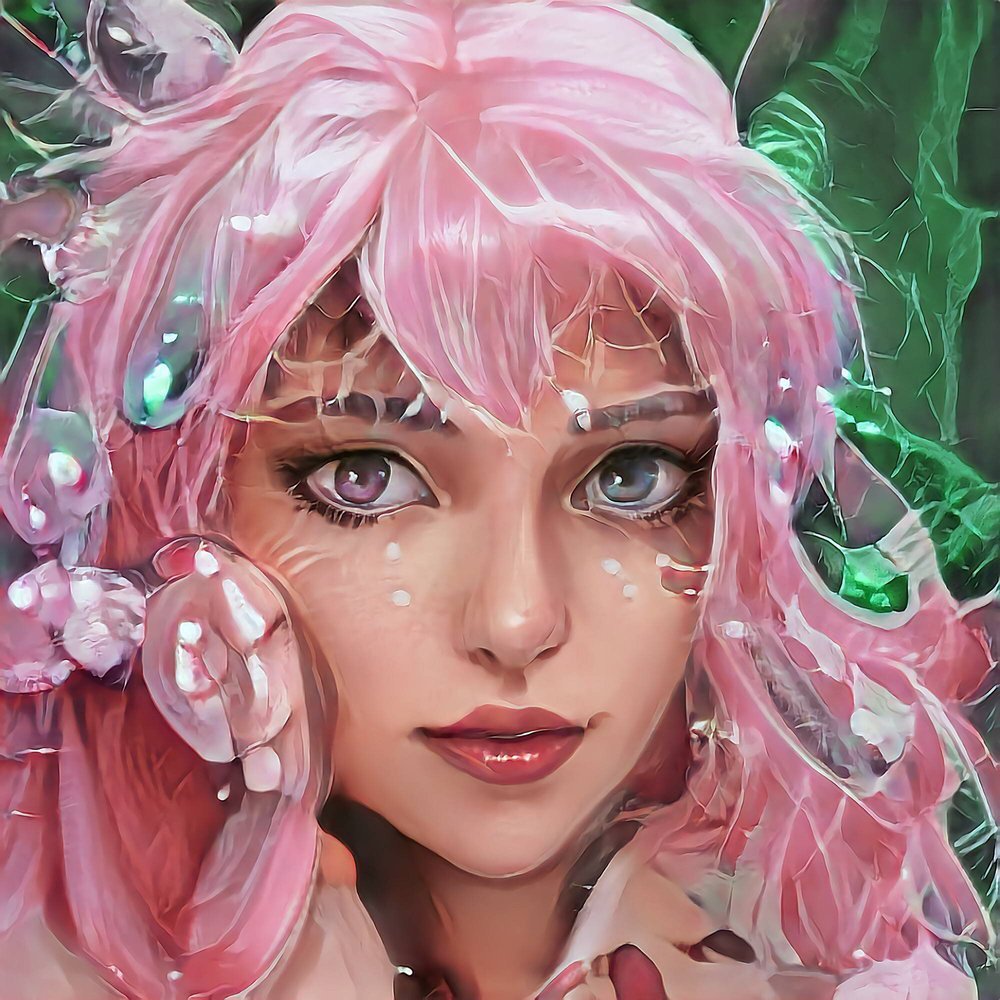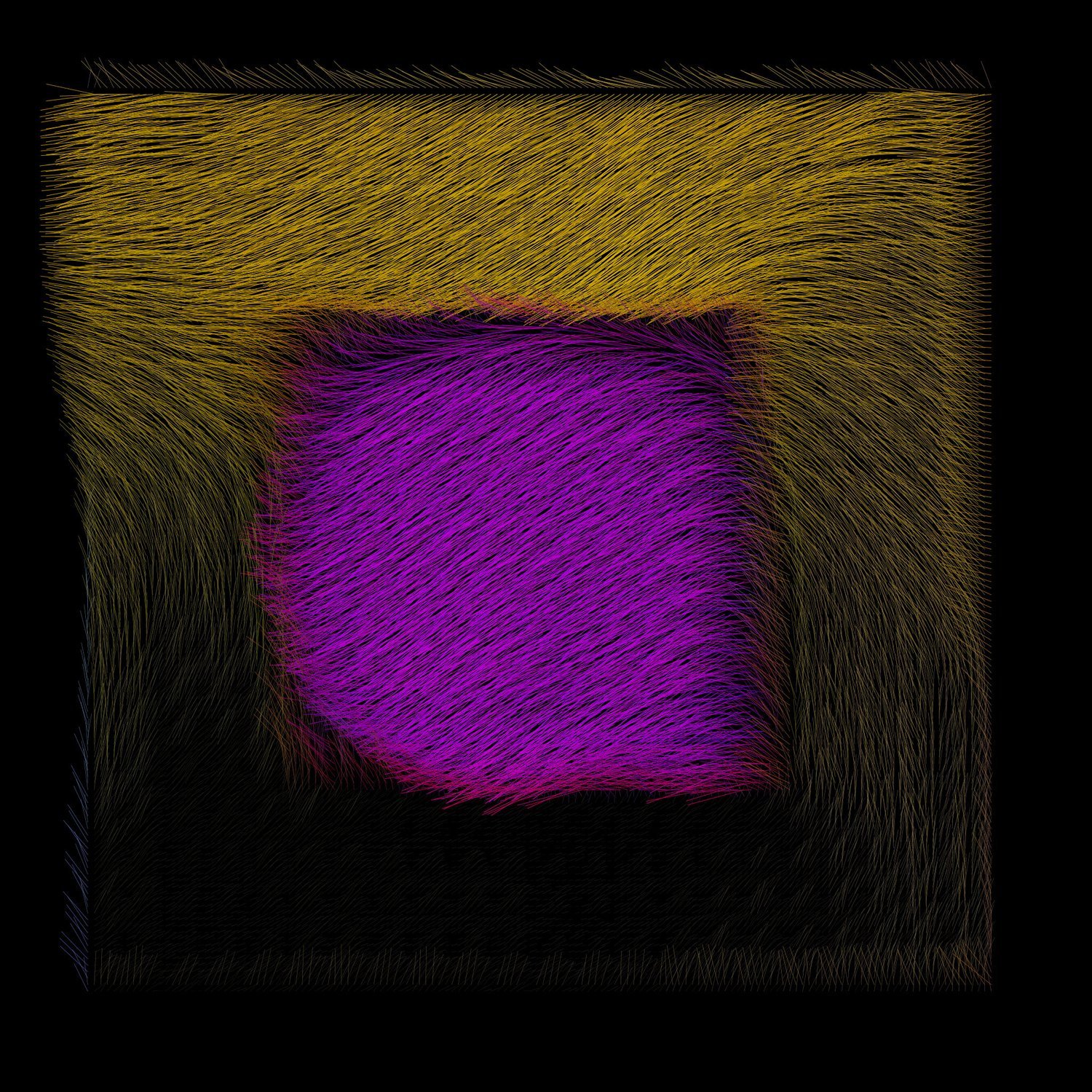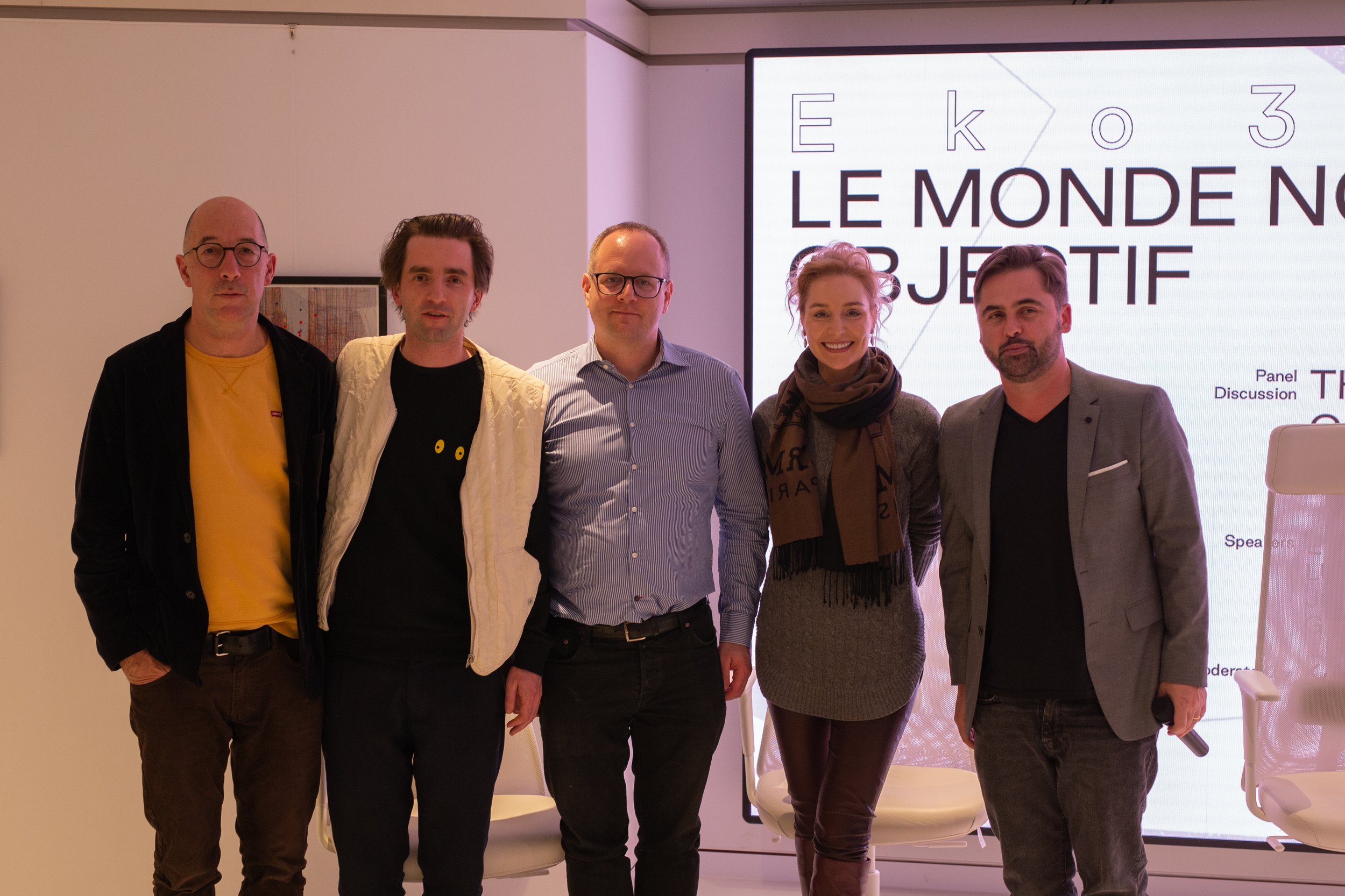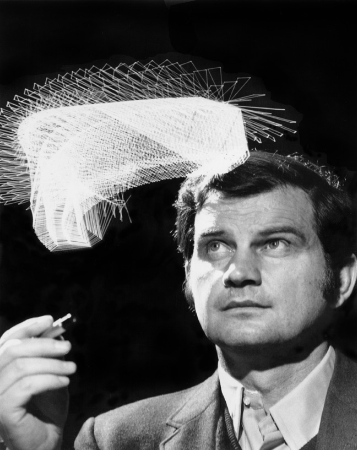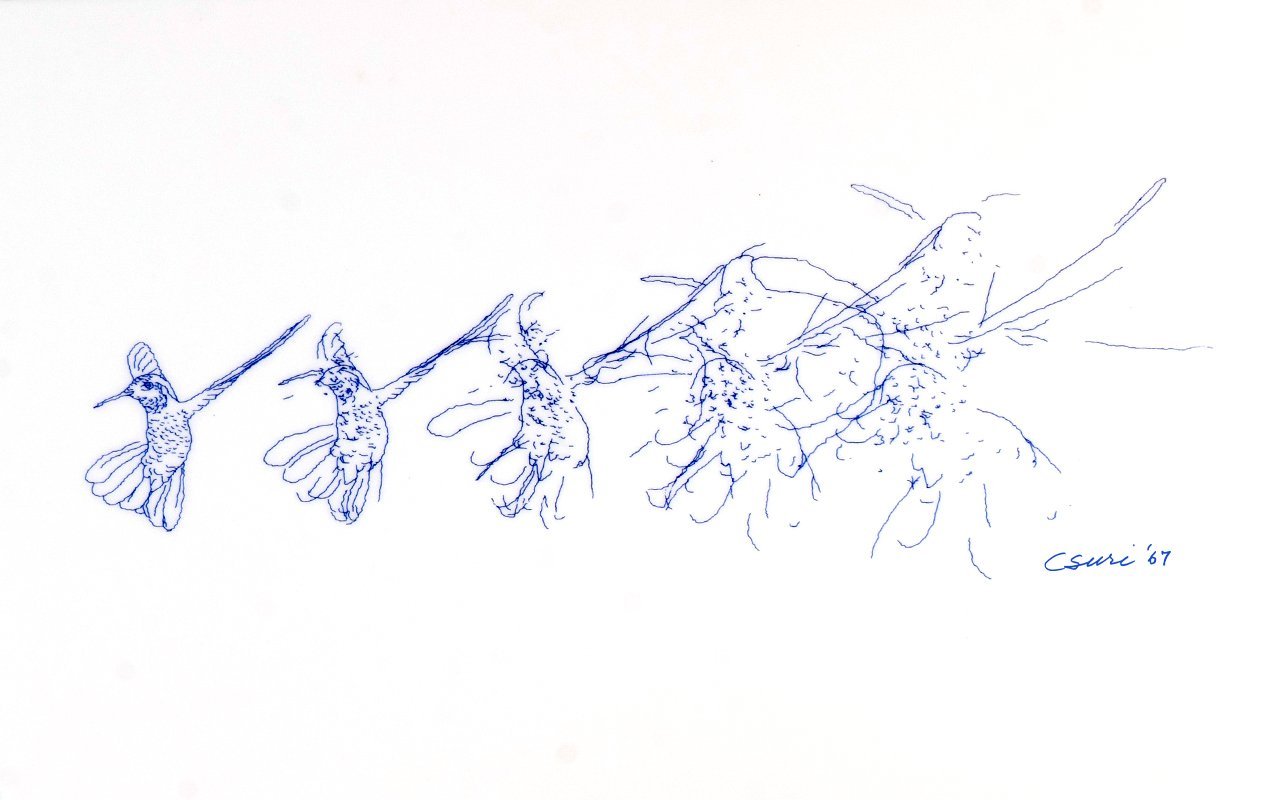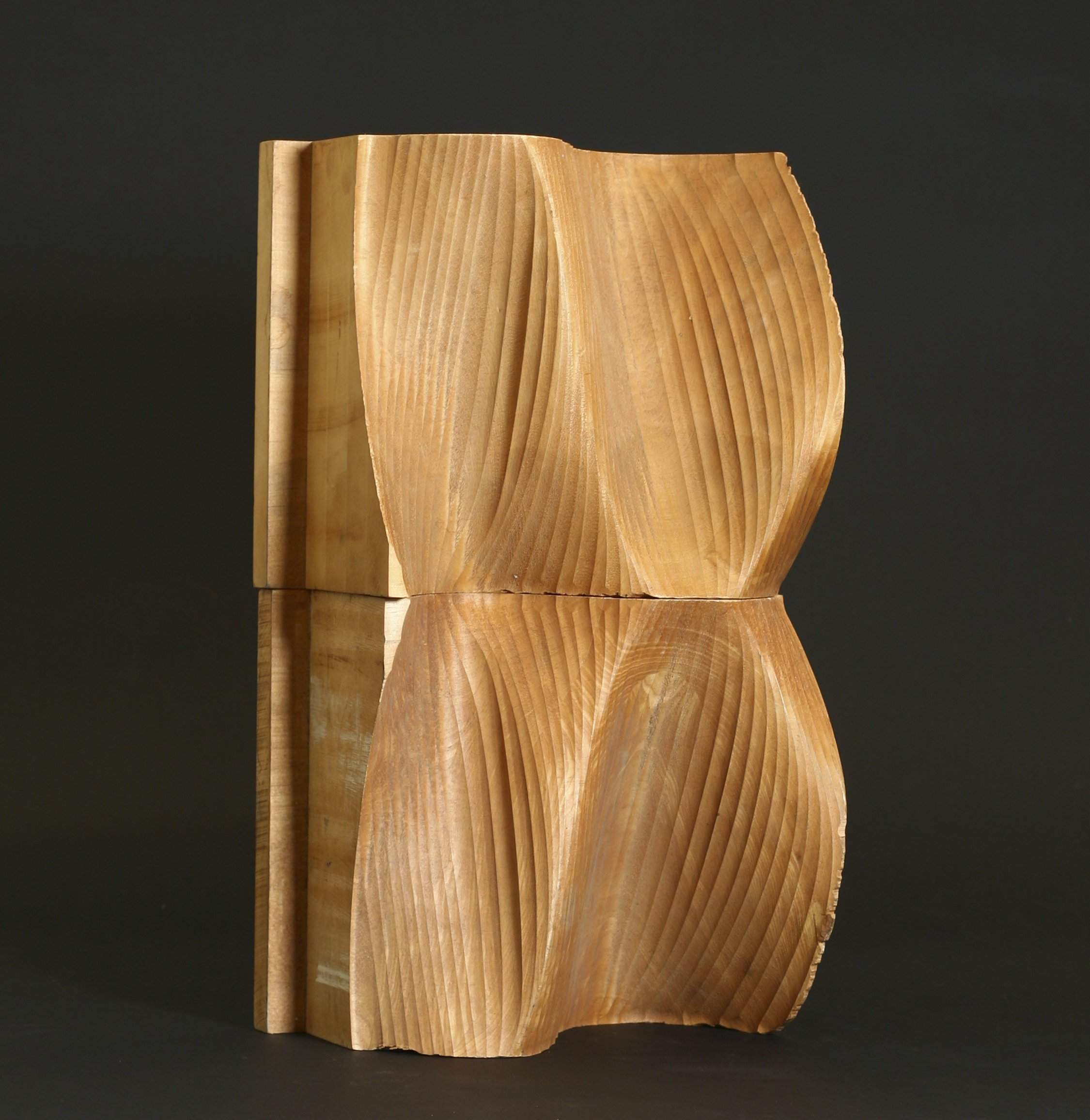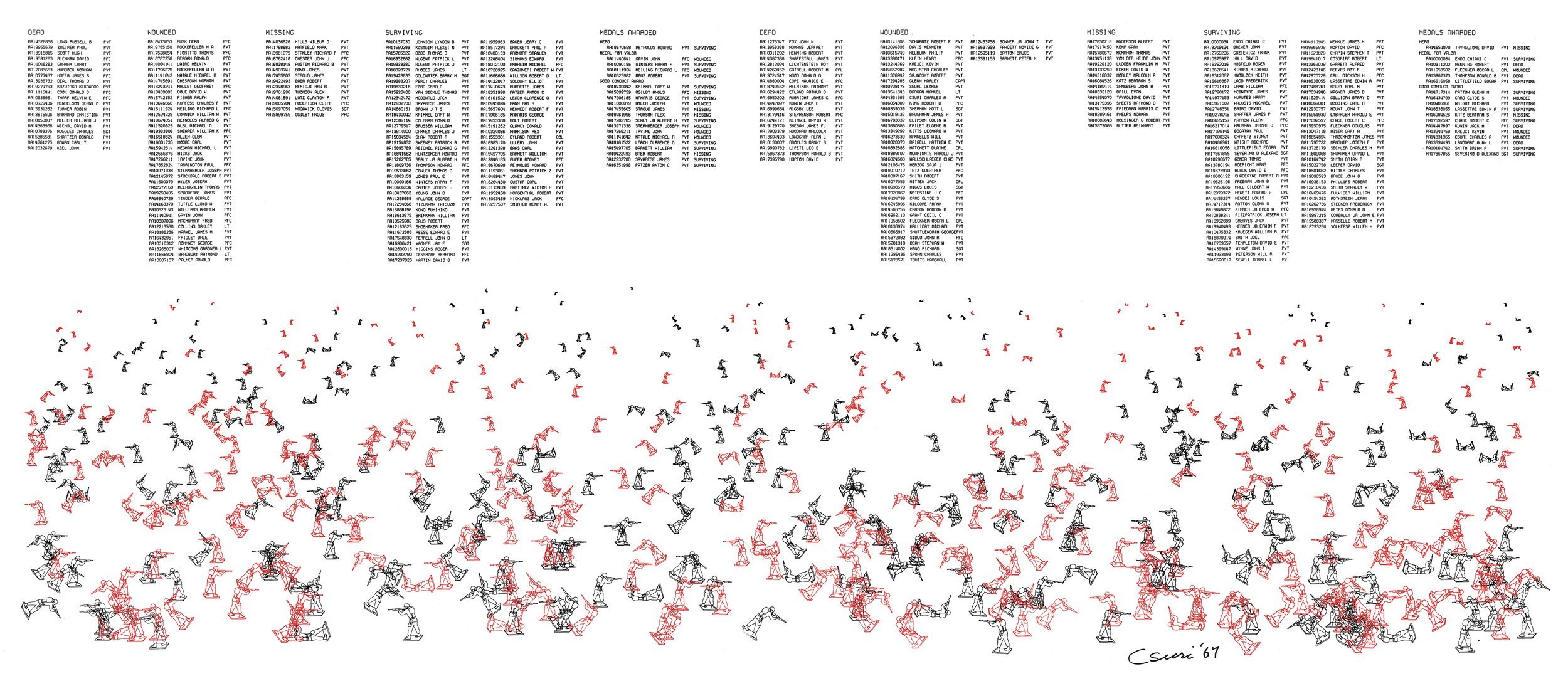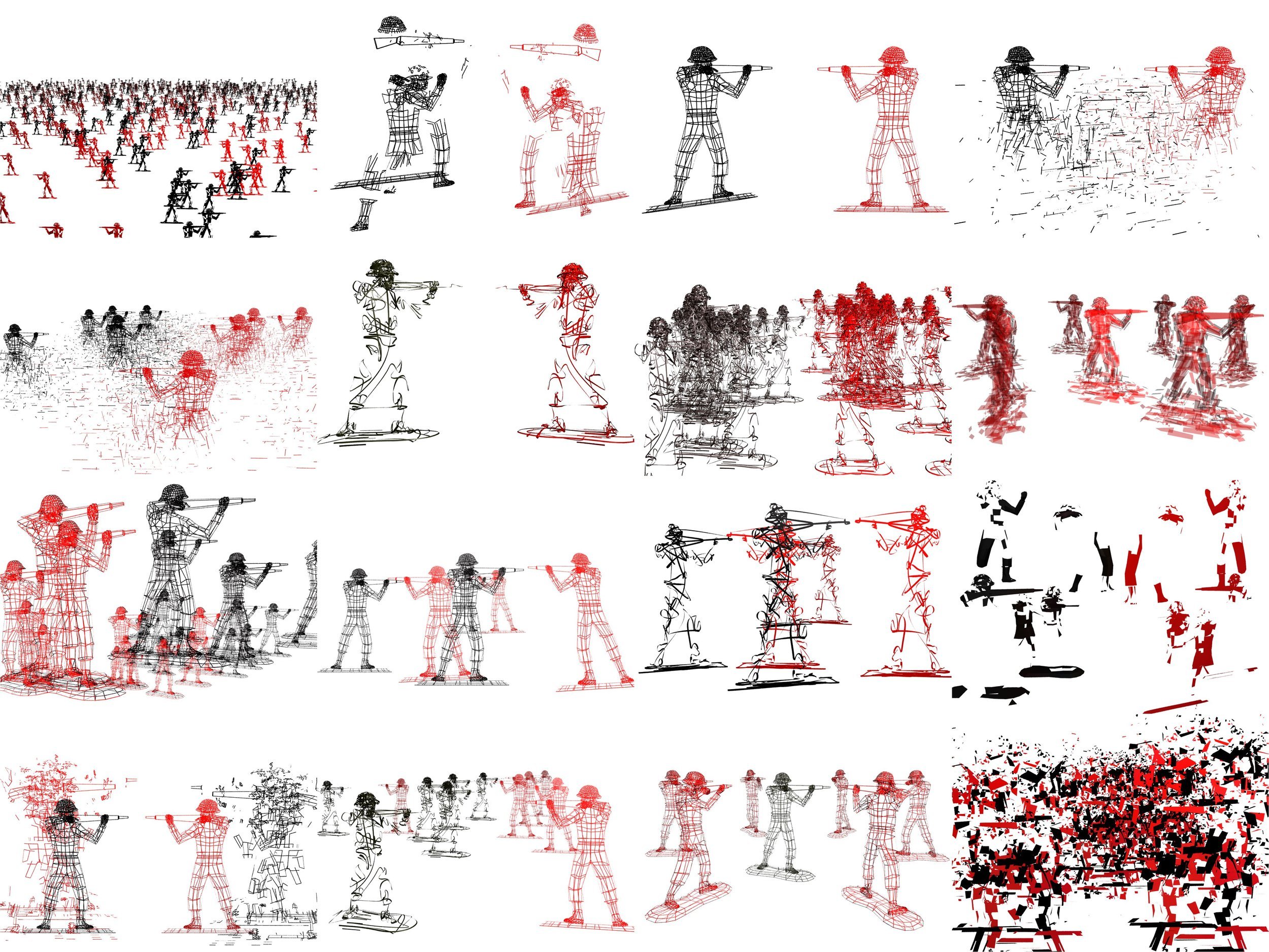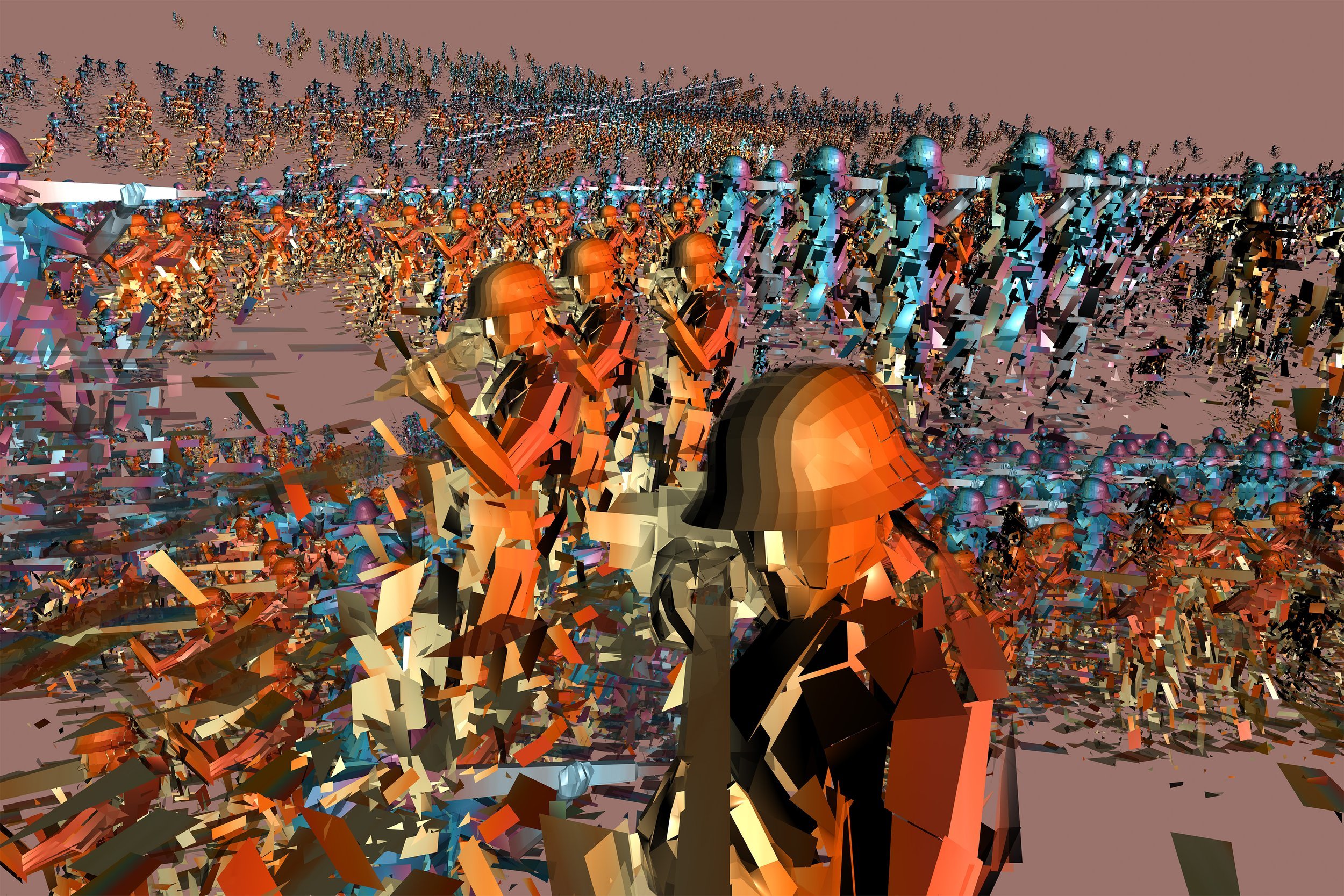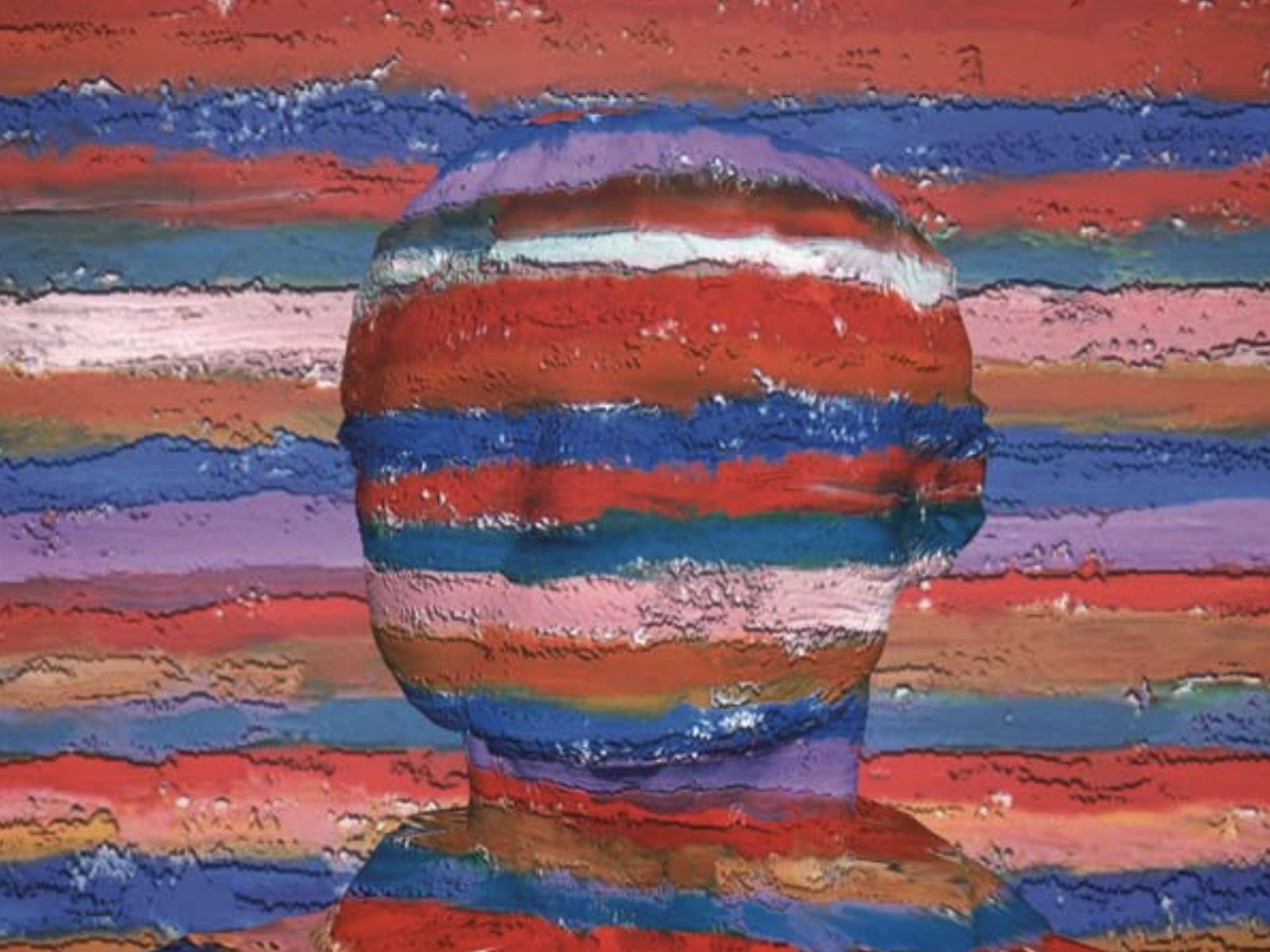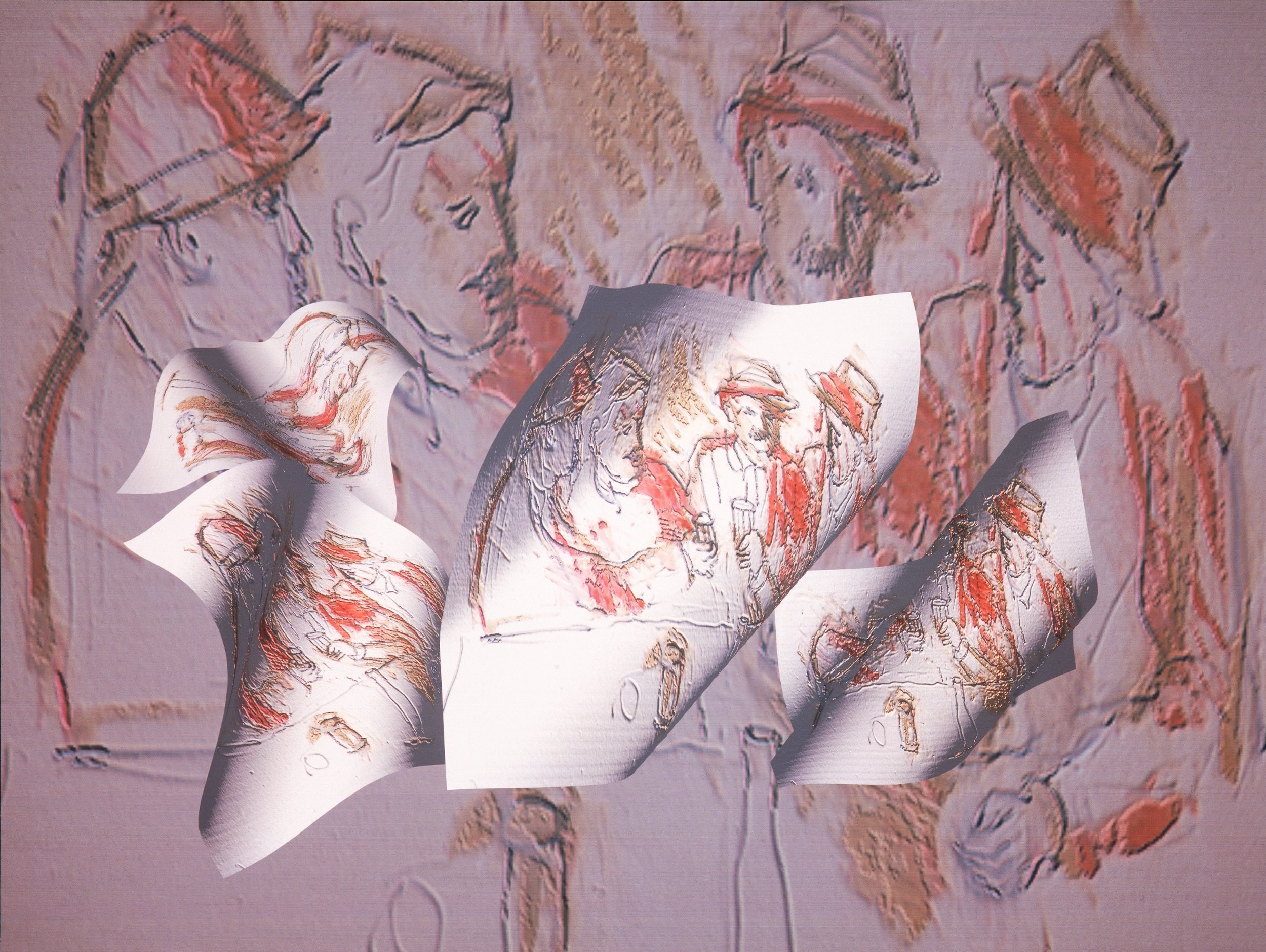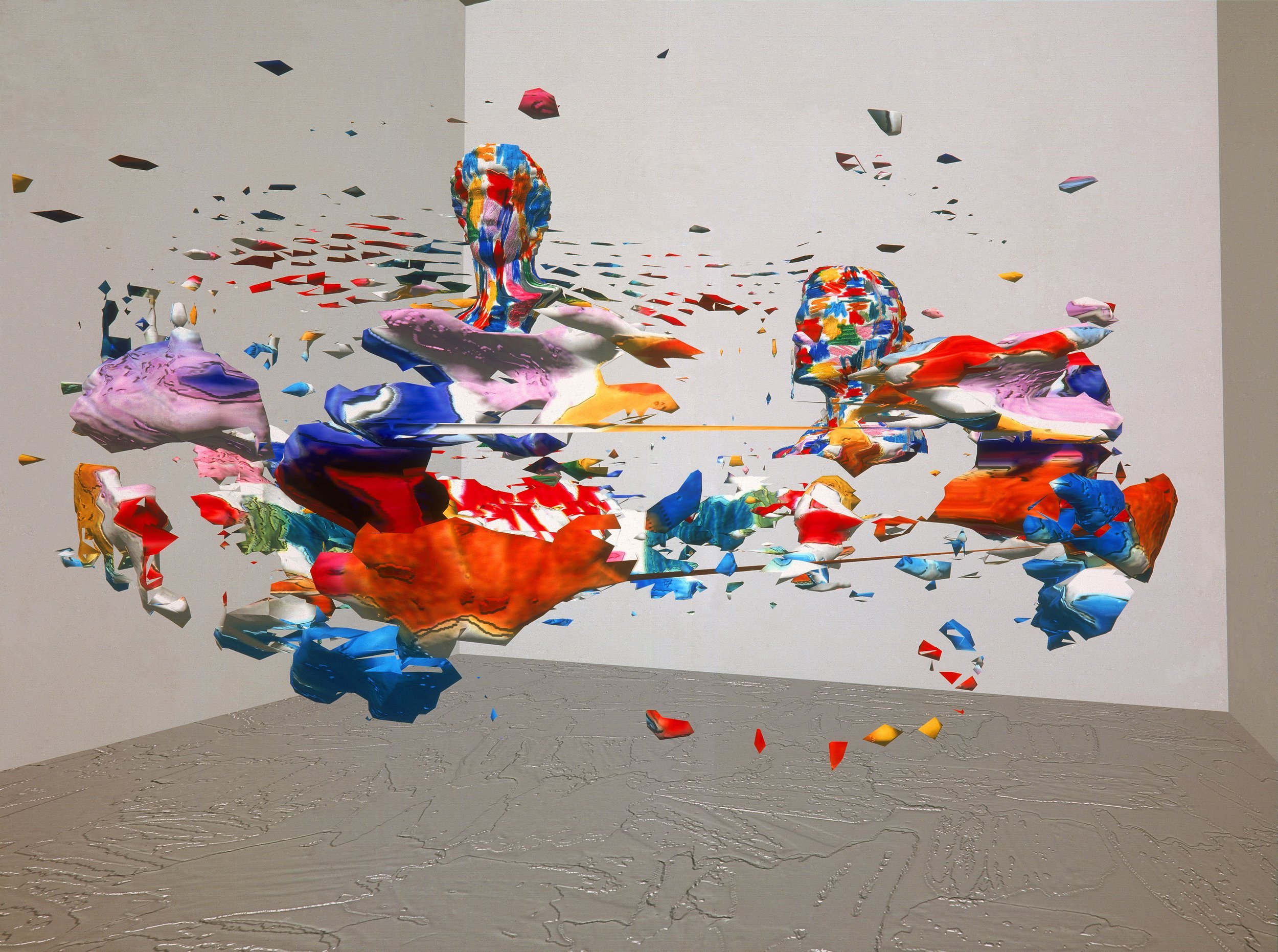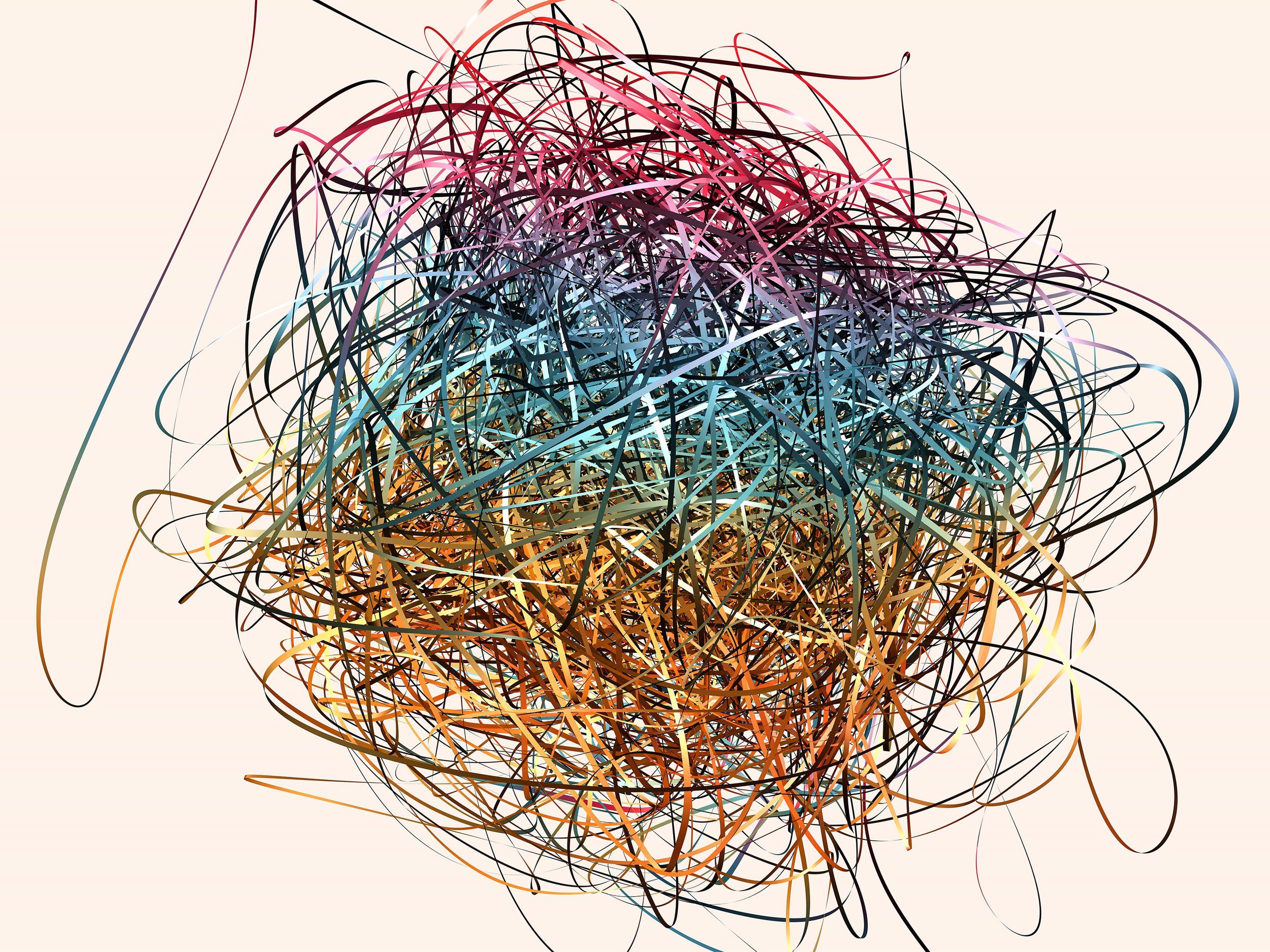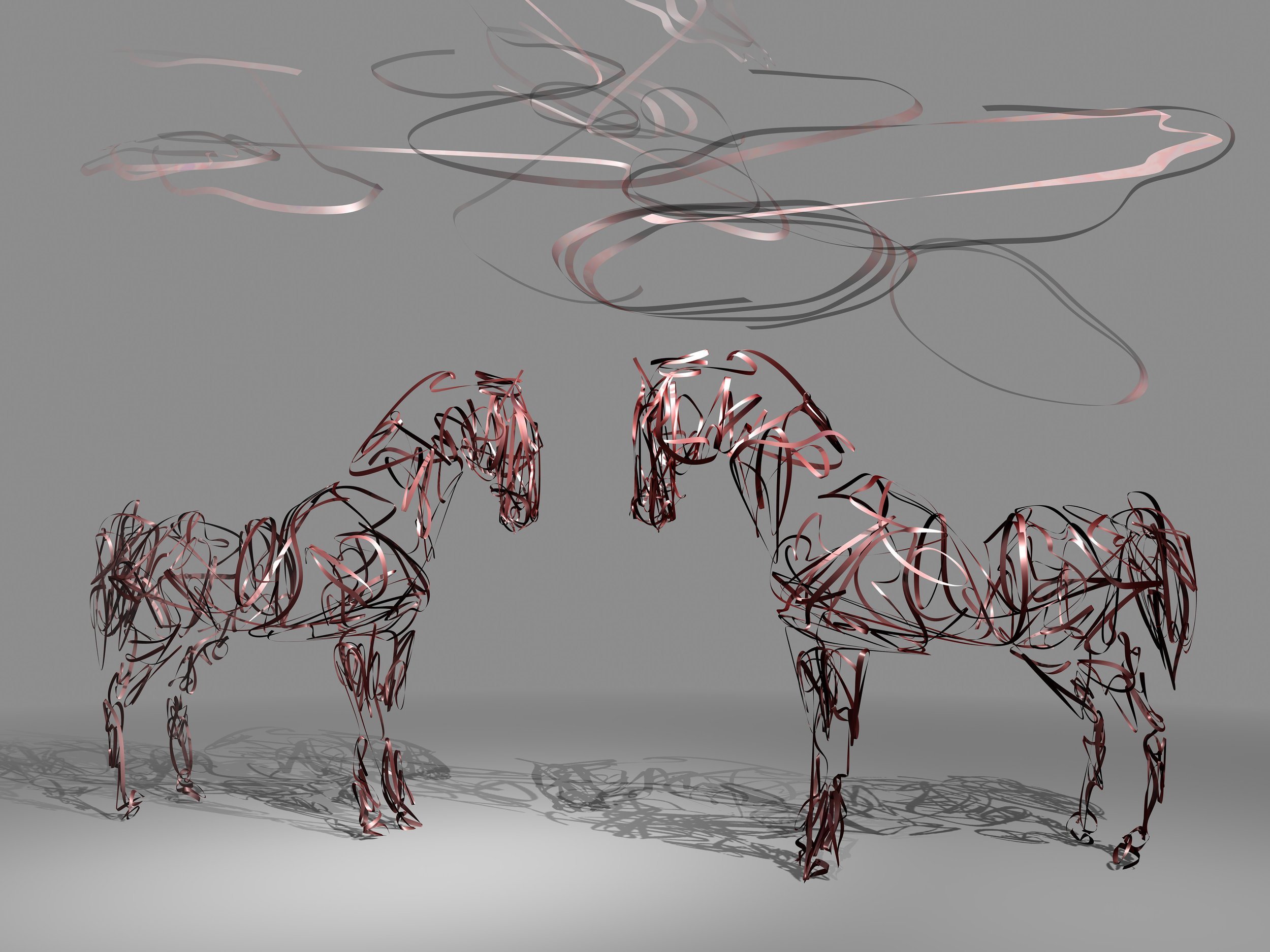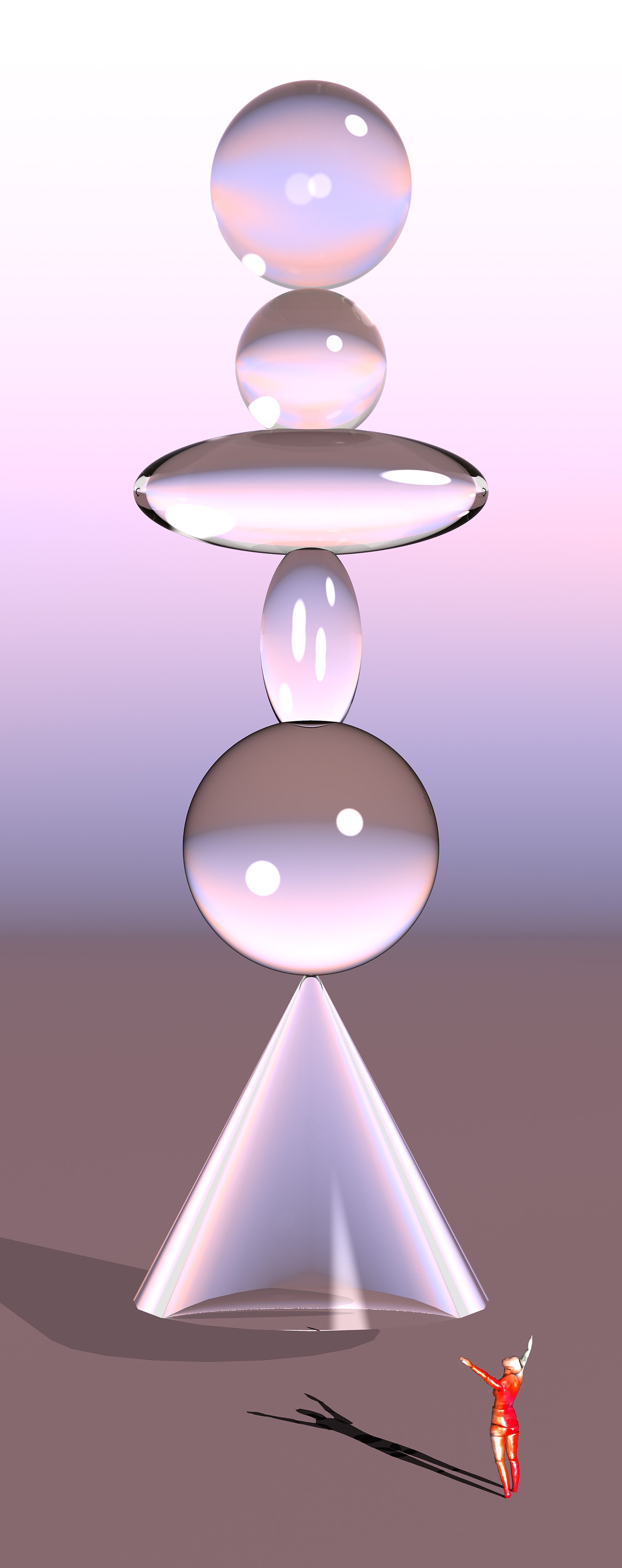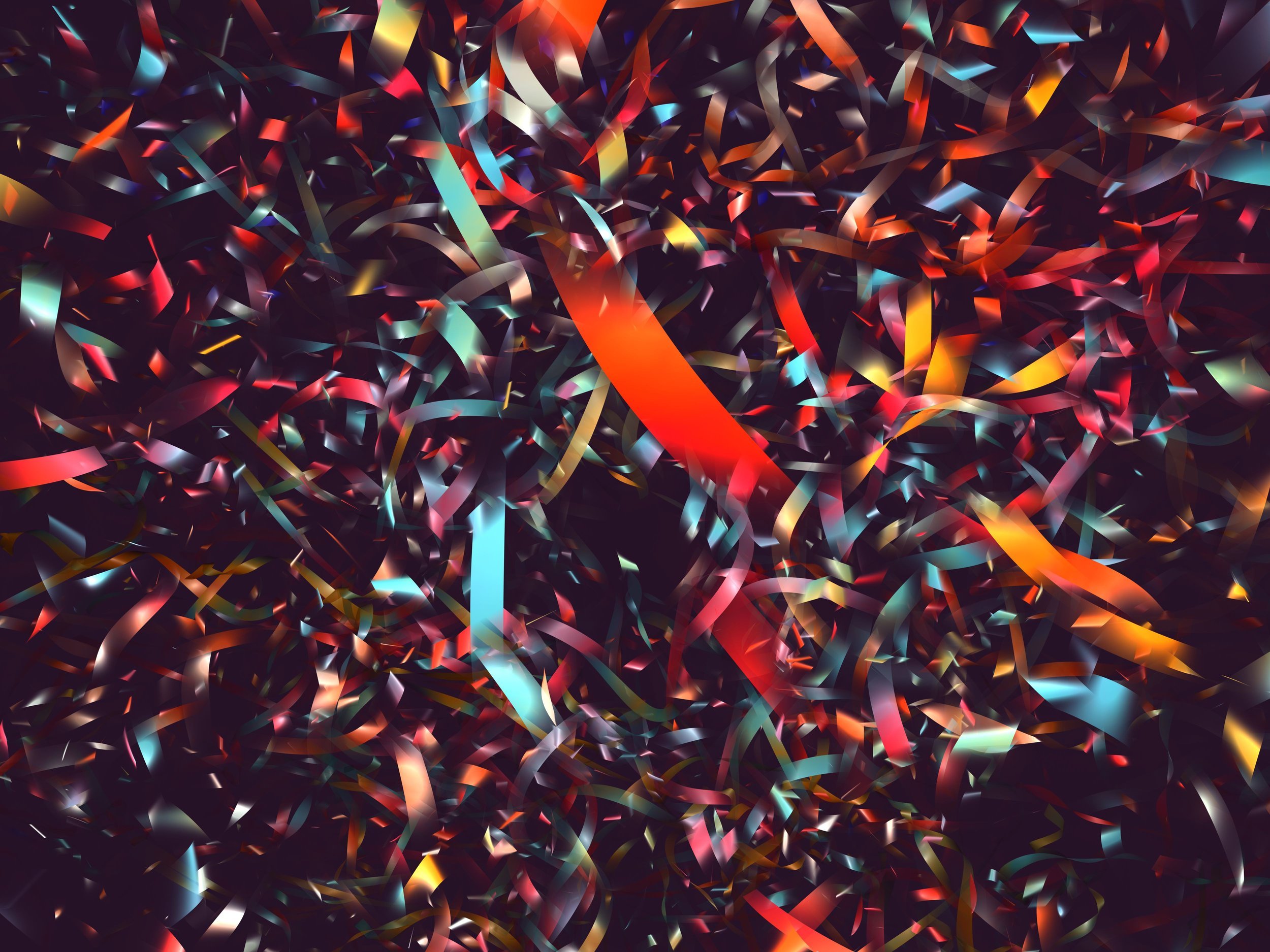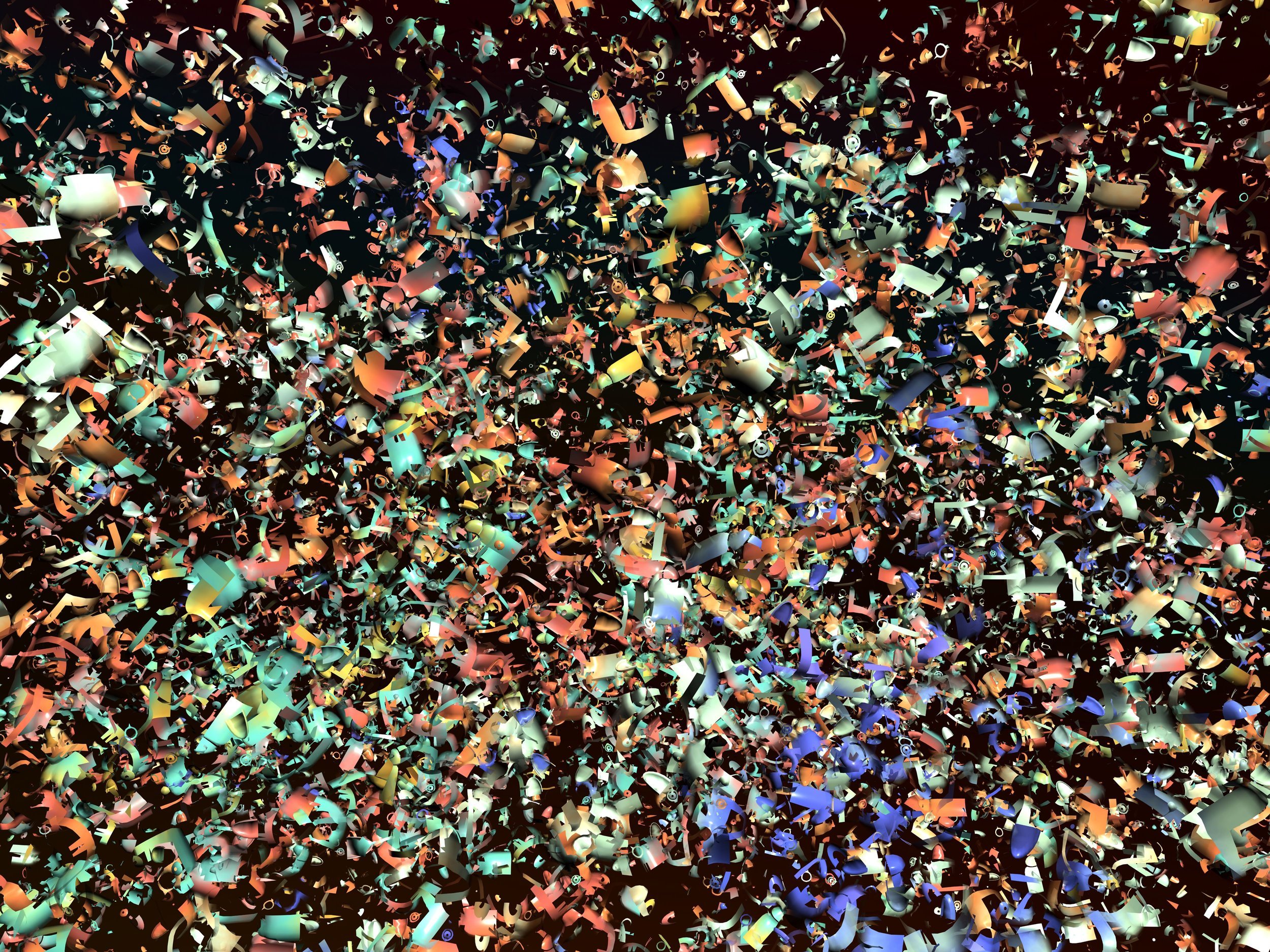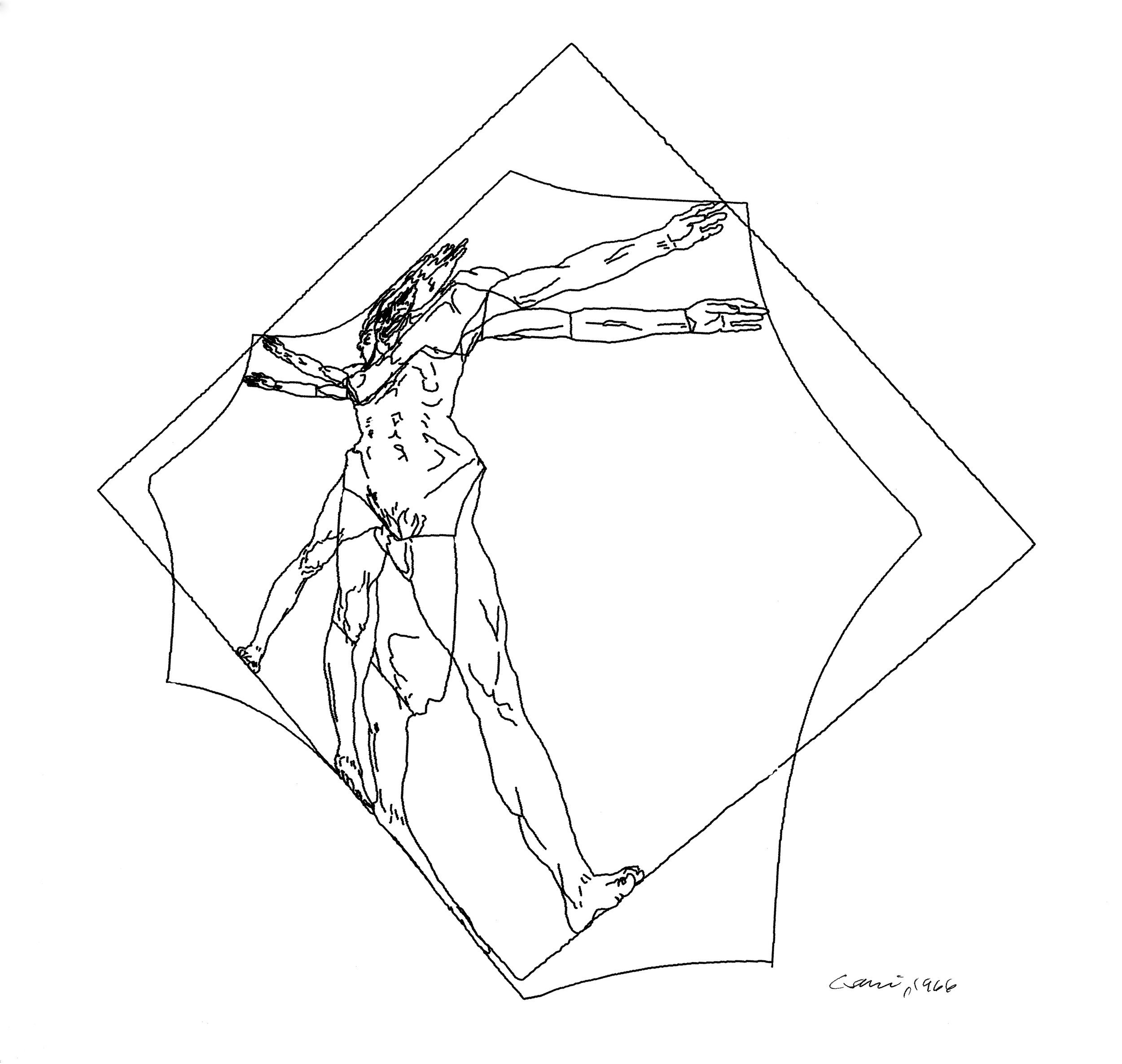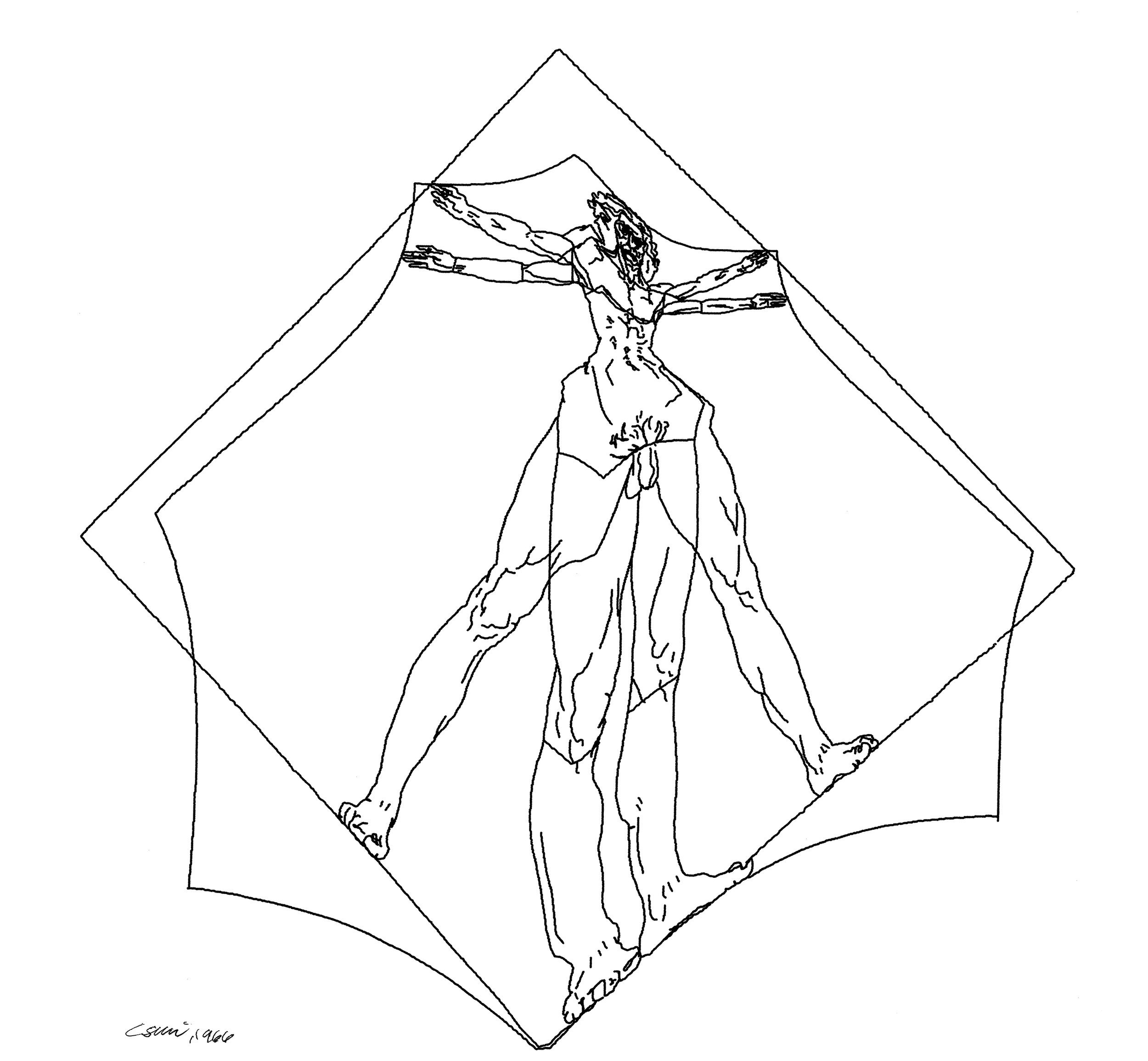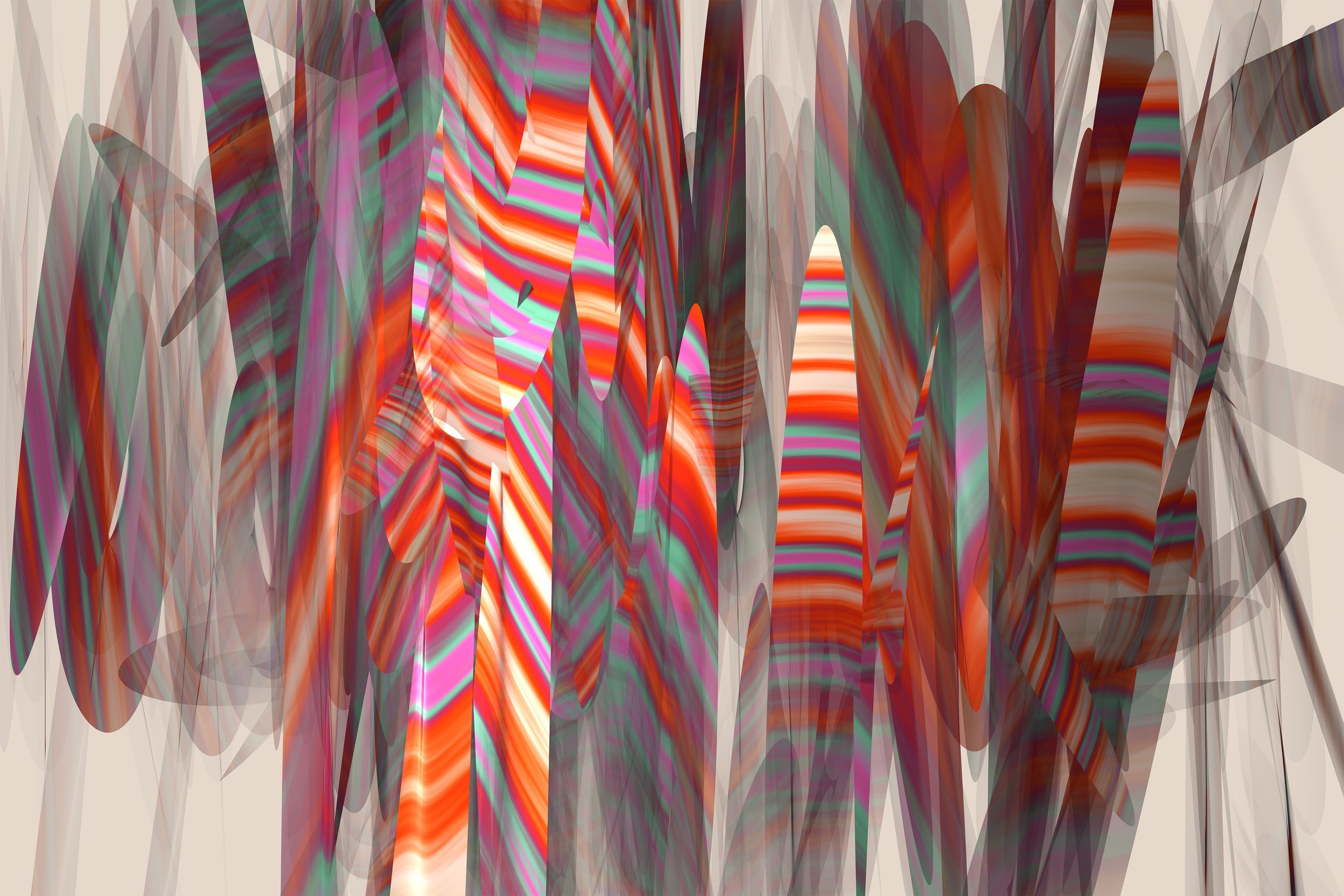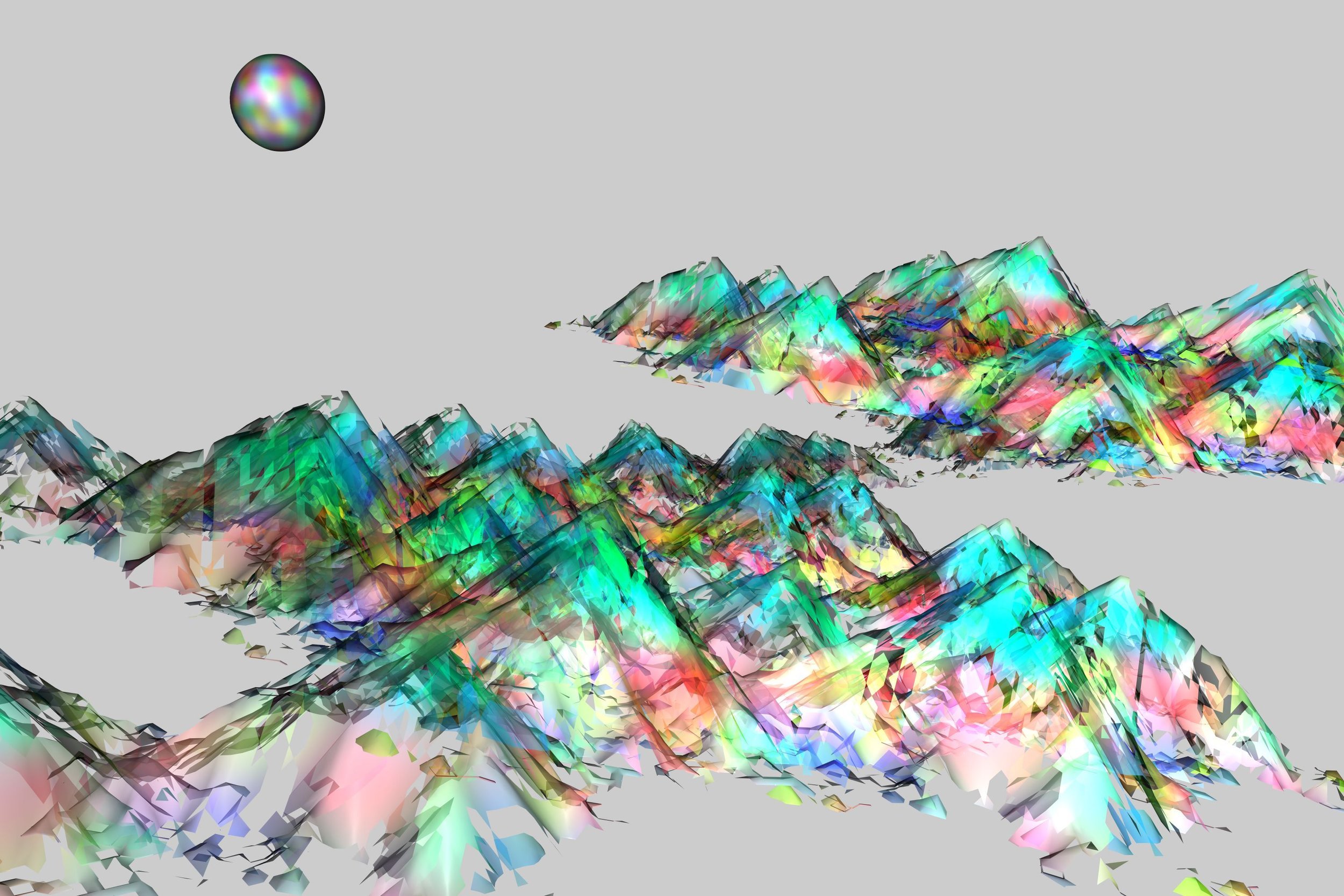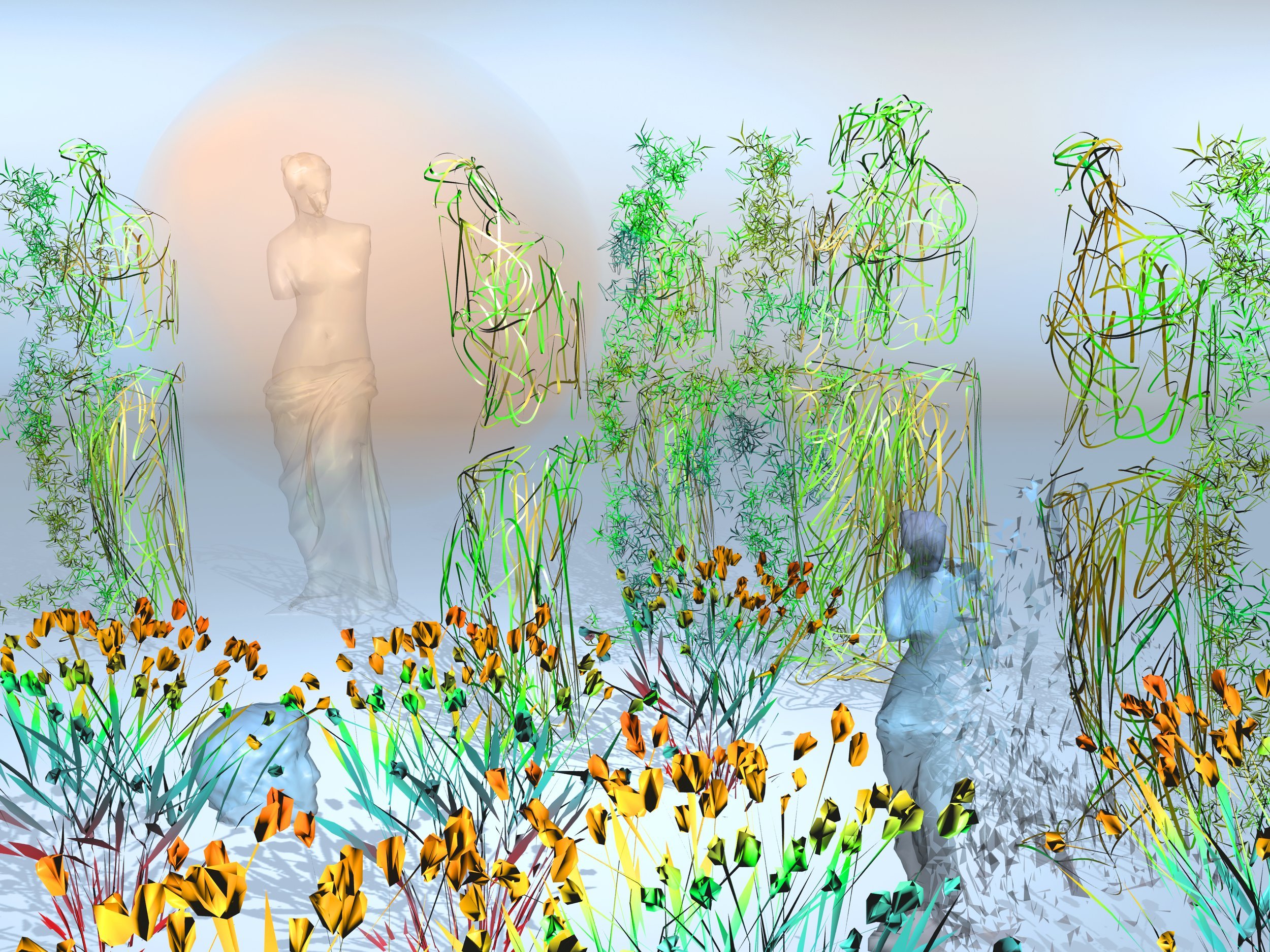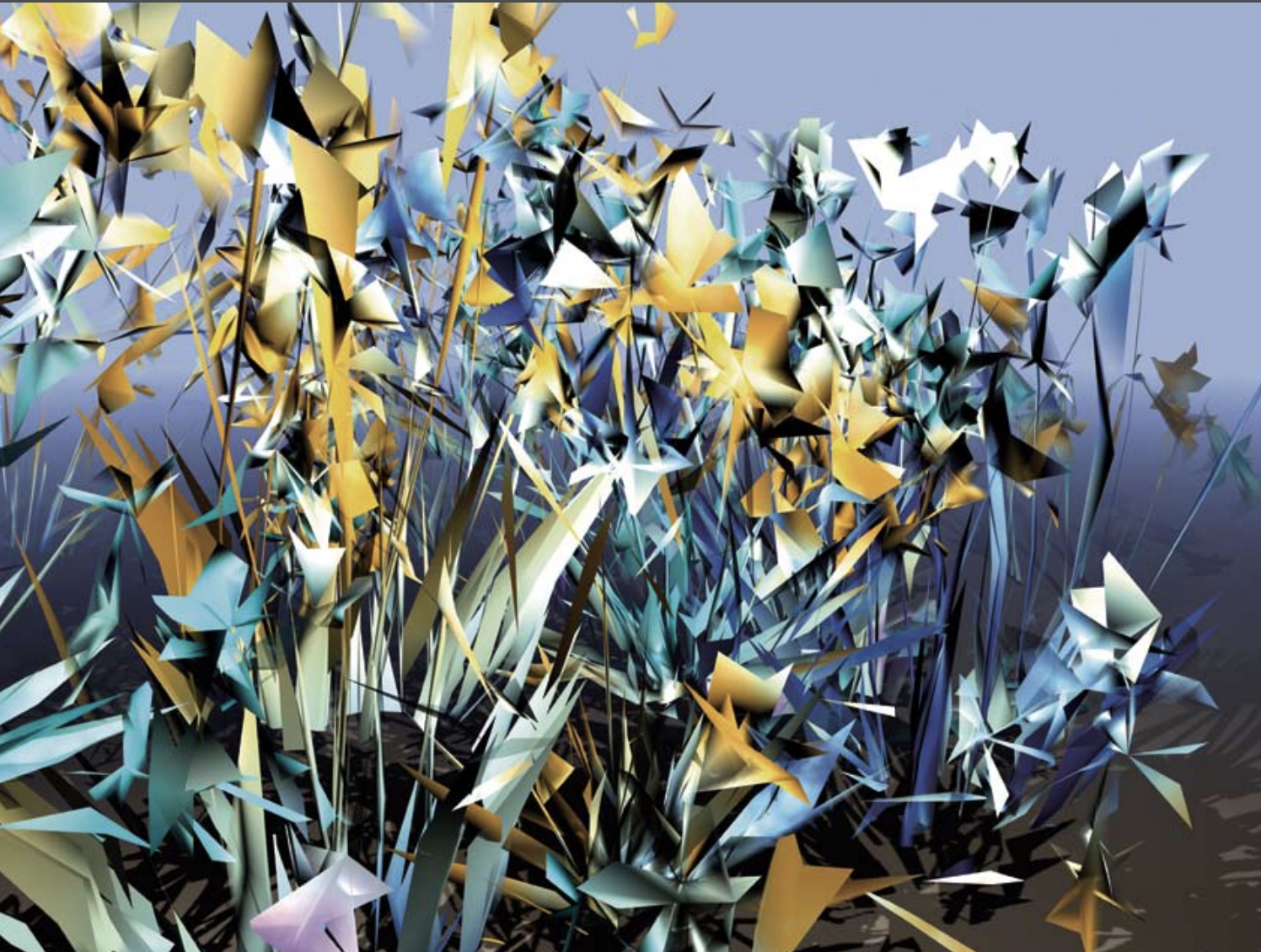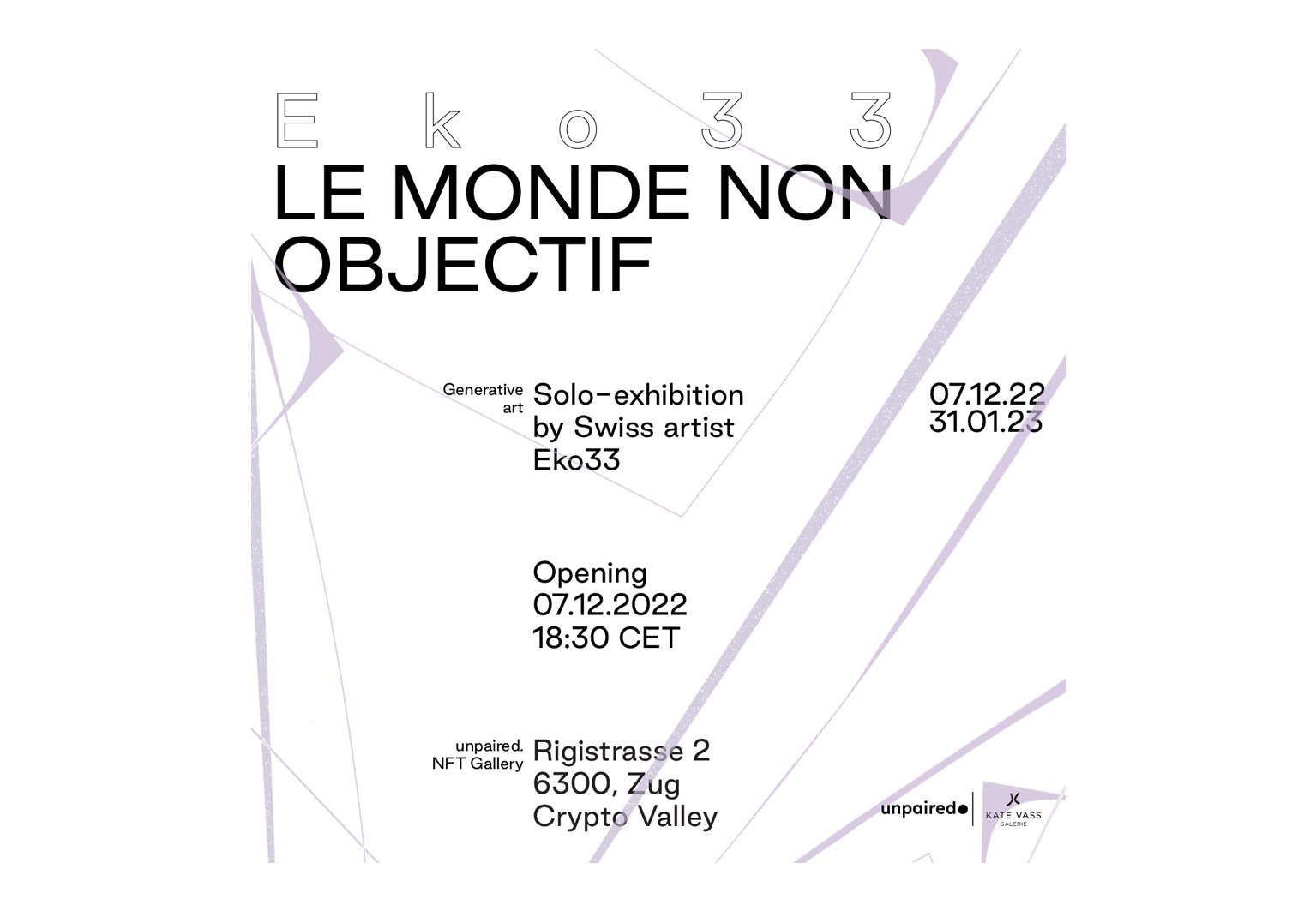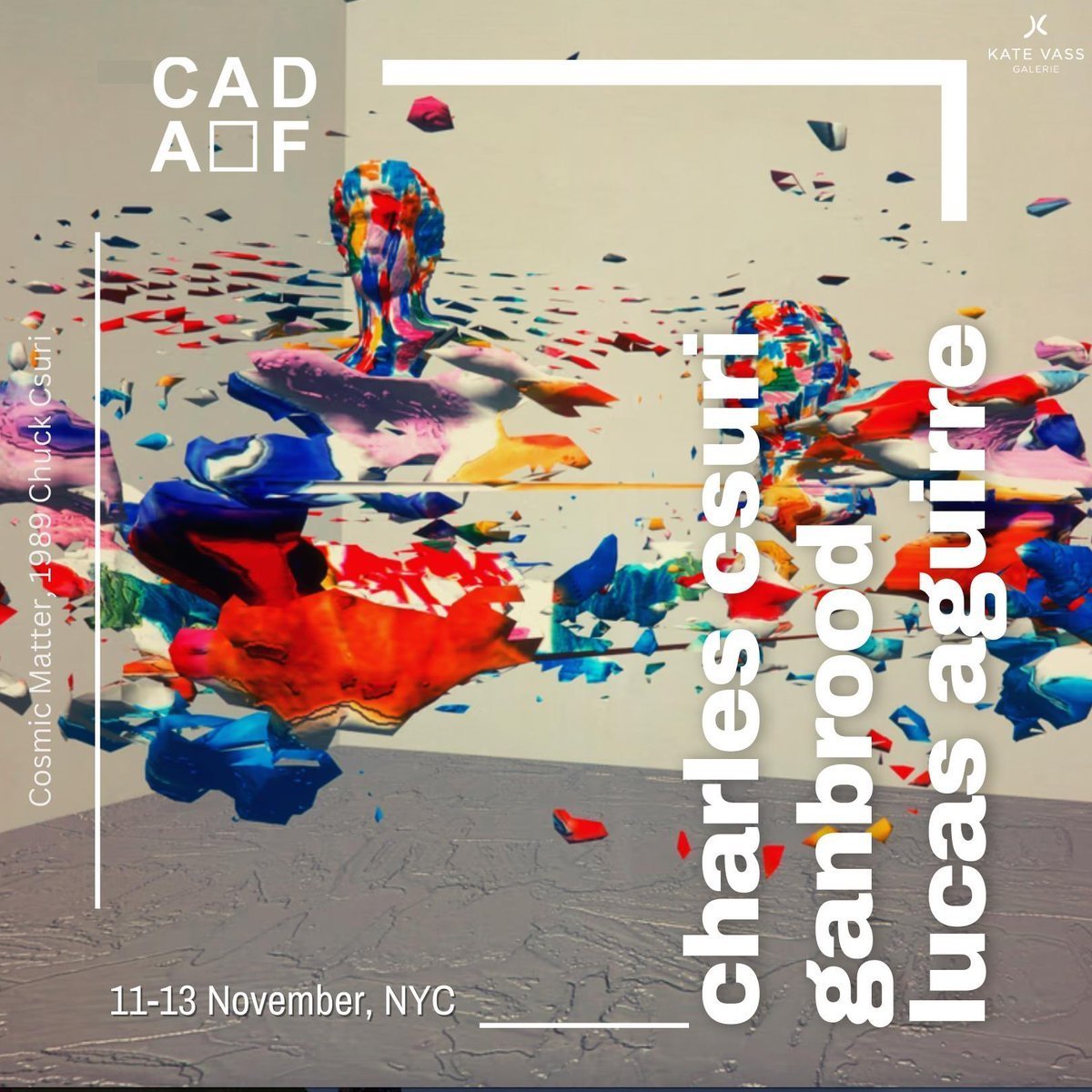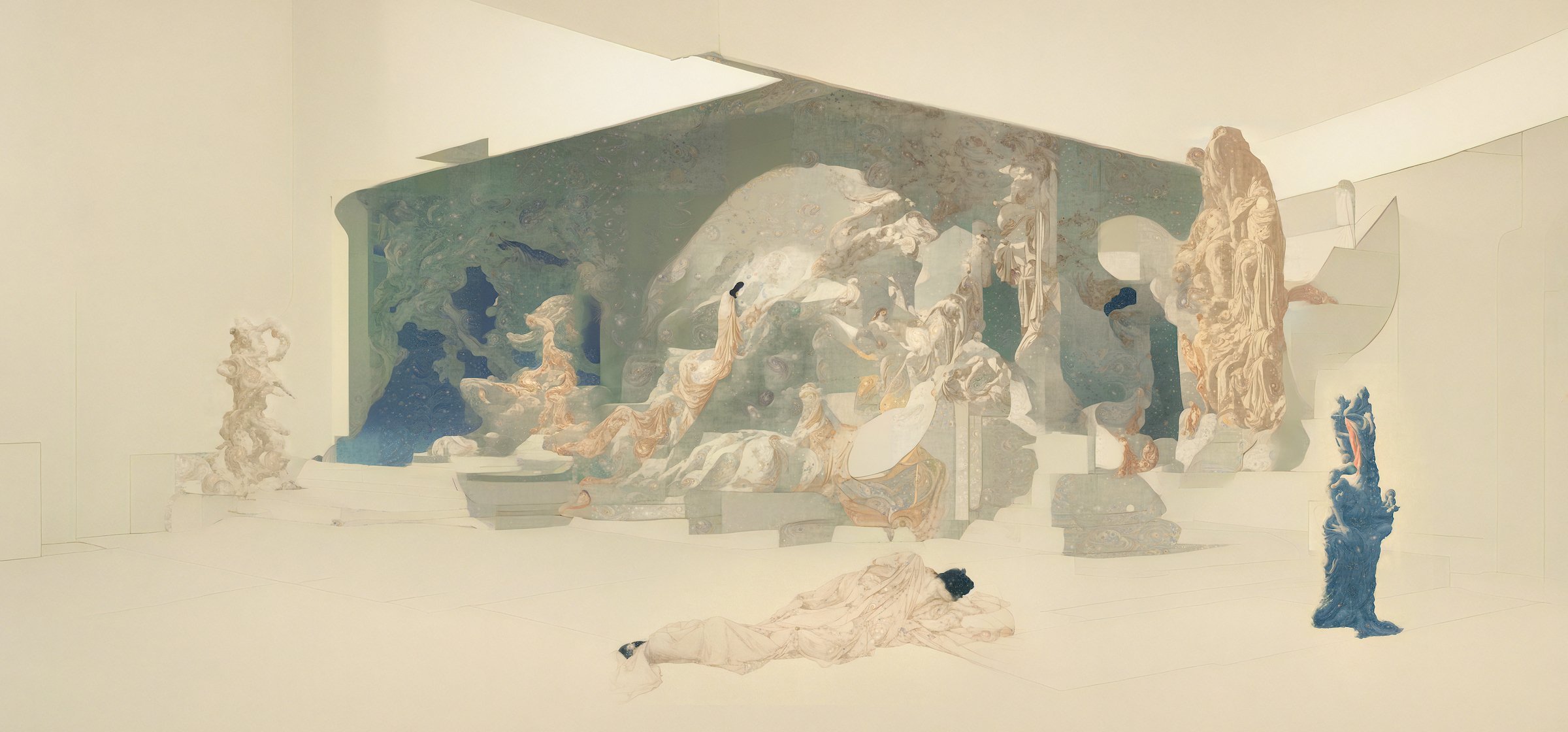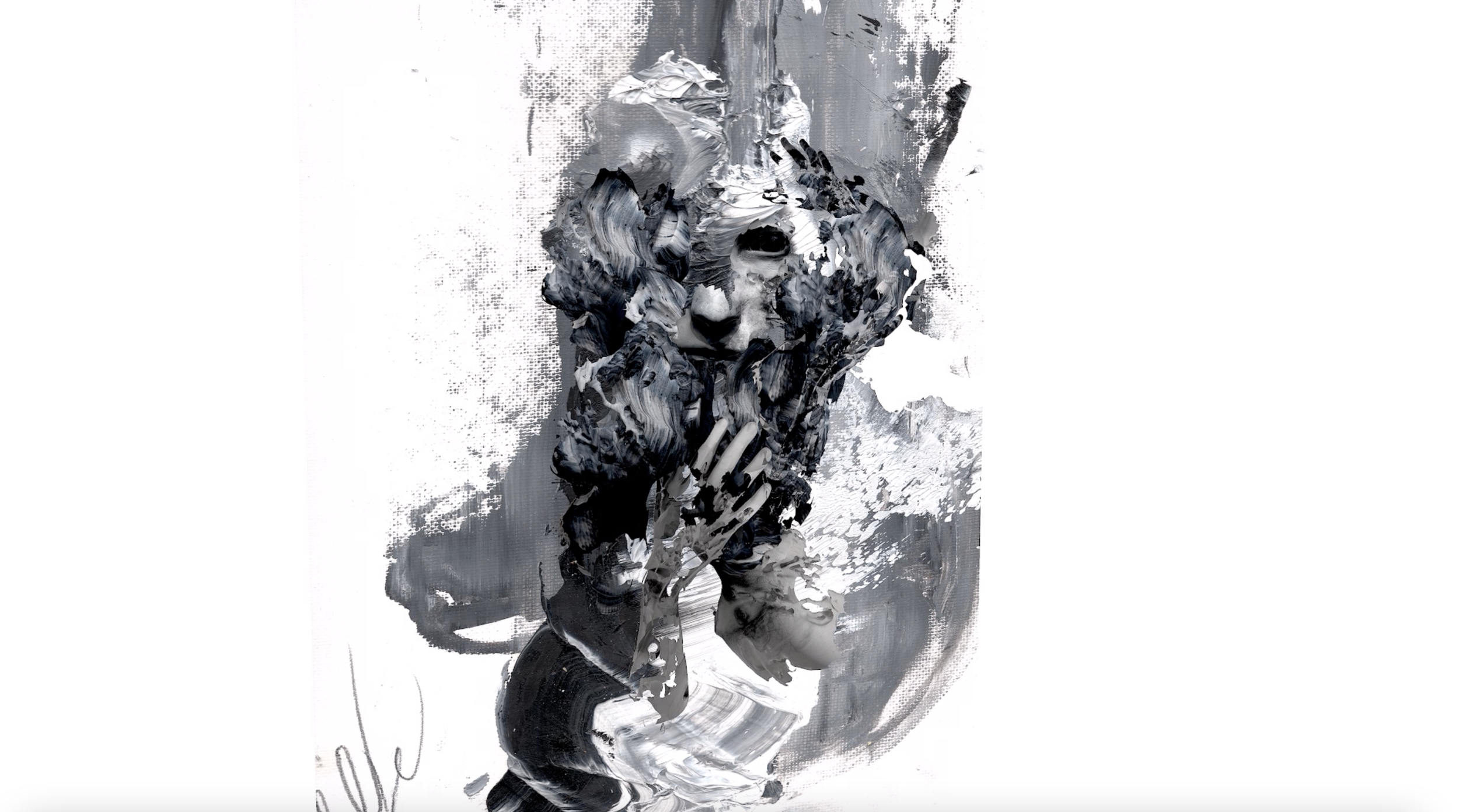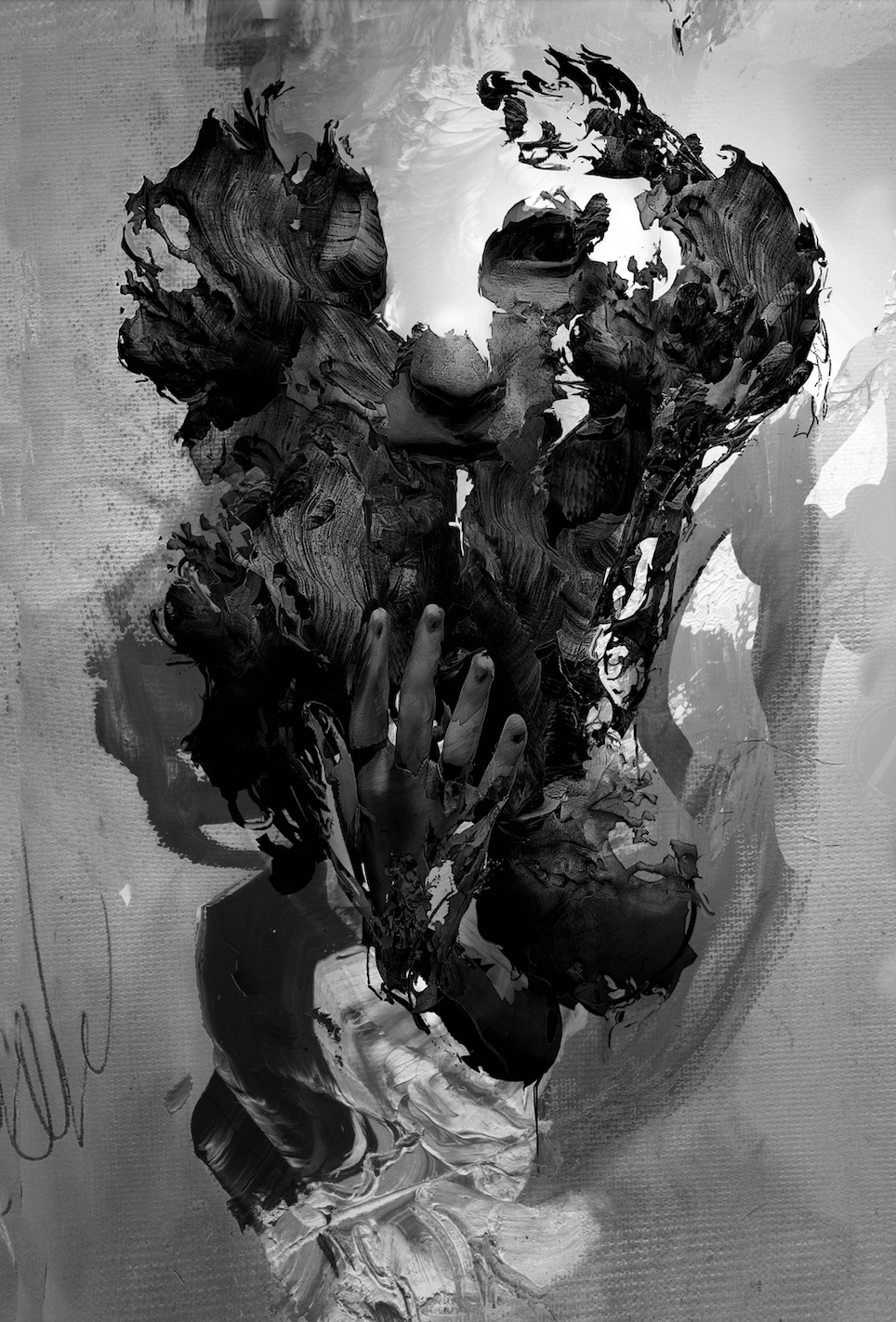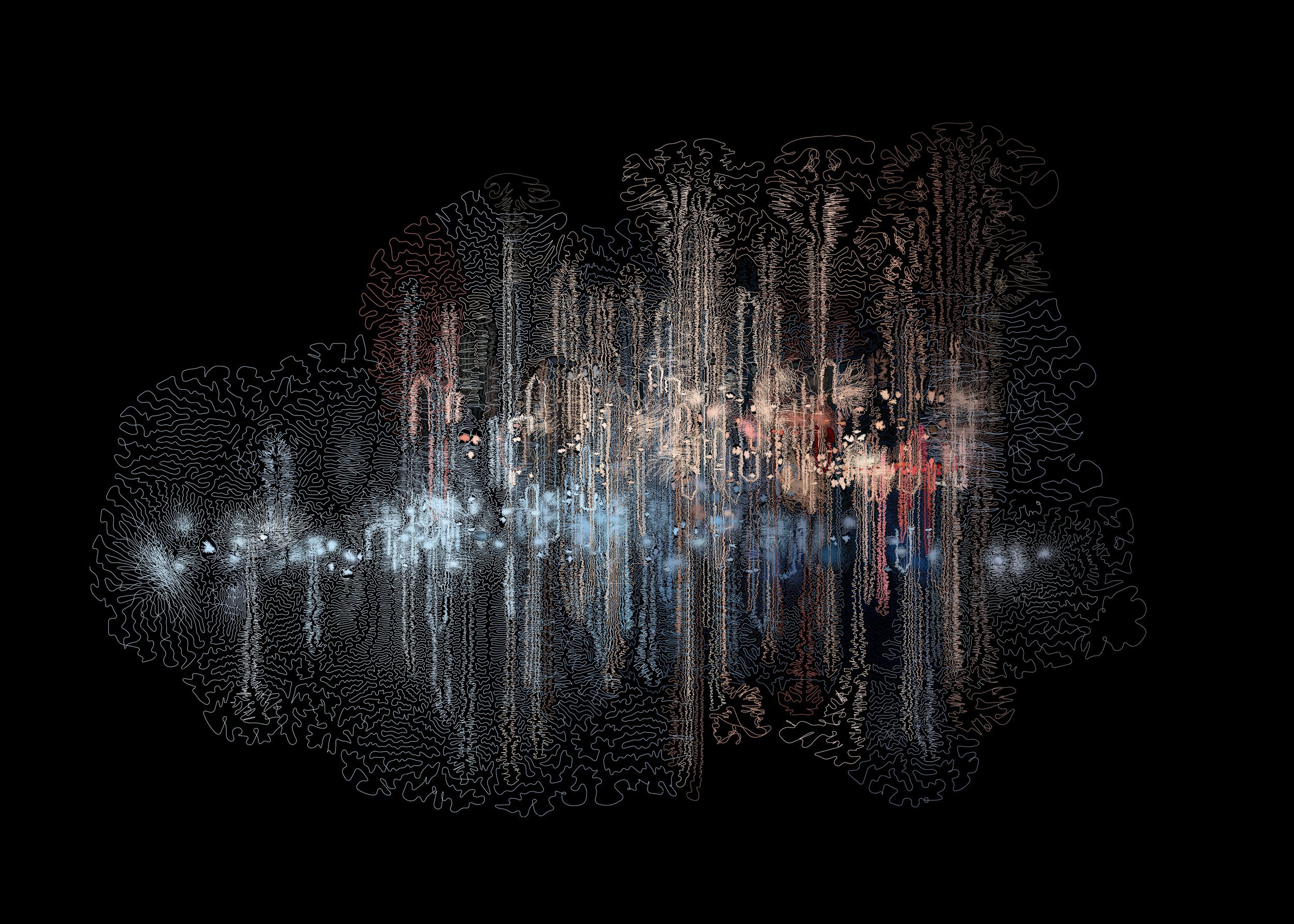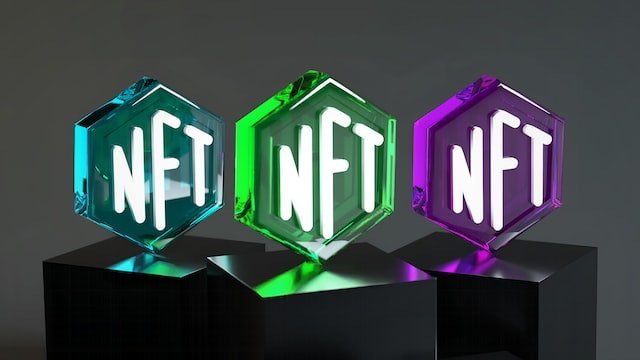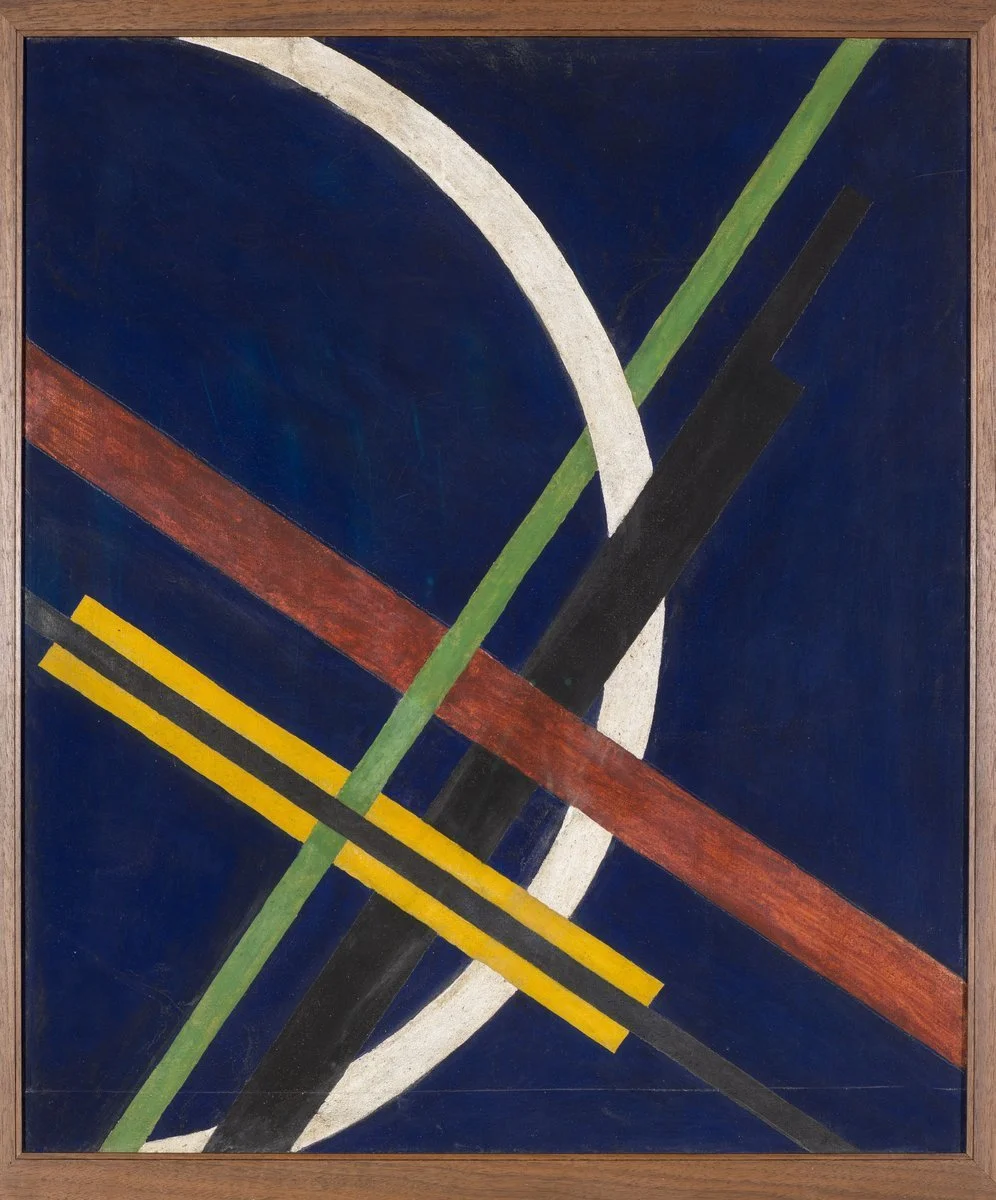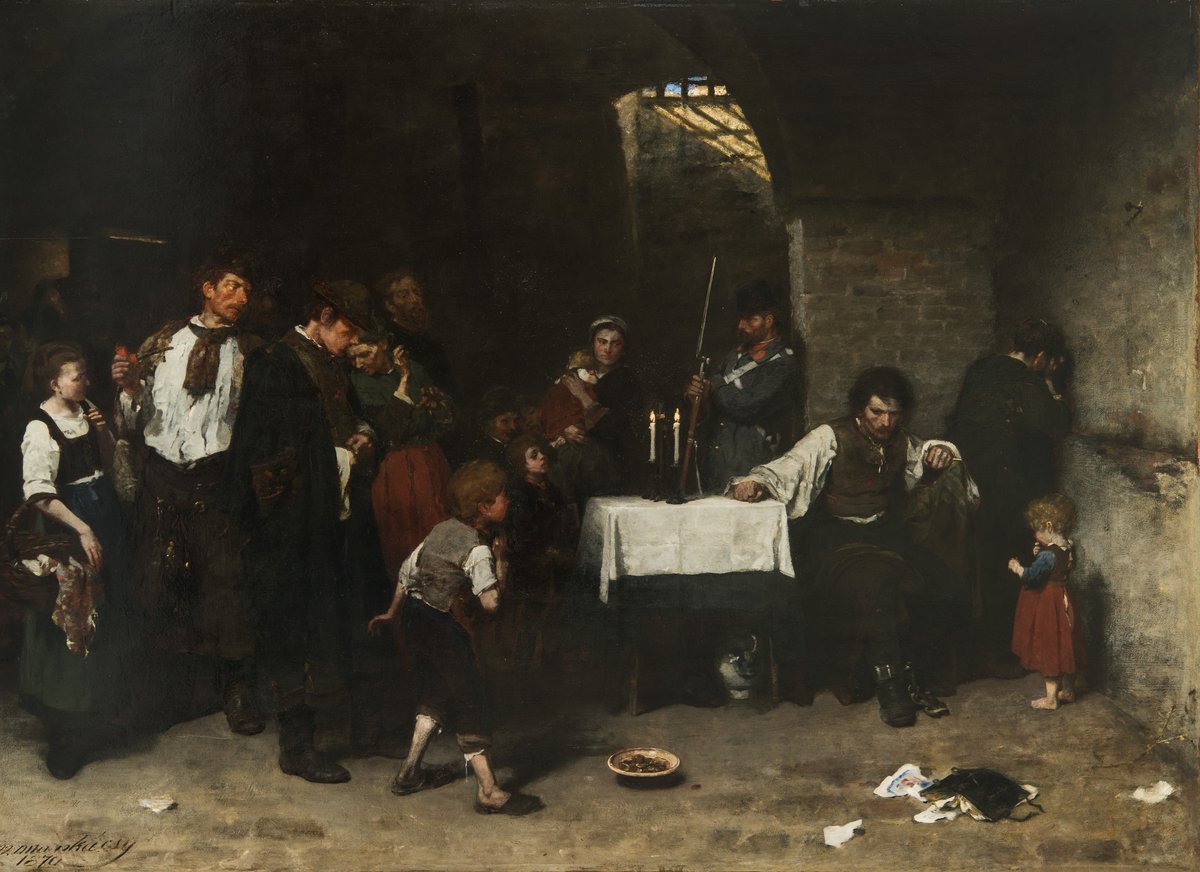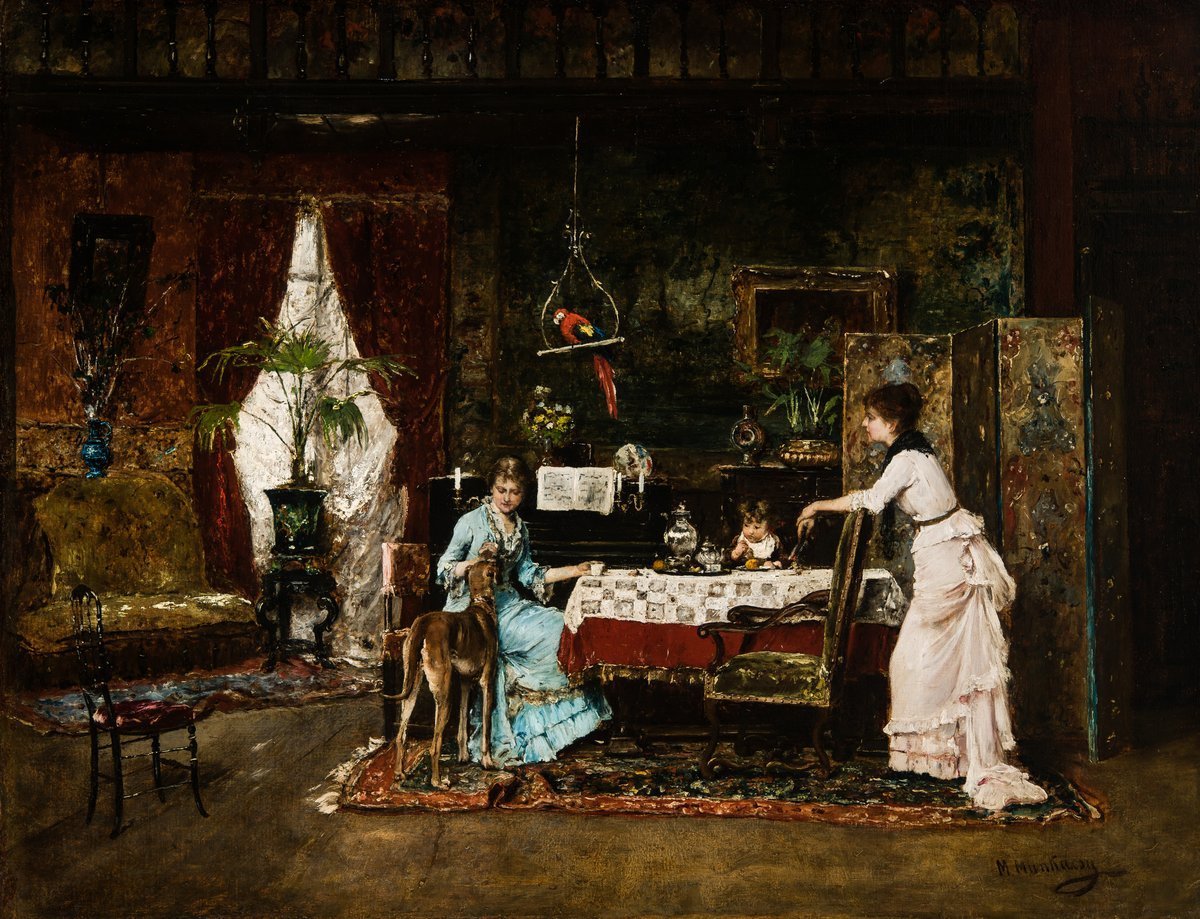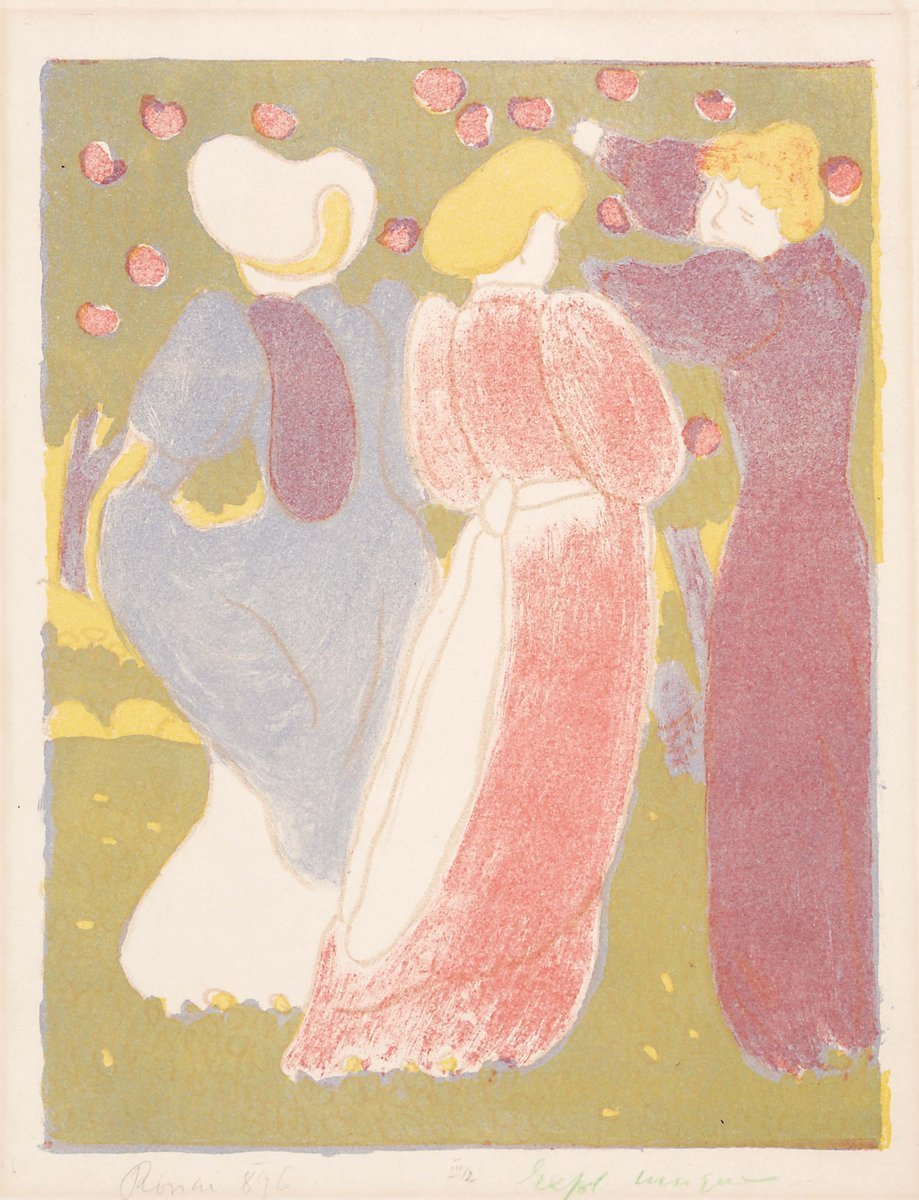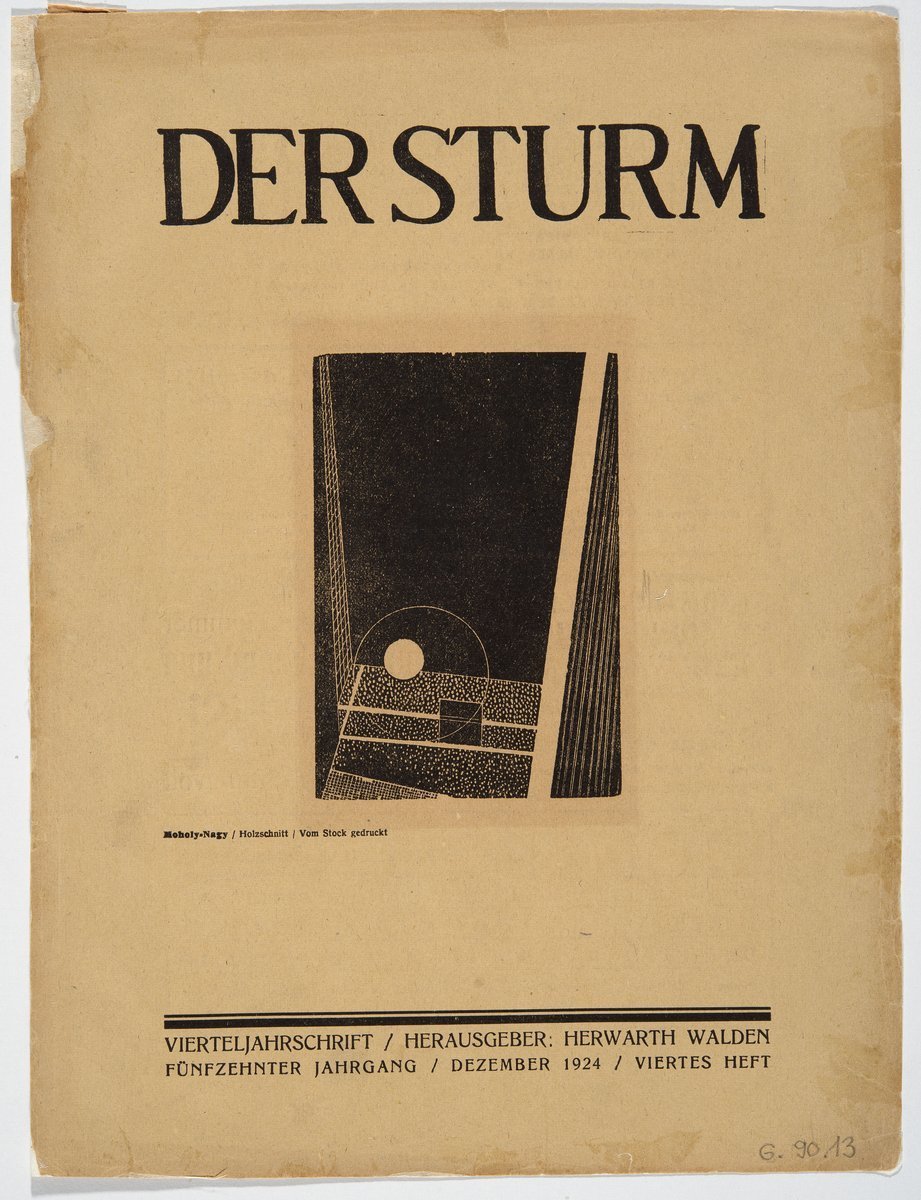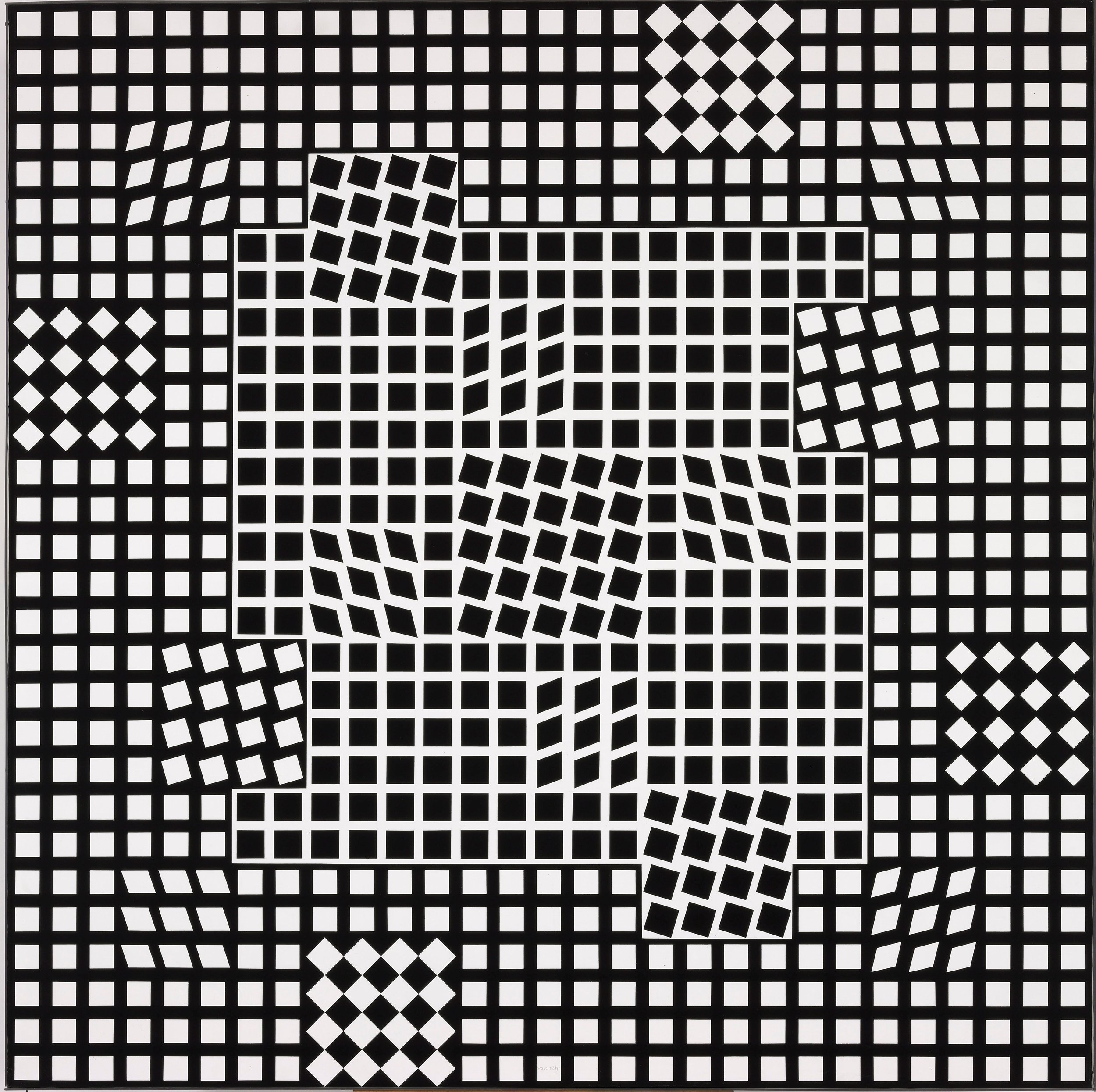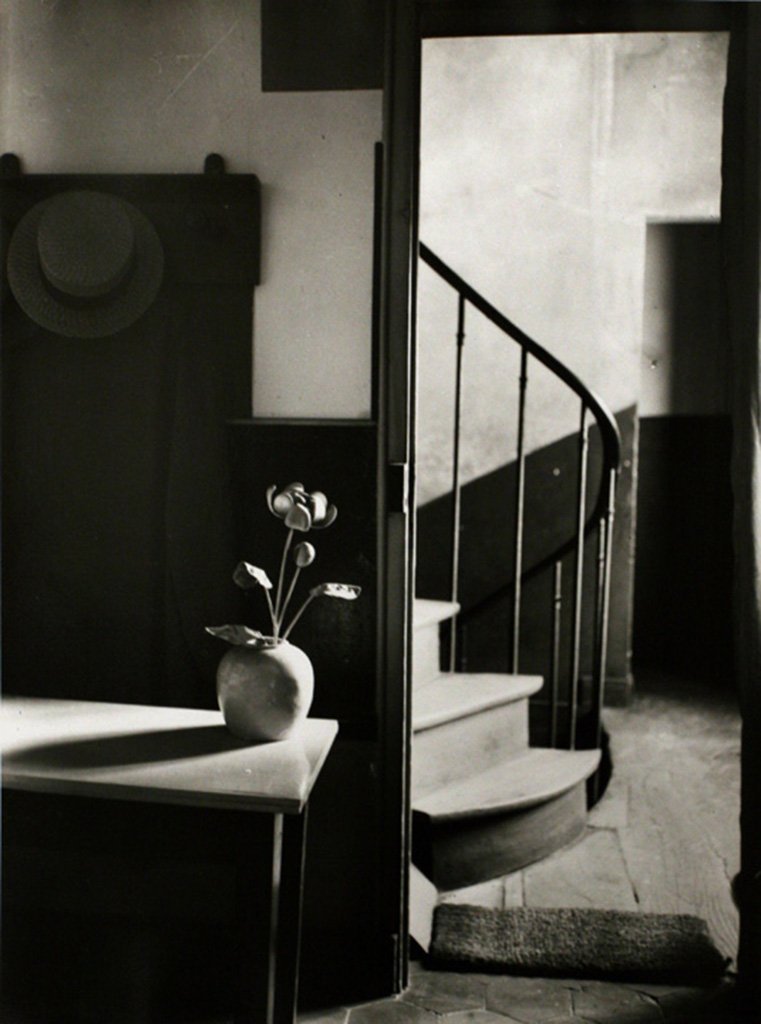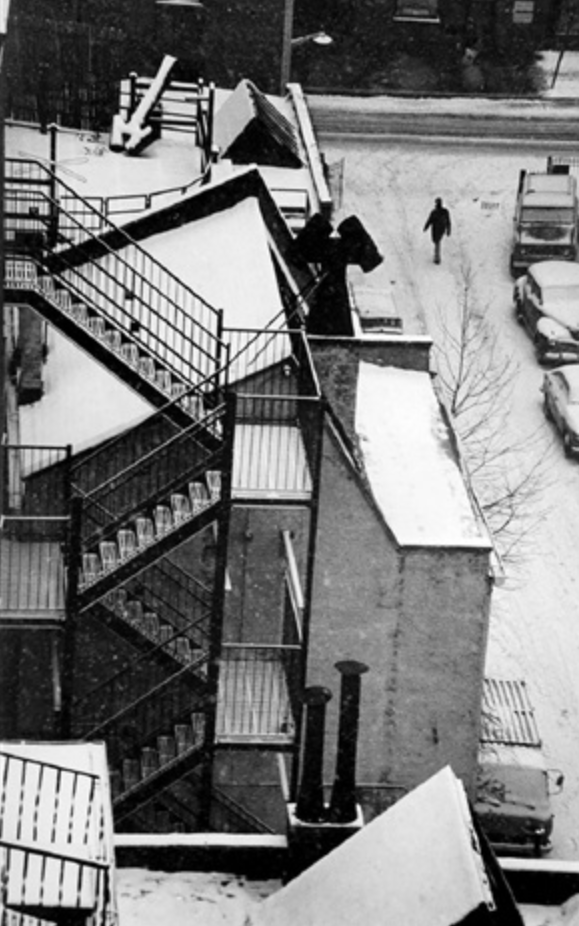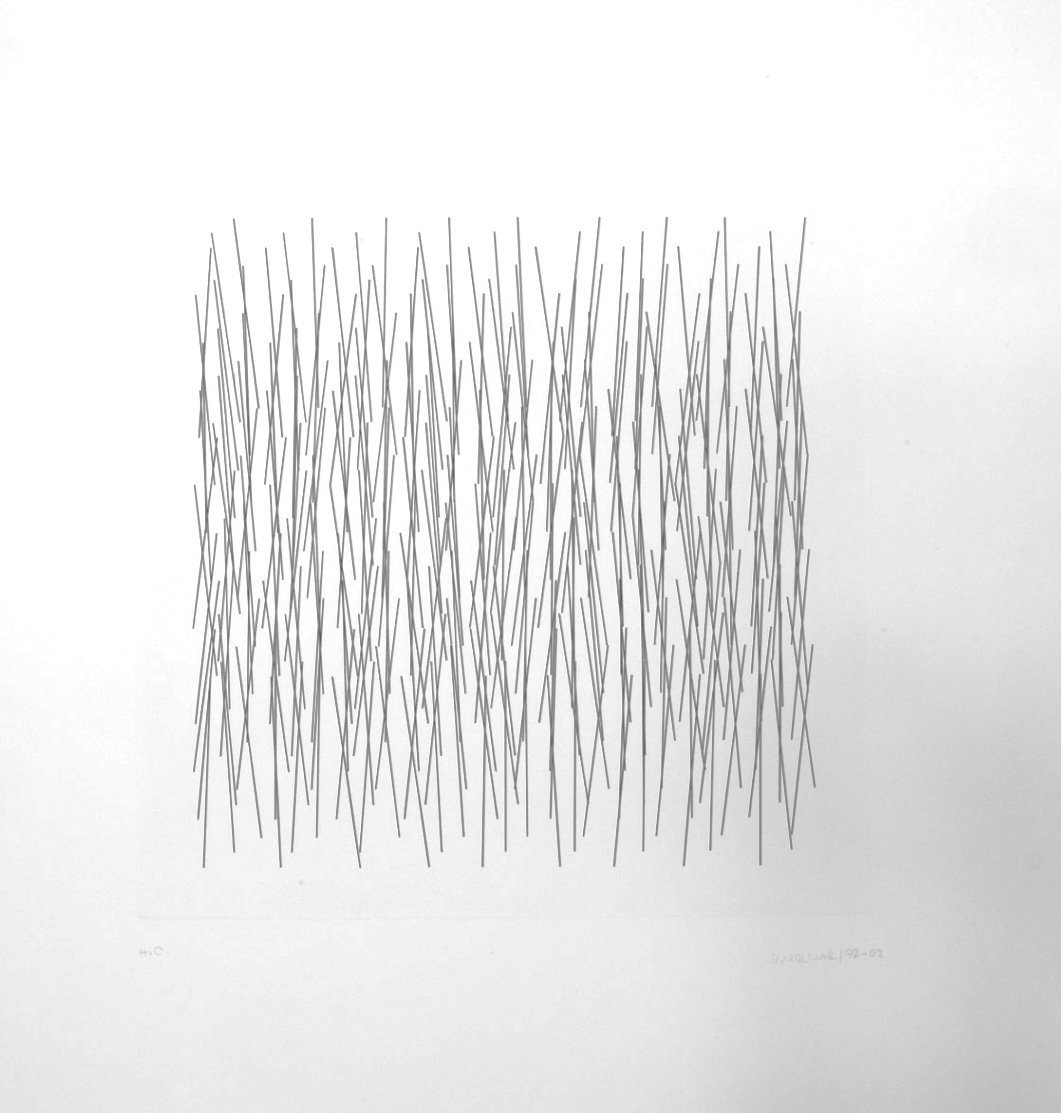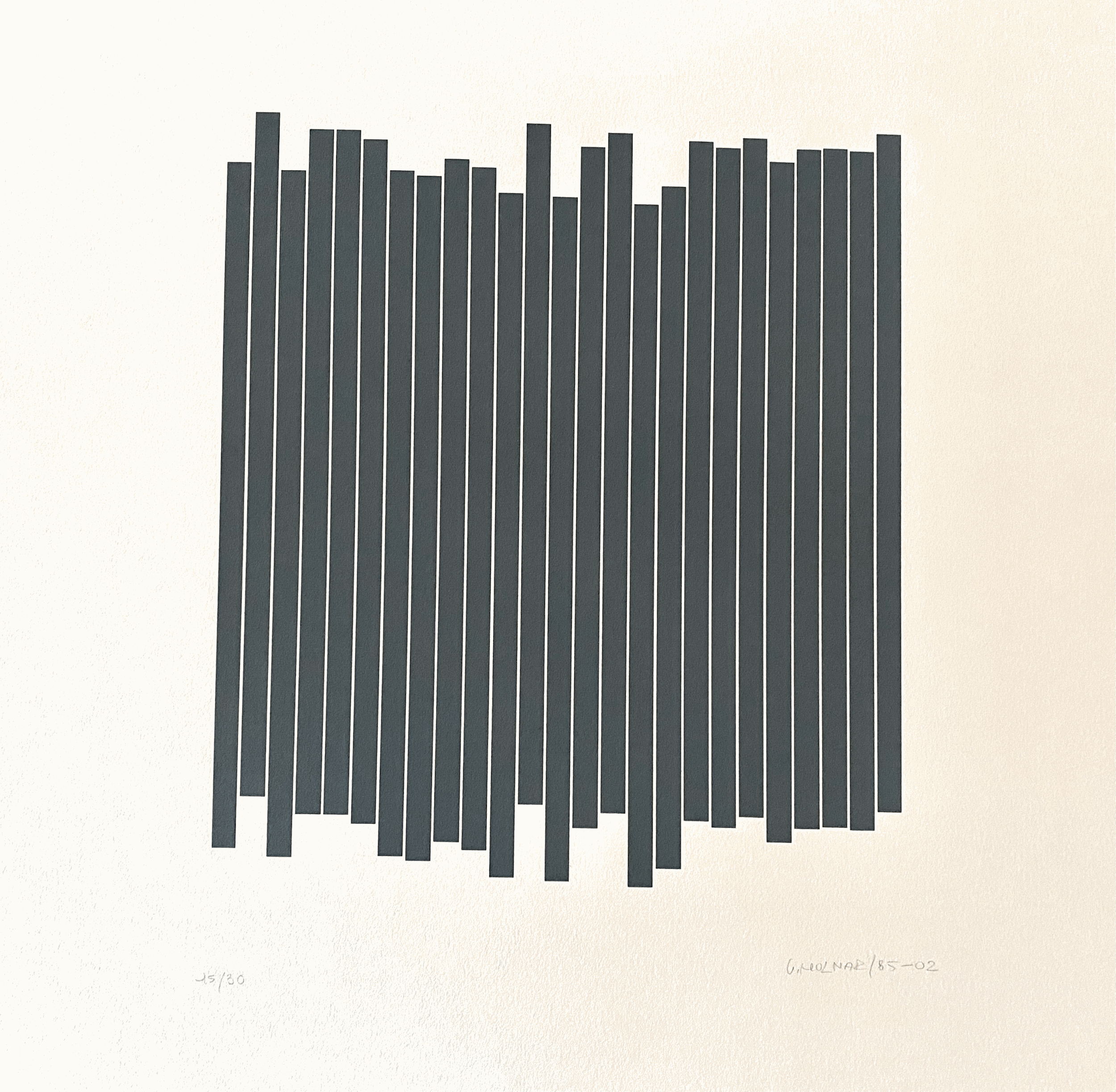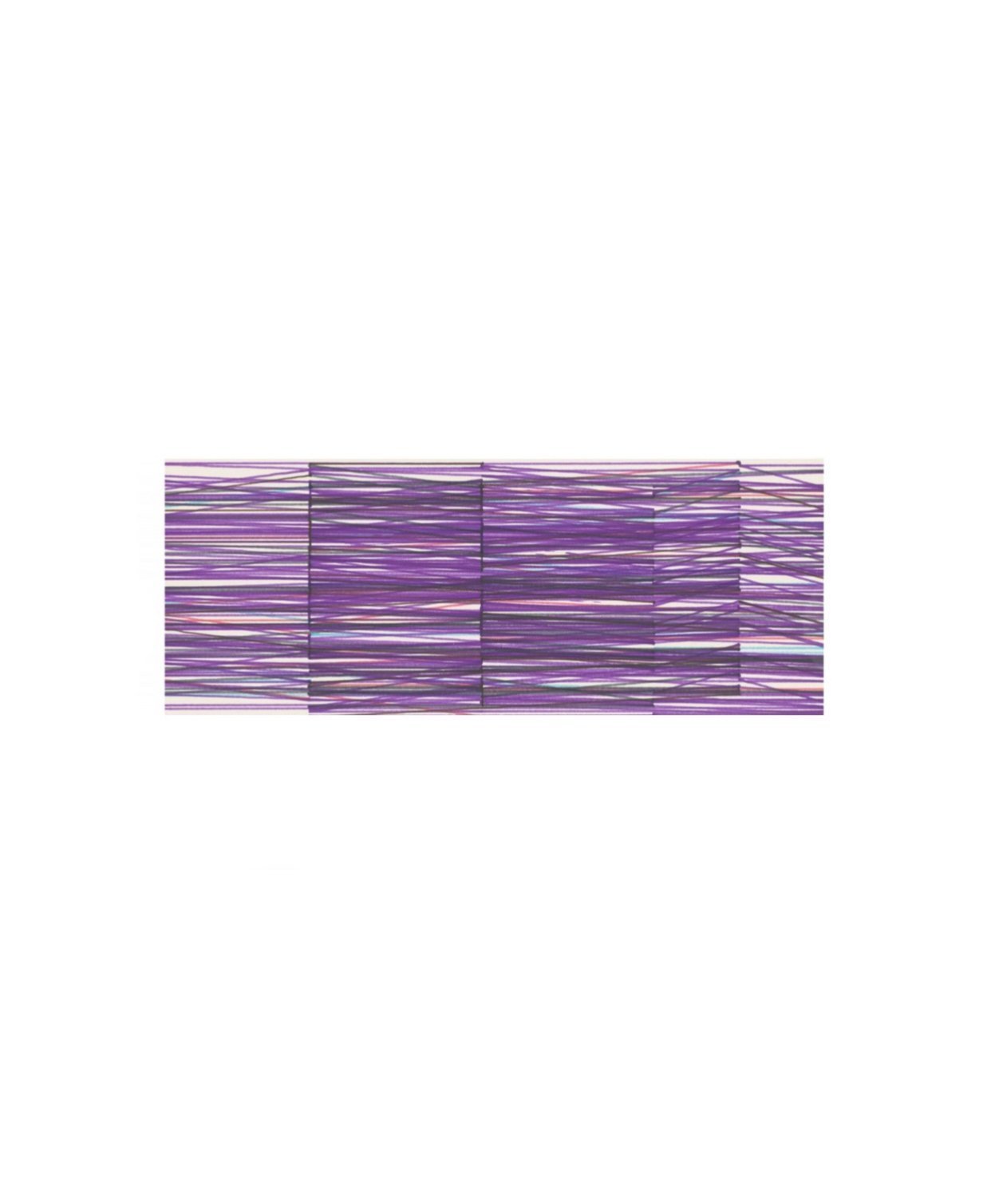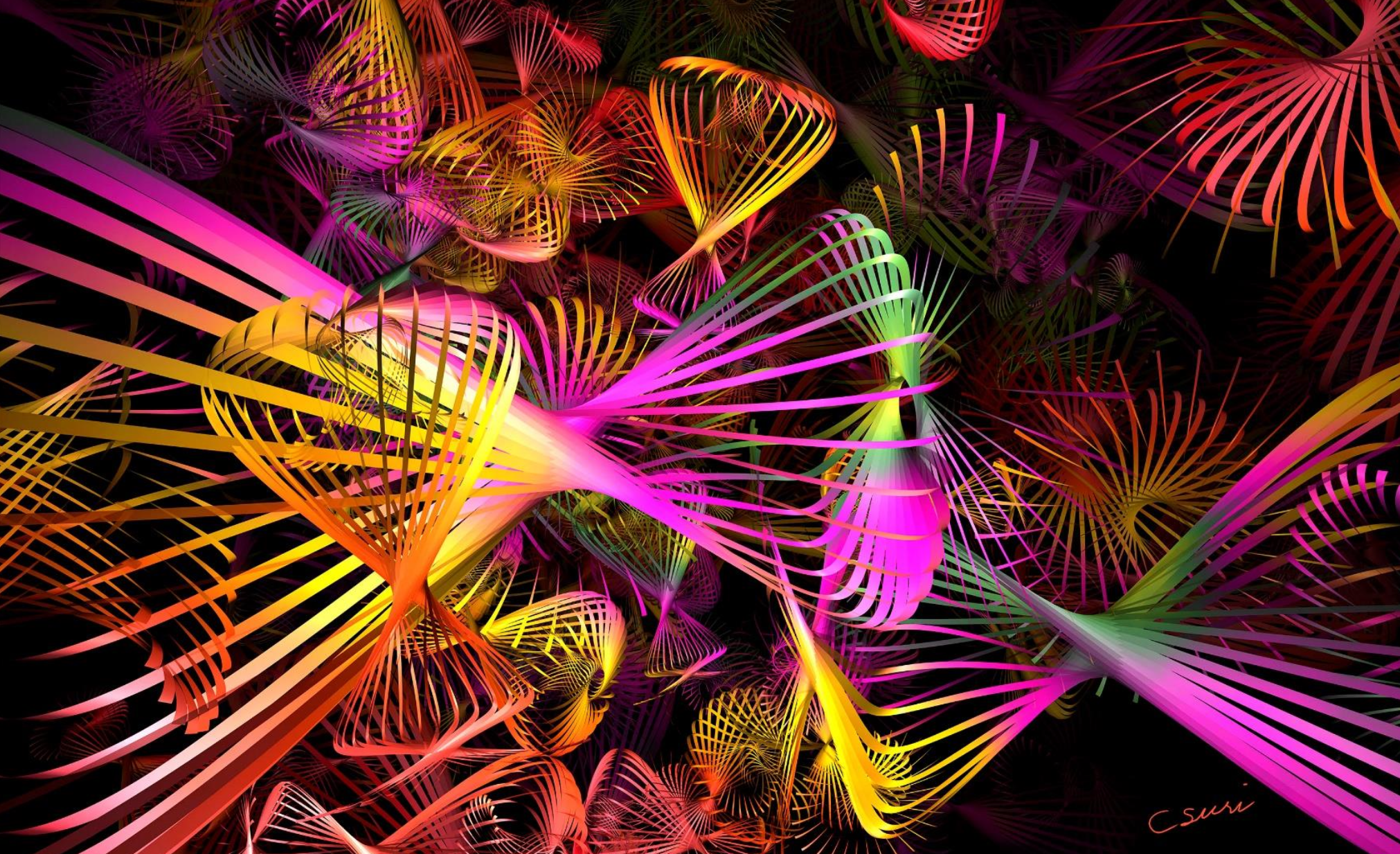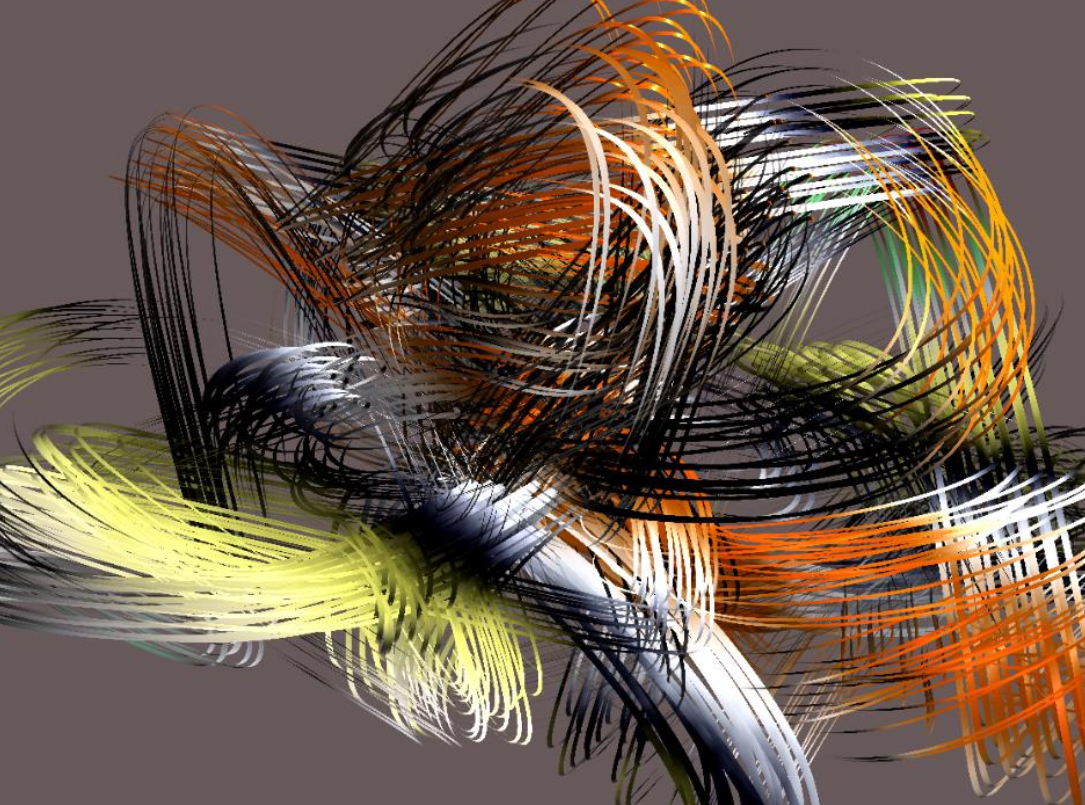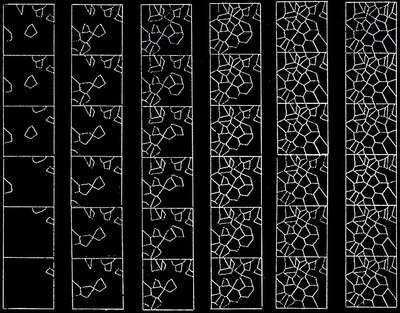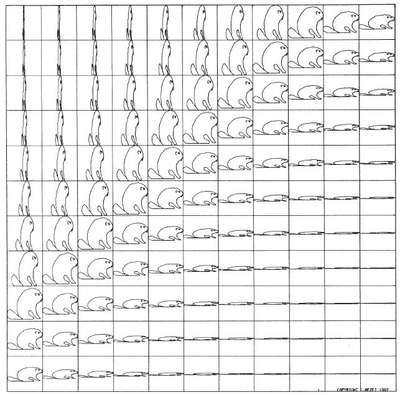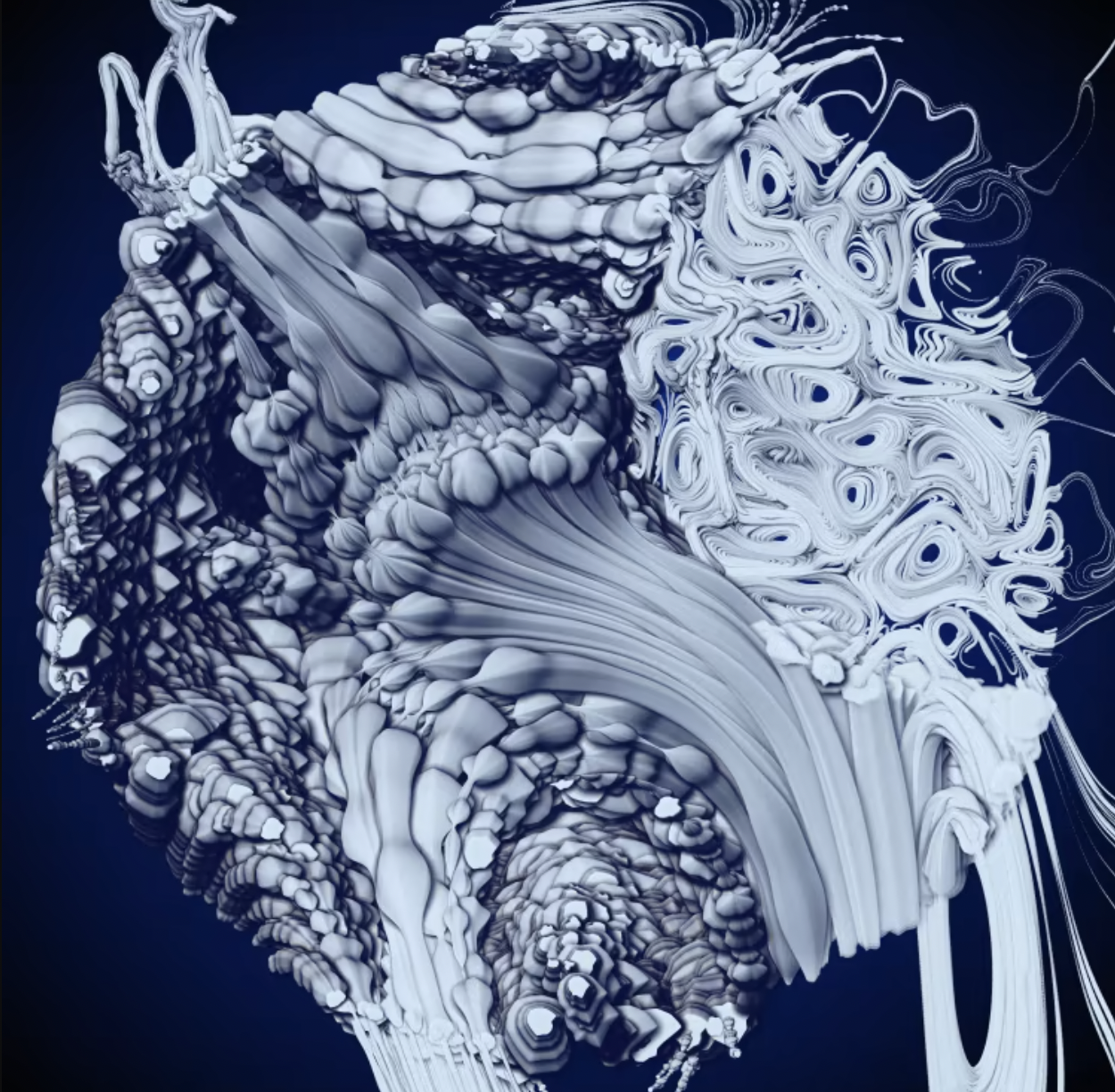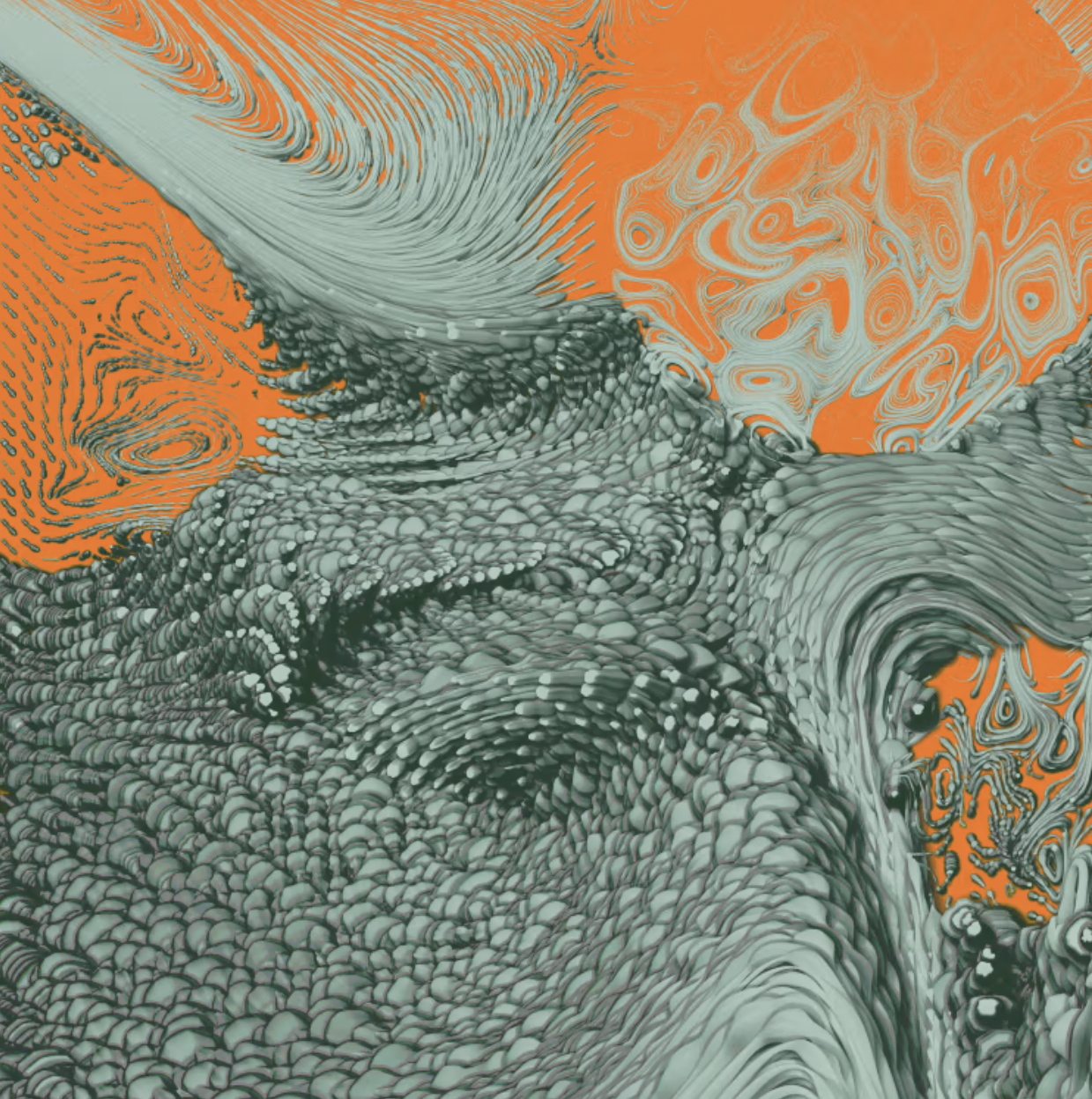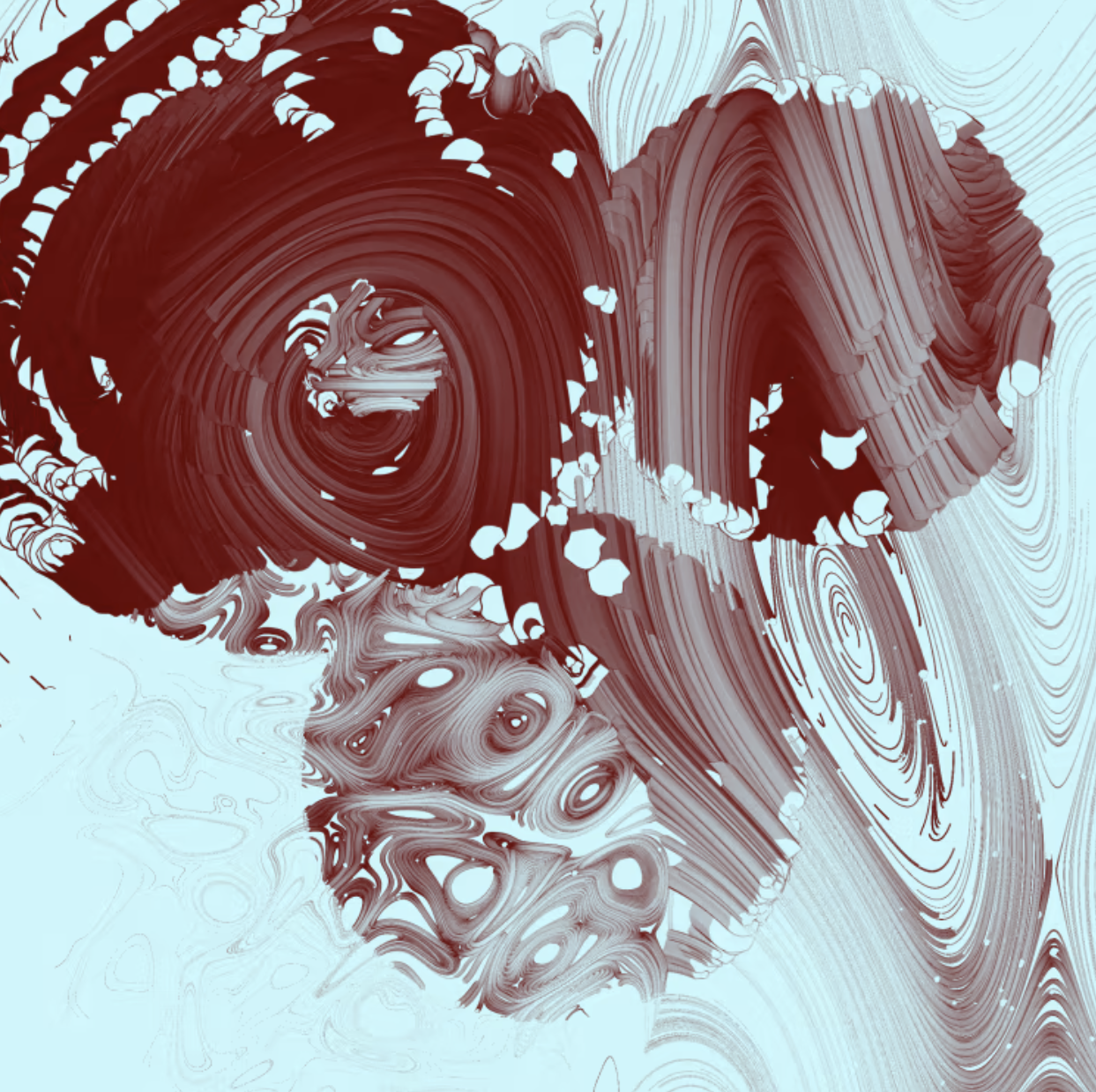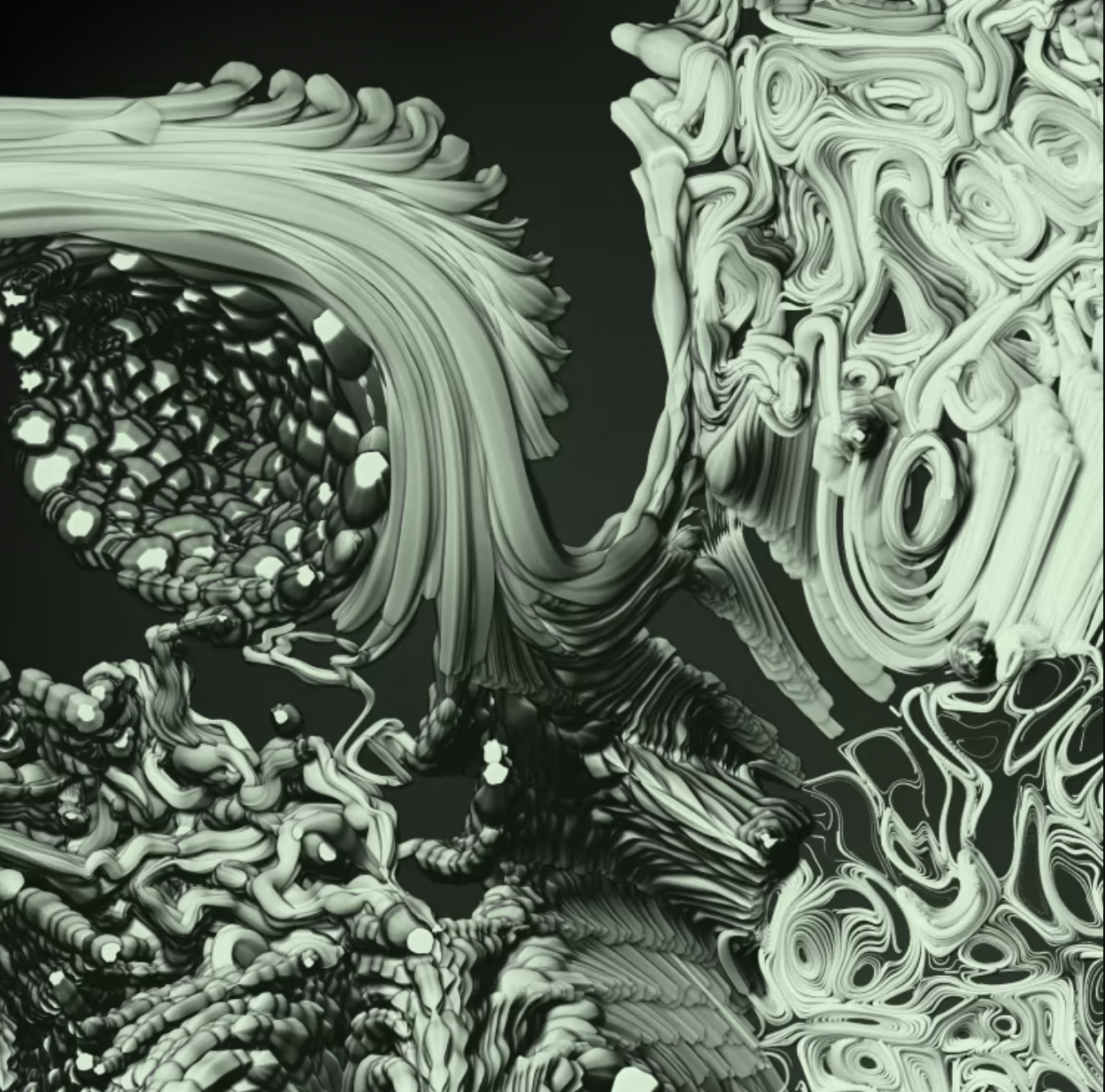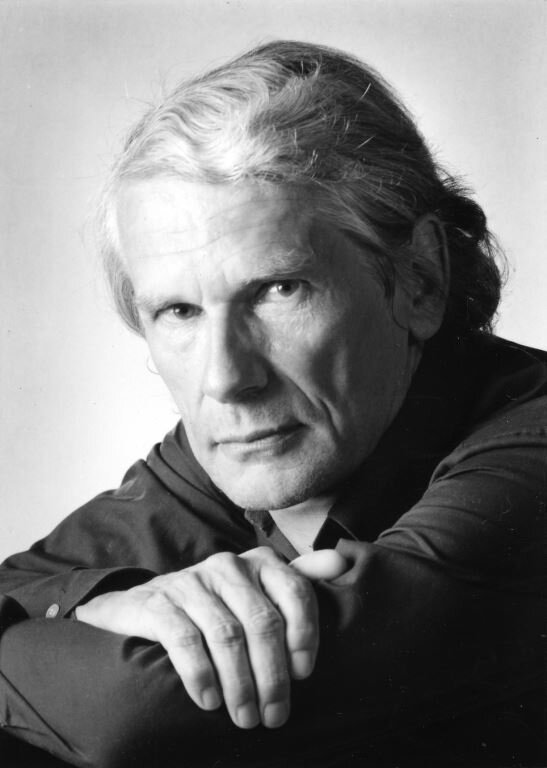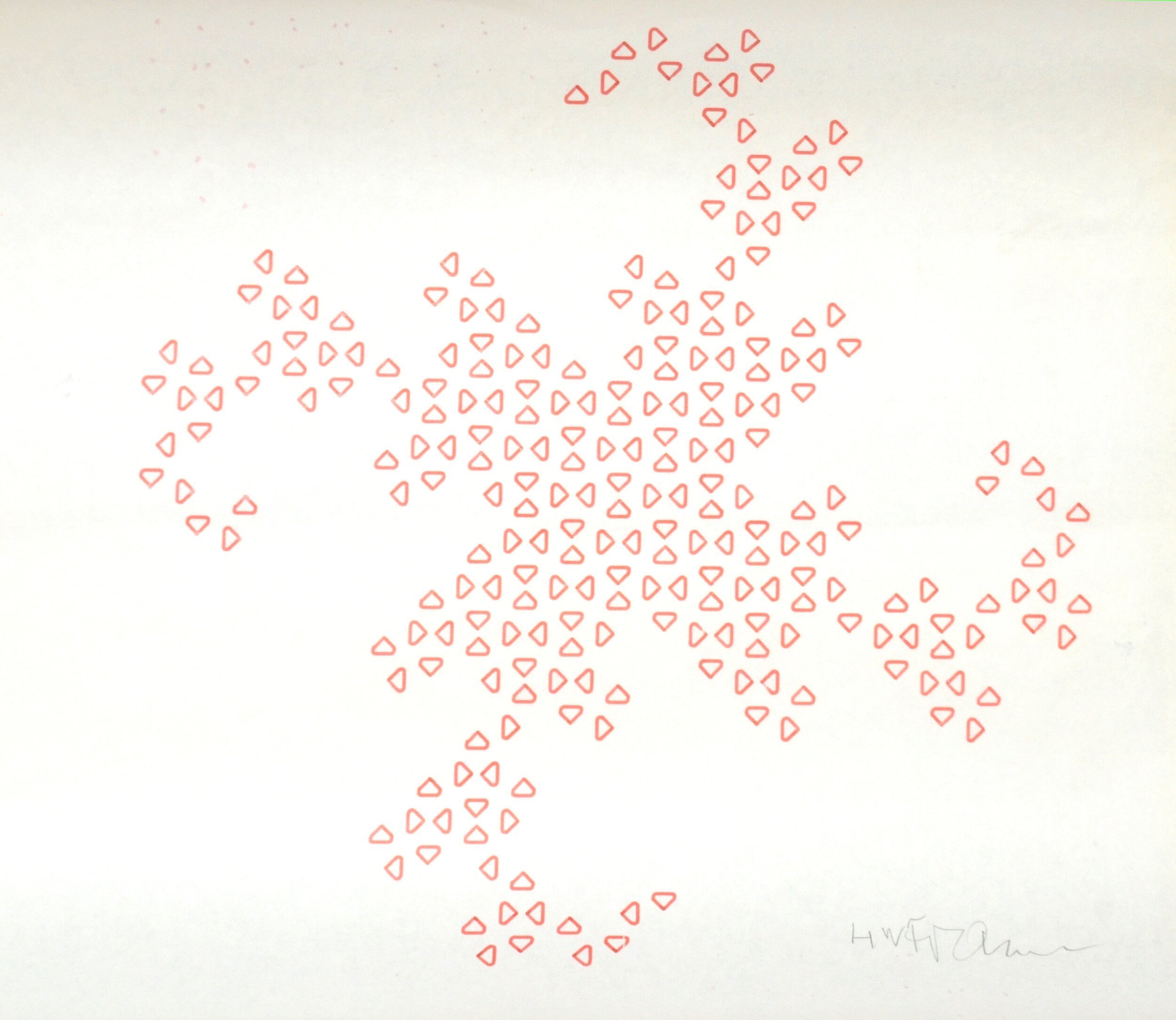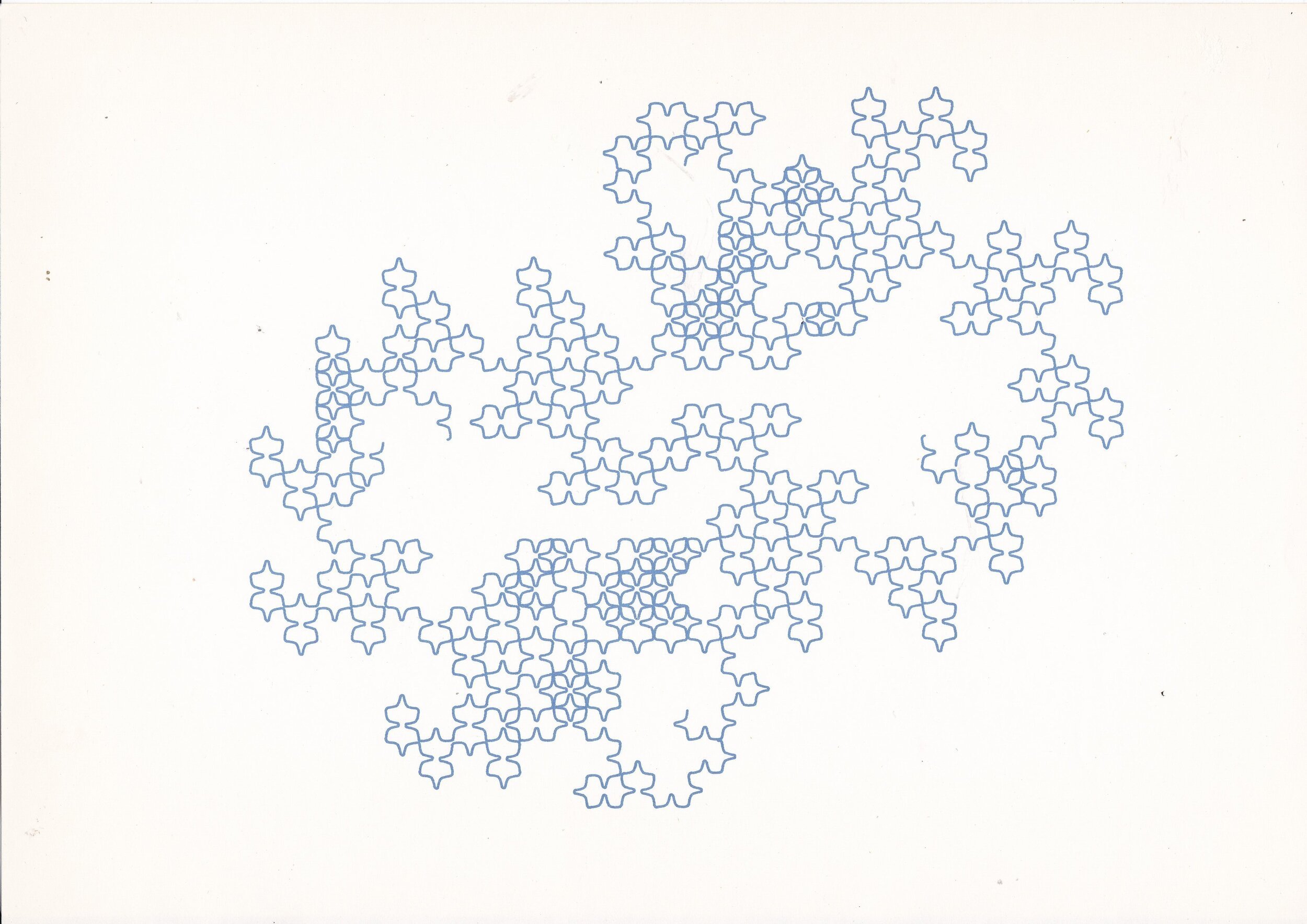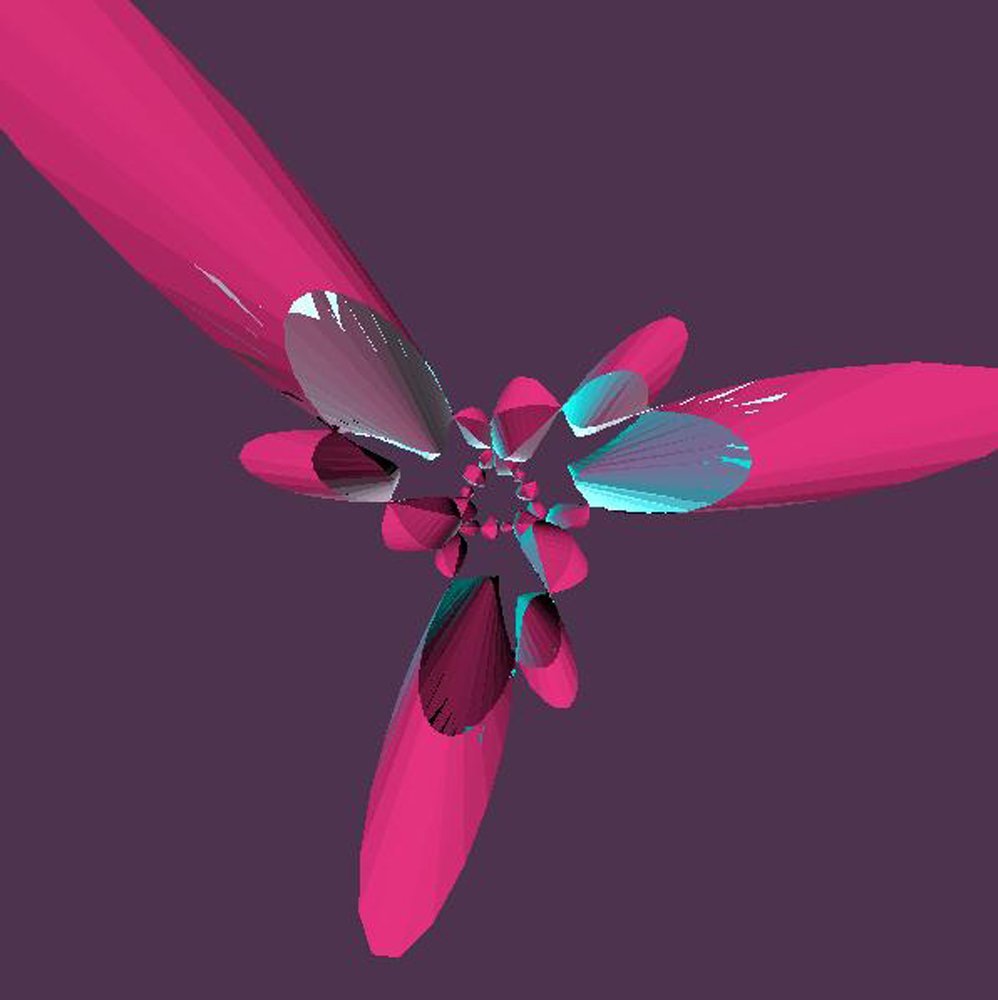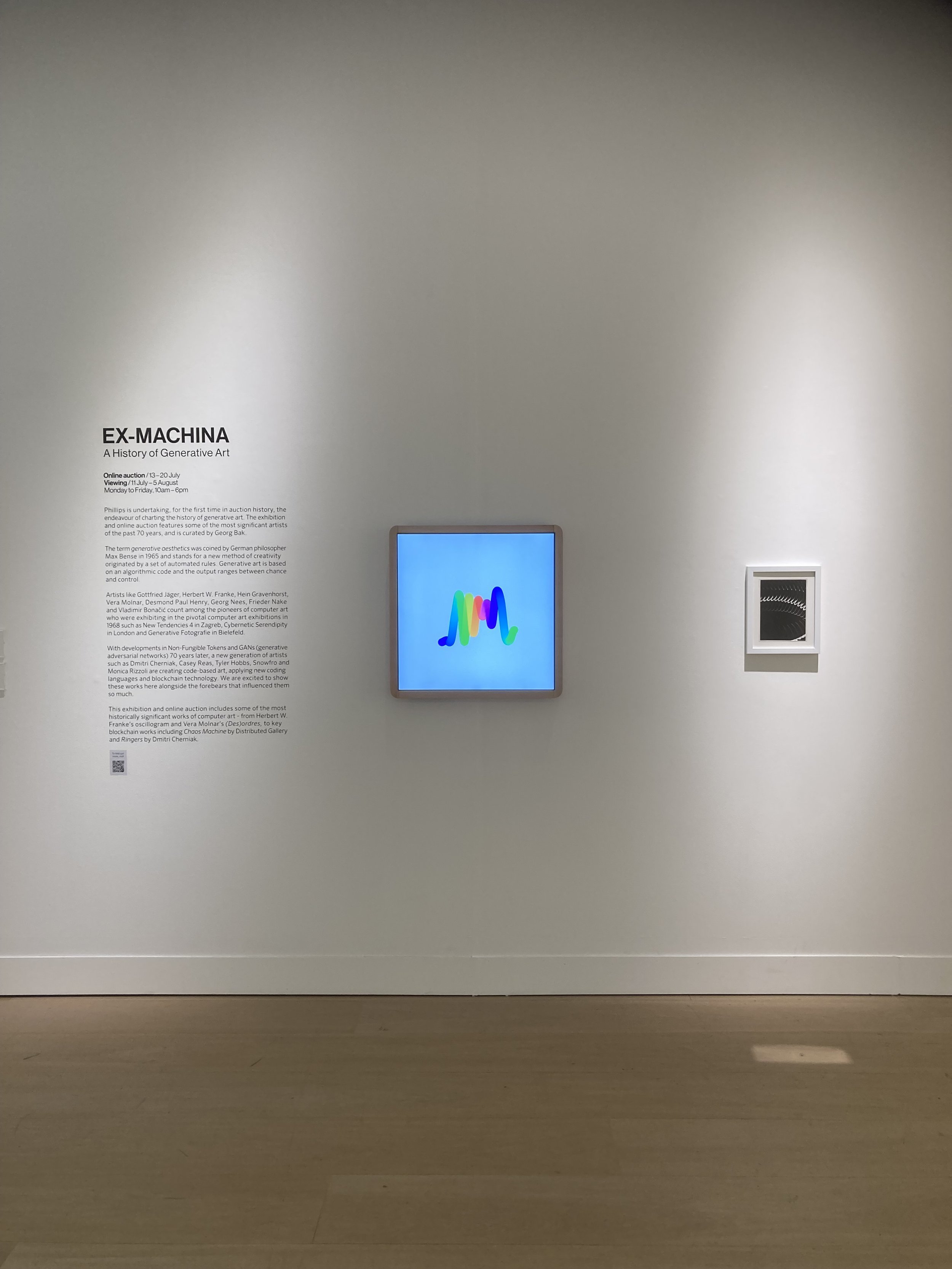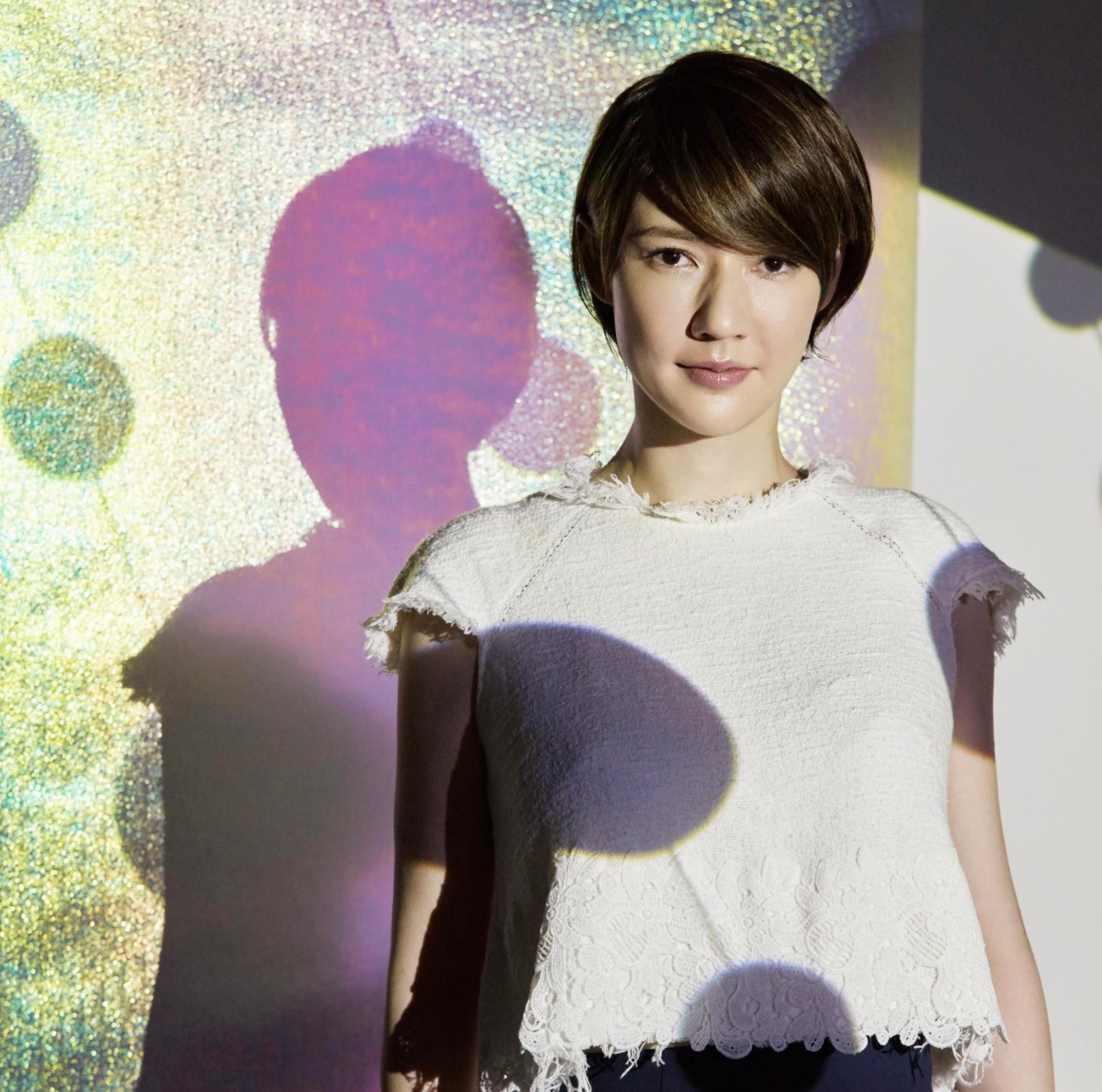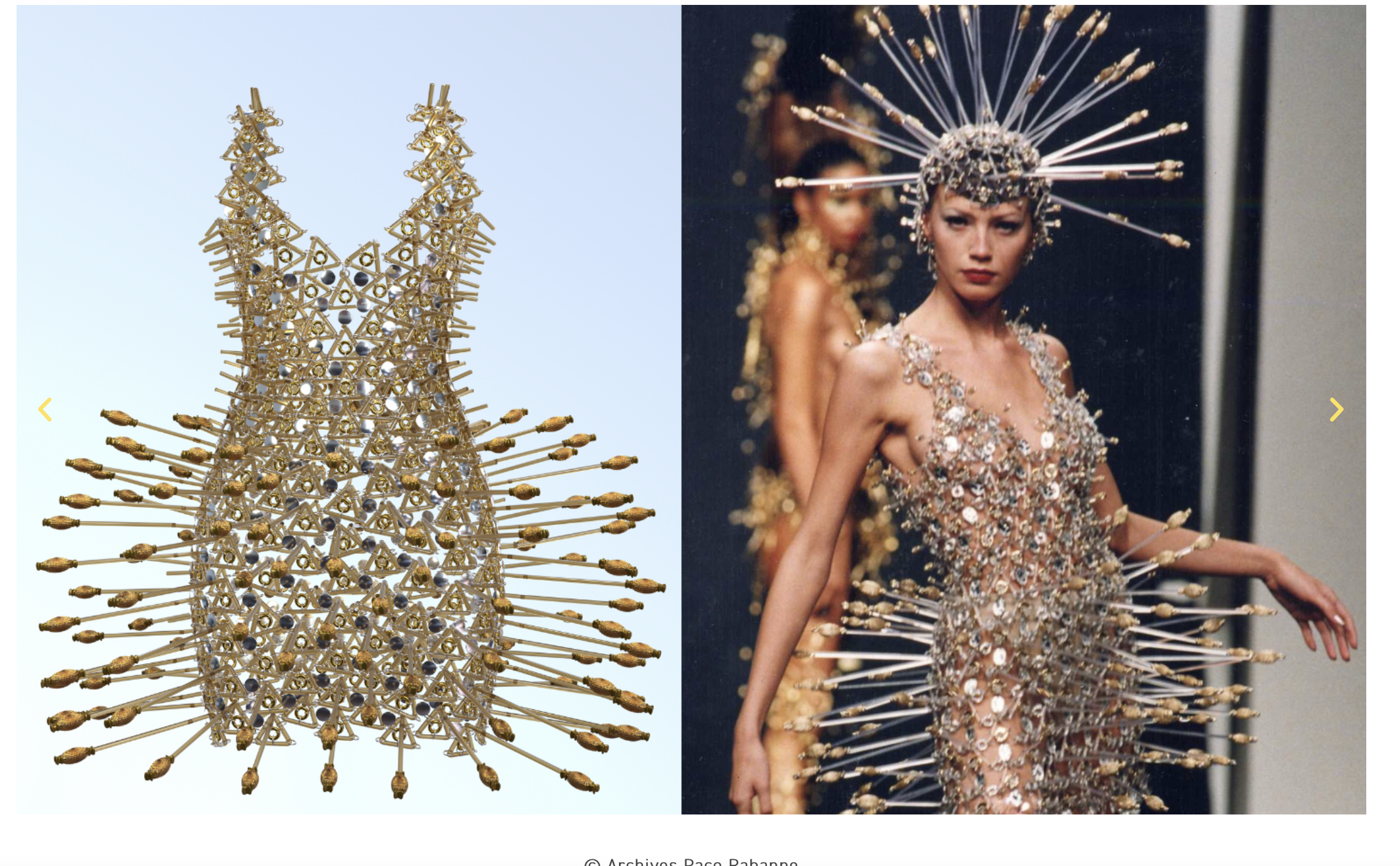THE HISTORY OF ARTIFICIAL INTELLIGENCE – PART I.
The History of AI. Artificial Intelligence (AI) is a hot topic today, with programs like ChatGPT showing the world how powerful and capable it has become. However, AI is not a new concept invented in the 21st century. The idea of AI can be traced back to ancient mythology where tales of artificial beings that possessed human-like qualities were common.
Artificial Intelligence (AI) is a hot topic today, with programs like ChatGPT showing the world how powerful and capable it has become. However, AI is not a new concept invented in the 21st century. The idea of AI can be traced back to ancient mythology where tales of artificial beings that possessed human-like qualities were common.
Dartmouth Summer Research Project on Artificial Intelligence conference. From left to right: Oliver Selfridge, Nathaniel Rochester, Ray Solomonoff, Marvin Minsky, Trenchard More, John McCarthy, Claude Shannon. Credit: aiws.net
The idea of creating machines that could think like humans began to take shape in the mid-twentieth century, with the emergence of electronic computers. In the 1940s and 1950s, computers could not store commands, only execute them. They were also extremely expensive and only prestigious universities or big companies could afford them. During this time pioneers such as John von Neumann and Alan Turing made significant contributions to the field of AI, laying the groundwork for modern programming.
In 1956, the concept of AI was initialized at a historic conference „Dartmouth Summer Research Project on Artificial Intelligence” (DSRPAI) hosted by John McCarthy and Marvin Minsky. “Logic Theorist”, a program designed to mimic human problem-solving skills created by Allen Newell and Herbert A. Simon was introduced here. The program is considered to be the first AI program in the world. McCarthy proposed a two-month project that brought together top researchers to explore artificial intelligence. Unfortunately, the conference didn’t bring the success McCarthy wished for. However, the significance of this event cannot be undermined. AI gained its name, its mission, and its first success.
In the 1960s computers became faster, cheaper, and more accessible and they could store more information. This period was significant progress in the field of AI, with the development of programs such as the “General Problem Solver”, which could solve a wide range of problems by breaking them down into smaller parts. Joseph Weizenbaum’s ELIZA also showed promise to be the first chatbot in 1966. In Japan, Waseda University introduced WABOT-1 in 1972, the first full-scale “intelligent” humanoid robot. Its limb control system allowed it to walk, grip and transport objects with its hands. It could also measure distances, and directions and communicate with a person in Japanese. These successes convinced governments to fund AI research at several universities and research institutions.
Alongside AI, computer-generated art has also taken its first steps. The genre dates back to the 1960s when artists like Frieder Nake, Georg Nees, Michael Noll, and Vera Molnár began to use computers to create geometric and abstract artworks. These artists developed algorithms and mathematical formulas to create simple patterns and shapes. While these artists were not necessarily working with what we would now consider AI, they were still important in establishing the field of computer-generated art and exploring computers as a tool for artistic expression.
In the 1970s, after the optimism, AI researchers encountered many obstacles and the promised results failed to materialize. The biggest obstacle was the lack of computer power. The computers could not store enough data or process it fast enough. AI became the subject of critique, and the researchers faced a crisis as funding was cut. The so-called “AI winter” lasted until the 1980s.
However, many researchers didn't give up on their hopes and continued to work in this field. A significant milestone in the history of AI-generated art is the development of AARON by Harold Cohen, which is considered to be the first AI art system. Cohen had been working on the project since the early 1970s at the University of California, San Diego, where he taught. AARON was designed to produce art autonomously, using a symbolic rule-based approach to generate images. In its initial form, it created simple black and white drawings that grew more complex over the years. At first, he used custom-built plotter devices, and sometimes he coloured these images by hand. In the 1980s, he managed to add more representational imagery such as plants, people, and interior scenes.
WABOT-1 (1970~1973) Credit: Humanoid Robotics Institute, Waseda University
In the 1980s, AI experienced a resurgence in popularity. The "Expert System," created by Edward Feigenbaum, was a major success as it mimicked the decision-making process of a human being, providing advice to users. The Japanese government funded the project as well as other AI tools with its “Fifth-Generation Computer Project”. Unfortunately, as had happened before, most of the ambitious goals were not met, and the second 'AI winter' began, with most of the funding being cut again.
In the 1990s and 2000s, many goals of artificial intelligence had been achieved. In 1997, Deep Blue became the first computer chess-playing system that beat a world chess champion, Garry Kasparov. The event was broadcast live on the internet and served as a huge step forward for AI. In the same year, speech recognition software was added to Windows. In 2002, for the first time, AI entered the home with Roomba, a vacuum cleaner. AI was also used in fields, such as mathematics, electrical engineering, economics, and operations research. It seemed that there was not a problem that AI could not sort out. During this period, computer storage became bigger, and the emergence of the internet provided access to large amounts of data. Cheaper and faster computers were able to successfully solve many problems of AI.
Garry Kasparov makes a move against the IBM Deep Blue. Credit: Stan Honda Getty Images
The advancements in AI technology took a significant leap forward in 2011 when IBM's Watson computer competed on the game show Jeopardy!. Watson was designed to process natural language questions and provide accurate responses, and it was able to defeat two of Jeopardy!'s most successful human competitors.
Another significant achievement was when Geoffrey Hinton at Google began to work on deep learning systems in the 2010s. Deep learning uses artificial neural networks to analyze and process data, learning from examples. Google quickly recognized the potential of deep learning and started investing in the technology. In 2015, they created AlphaGo, a computer program that was able to defeat the world champion in the game, Go. This was an important accomplishment, as Go has many possible board configurations, making it much more complex than chess.
Deep learning systems have given a huge boost to the development of image generation. Generative adversarial networks (GANs) were developed by Ian Goodfellow and colleagues in 2014. GANs work with two neural networks. A "generative" one is trained on a specific dataset (such as images of flowers or objects) until it can recognize them and generate a new image. And the "discriminator" system, has been trained to distinguish between real and generated images and evaluates the generator's first attempts. After a million times sending ideas back and forth, the generator AI produces better and better images. Since the introduction of GANs, many artists have made significant contributions to the field of AI-generated art using this technology, such as Mario Klingemann, and Robbie Barrat. The latter has used GANs to generate surreal and abstract portraits. The use of GANs in art has opened up new possibilities for artists to create unique works.
Another significant contribution to the field of image generation is DeepDream, which was developed by Alexander Mordvintsev at Google in 2015. DeepDream uses a convolutional neural network to find patterns in images, thus creating a dream-like, psychedelic appearance on them. In the following years, several companies released apps (like Artbreeder) that transform photos into the style of well-known paintings or generate images based on texts (such as DALL-E).
Not only in the art field, but in general, AI research and development has rapidly increased. Many other big tech companies, like Microsoft and Facebook, are investing in the field. In recent years, AI has entered into our everyday lives, from virtual assistants (Siri or Alexa) to personalized recommendations (on Netflix or Spotify). AI has also been used in healthcare to develop more accurate diagnoses, and in the finance industry to detect fraud and make better investment decisions. In the future, AI technologies will continue to influence the way we live, work and interact with the world around us.
In our next article, we’ll introduce the most recent achievements of AI, including ChatGTP, DALL-E 2, or Lumen5. Stay tuned!
Browse the works of some of our AI artists:
Panel talks at «Le monde non objectif» exhibition finissage
On 31/1, at the finissage of the solo show of Swiss generative artist Eko33 "Le monde non objectif", curated by Kate Vass Galerie at unpaired, we also hosted the panel about the history and the future of generative art. The conversation foregrounds key definitions to examine the history of the human & the machine relationship. The panel was meant to outline current tendencies and their relation to art history with decades of experimentation.
Our speakers: are Eko33, Johannes Gees, Lukas Amacher, and Georg Bak, chaired by Kate Vass.
Digital art did not develop in an art-historical vacuum; it has strong connections to previous art movements, including Dada, Fluxus and conceptual art. The importance of the above for digital art resides in their emphasis on formal instruction and their focus on concept, event, and audience participation, as opposed to unified material objects. The idea of rules being process for creating art has a clear connection with the algorithms that form the basis of all software and every computer operation: a procedure of formal instructions that accomplish a 'result' in a finite number of steps. Just as with Dadaist poetry, the basis of any form of computer art is instruction as a conceptual element. Art's notions of interaction and 'virtuality' were also explored early on by artists such as Marcel Duchamp & Laszlo Moholy Nagy in relation to objects & their optical effects. Duchamp's work, in particular, has been extremely influential in digital art: the shift from object to concept embodied in many of his works can be seen as a predecessor of the 'virtual object' as a structure in the process. Fluxus group performances and events in the 1960s were also often based on the execution of precise instructions.
The element of 'controlled randomness' that emerges in Dada, OULIPO, and the works of Duchamp & John Cage points to one of the basic principles and most common digital medium paradigms, the concept of random access as a basis for processing and assembling information. Computers were used for the creation of artworks as early as the 1960s. Michael A. Noll, a researcher at Bell Labs, created some of the earliest computer-generated images, e.g. Gaussian Quadratic (1963), which were shown at Howard Wise gallery in NY in 1965.
We invite you to browse the catalogue of the show here and follow up for more events:
#generativeart #curatedart #digitalart #historyofart
The Father of Computer Art: The Art of Charles Csuri
Charles Csuri, Image © the artist
Charles Csuri (1922-2022) is known as “The Father of Computer Art”. He was a professor, fine artist, and computer scientist who made significant contributions to the field of computer art. Through his research and artistic vision, Csuri developed software that created new artistic tools for 3D computer graphics, computer animation, gaming, and 3d printing.
Charles Csuri was born in 1922 in Grant Town, West Virginia, to immigrant parents from Hungary. He afforded college with a football scholarship in 1942 to The Ohio State University. After attaining The Bronze Star for heroism in WWII at “The Battle of The Bulge” he continued his education with the GI bill. Further, in 1943 the US Army sent him to the Newark College of Engineering, where he studied algebra, trigonometry, analytic geometry, calculus, physics, and chemistry, and received a degree in engineering. After the war, Csuri turned down an opportunity as an All American O.S.U. football player to join the NFL. Instead, he received his MFA in classical art education studying painting, drawing, and sculpture alongside his close friend Roy Lichtenstein in the 1940s. In 1947 Csuri became a professor teaching fine art while exhibiting his paintings in N.Y. During this time, he created traditional paintings, drawings, and sculptures but had a continuing dialogue with a friend and engineer at The Ohio State University in the early 1950s about working with the computer to create art. The problem seemed like science fiction till 1964 when he saw a raster image made using a computer. In the same year, he took a course on computer programming and created his first computer-generated picture in 1964 with an analogue computer and in 1965 an IBM 7094 with a drum plotter using FORTRAN programming language. In addition to teaching fine art, Csuri became a professor of Computer Information Science and created digital art with custom software in a Unix environment.
In 1968, Csuri sent shockwaves through the University by being the first artist to receive financial support from the National Science Foundation (NSF). Csuri used this funding to support computer scientists in a collaborative effort to develop the artist's tools he envisioned to create computer art. He implemented a three-part program: building up a library of data and programs that focused on creating new artistic tools for the generation and transformation of images, developing a graphic console, and establishing an educational program. With the grant, he proposed a formal organization, called the Computer Graphics Research Group (CGRG) at OSU in 1971, which he later renamed to Advanced Computer Center for the Arts and Design (ACCAD), in order to develop and experiment with the potential of the application of computer animation. NSF was so impressed with his work, that they supported his creative research for twenty years. The results of this research have been applied to a variety of fields, including flight simulators, computer-aided design, visualization of scientific phenomena, magnetic resonance imaging, education for the deaf, architecture, and special effects for television and films. In 1984, Csuri established the first computer animation company in the world, Cranston Csuri Productions, which produced animation for all three major U.S. television networks, the BBC, and commercial clients.
EARLY PERIOD (1963 - 1974)
His early works, from mid-1963 to the 1970s are significant. His way of thinking about computer art, his creative process, and his intentions during this period helped shape his later art. Many of the themes, such as object transformation, hierarchical levels of control, and randomness were established in the early years. In the early days of his career, Csuri's art consisted of his drawings and sketches, which he made in order to mathematically transform them using analogue and digital technologies. In 1968 Csuri made an important discovery by creating a numeric milling machine sculpture as the brainchild for his pioneering development in the next phase of his career. In the early 1970’s he took this visionary idea further to develop 3D animation and real-time interactive art objects.
One of the best examples of his early period is the Hummingbird (1967), which is considered to be one of the earliest computer-animated films. To create the film, he generated over 30.000 images with 25+ different motion sequences using computer punch cards. The output was then drawn directly onto the film using a microfilm plotter. The resulting animation shows a hummingbird dissolving, recomposing, and floating along imaginary waves. The film received an award at the Fourth International Experimental Film Competition in Brussels, then MoMA in New York purchased it in 1967 for its permanent collection as one of the first computer animations.
Csuri’s interest in randomness and game-like playfulness is exemplified in work, Random War (1967). In his work, he gave pictures of 400 soldiers along with a written list of their names to the computer. Using a pseudorandom number generator, the computer determined the distribution of the soldiers on the battlefield. The names became the soldiers under the categories of “Missing in Action”, “Wounded”, “Dead”, and “Medals Awarded”. Csuri used the soldiers’ names to personalize the randomness and chaos of war. Csuri also used pop icon names as well as presidents, and ordinary people to emphasize that war in life and death doesn't discriminate. This was an important conceptual and ironic commentary on the computer playing GOD in an age when computers were considered evil. For Csuri as a veteran, this artwork was pivotal in his search for meaning in his life-spanning digital artistic career.
MIDDLE PERIOD (1989-2000)
In 1990, Csuri became a professor Emeritus, retiring from his role at ACCAD to focus on creating digital art. During this middle period, he started experimenting with combining traditional drawings and paintings with evolving proprietary software developments. He brought his drawings into a three-dimensional computer space and used techniques like texture, bump mapping, and embossing.
Csuri describes his works as “organic looking”, suggesting that the use of traditional media helped to remove the sterile feeling of the mechanical computer forms. Developing the technique called texture mapping, he wrapped the virtual models with his oil paintings. The result is playful and focuses on the beauty and elegance of life.
A good example of this period is A Childs's Face. Csuri created a thick application of oil paint, that he wrapped around the computer-generated bust head that appears to be emerging from the background. Csuri plays with positive and negative space in a strong mix of pattern, color, and three-dimensional texture. Csuri also applies this technique with his drawing in The Hungarians.
During this period, he continued to define artistic tools in collaboration with computer programmers through the development of custom software programs. Some of his core programming tools were the ribbon tool, the fragmentation tool, and the colormix tool. The fragmentation tool gave Csuri the ability to play with abstraction and representation. In the work, Cosmic Matter, Csuri fragmented digital models of classical sculpture where he simulated paint flying in the solar system.
The colormix tool allowed him to define the location of specific colors and create color spaces through which Csuri can place or move his objects. In Wonderous Spring, he used prismatic colors in a transparent layering of forms.
Csuri wanted to “draw” in 3 dimensions so he spearheaded the development of a ribbon tool that appears to draw calligraphic lines in the three-dimensional space. Csuri has used this tool to create works, such as Wire Ball and Horseplay. Another of his digital developments during this period was his experimentation with the interplay of light and transparency. His artistic vision was to create a reflective glass-like quality in 3D layers of transparency and objects. Balancing Act and Clearly Impressive
LATER PERIOD (1996-2006)
In his later period, Csuri uses the core artistic tools, which he created in the early 1990s and he continually modified them throughout his artistic career. One example was the implementation of his fragmentation tool to later apply to millions of objects in a random generative process. Csuri often functioned as an artistic editor while striving to uniquely create by computer something that could never be accomplished by hand. Celestial Clutter, Mosaic Lines, Festive Frame, and Abstract Ribbons. Nevertheless, the influence of the history of art and great masters continues to be an important part of his creative ambitions.
The father of modern art, Paul Cézanne had a significant influence on Csuri’s work and philosophy. Cézanne uses simplified geometric forms of the sphere, cylinder, and cone, forming them with light and color, composing a new order that transforms the visual language of art. Csuri spent years studying Cézanne's methods of manipulating color and light. He also redefines the objects in a three-dimensional space in which he creates new forms that synthesize realism and abstraction. Csuri further was influenced by the artwork of Leonardo Da Vinci and named many of his files Leo. As early as 1966, Csuri created The Leonardo Da Vinci Series with an IBM 7094 and drum plotter he transformed The Vitruvian Man by computer. He was inspired by concepts like Chiaroscuro and Sfumato as seen in Light_0008. where the smoky quality blurs contours so shapes emerge in an atmospheric quality. Reference to Cezanne's color in Landscape Two.
In Venus in the Garden Frame 73, from the Venus series, Csuri uses the famous Greek sculpture of Venus de Milo with his artistic set of parameters that control light, color, transparency, objects, camera position, and distances in a generative process. Here Csuri explores the mysteries of ancient myths and the evolution of organic forms. The sculpture is embedded in repeating and juxtaposed decorative motifs of ribbons, leaves, and flowers that blur the line between the figurative and the abstract. The interplay of elements in this algorithmic painting creates a rhythmic balance in an organic composition.
Origami Flowers is another example of the influence of traditional art history in Csuri’s art. The clump of irises is a reference to Csuri’s admiration for Japanese art and Van Gogh’s Irises. The work is a mathematical object constructed from polygons, in three-dimensional space with a light source placed by the artist. It consists of a complexity of shapes and lines, the intensities of light and dark colors, and the spatial depth resulting from multiple overlaps of material.
In the 1960s, Charles Csuri began exploring the use of randomness and chance in his art, as seen in works such as "Random War" and "Feeding Time." In the 1990s, he returned to this interest and created a series of generative art pieces known as the Infinity series. These works were generated using computer algorithms and mathematical equations, resulting in unique, endlessly repeating pieces. Csuri created three-dimensional environments composed of geometric forms, colors, lights, and shadows, assembled from thousands of fragmented objects. The overarching theme throughout his career has been in search of artistic and conceptual meaning in every creation by image transformation.
Charles Csuri continued creating digital art and animation until the age of 99. He is recognized as a true renaissance man: an athlete, professor, artist, and revolutionary innovator who combined art, science, and technology as one of the first pioneers of the genre. As an inspiring visionary, he mentored 60 PHD digital art and programming students. They have and will continue his legacy as a pioneer in the field of digital art and animation. Charles Csuri will be remembered in the history of art as a founder of the digital art movement. His revolutionary pictures and animation have been showcased in international exhibitions. His artwork can be found in renowned museums, such as the Museum of Modern Art NYC, Pompidou Center Paris, Victoria Albert Museum of Art London, and ZKM Museum Karlsruhe. LACMA Los Angeles, California. Whitney Museum of Art NYC, and Museum of Contemporary Art, Zagreb Croatia
Browse the works of Charles Csuri HERE!
Interview with Swiss artist, Eko33 by Arltcollector.eth
The original article is published on www.arltcollector.substack.com on 6th December 2022.
The generative artist known as Eko33 has been making art with computers since 1999. From being featured at Venice Biennale to now having his own solo-exhibition, he has already become an influential and respected artist in the gen art and NFT communities alike.
It was my pleasure to interview Eko33 and speak with him on Twitter Spaces on November 30, 2022. We spoke about many things including his creative process and upcoming solo-exhibition happening on December 7th 2022, curated by Kate Vass. I think a blog post on the Kate Vass Galerie website, articulated it best about Eko33’s work.
In that, it, “focuses on clear geometrical structures while including non-obvious yet advanced and diversified algorithmic forms. His works have no recognizable subject matter, using elements of art, such as lines, shapes, forms, colors, and texture. He aims to create pure art using algorithms. Emotions conveyed by his work are evoked by an eloquent use of colors and saturation on top of a unique layering approach underlying the subjectivity and biases of the human condition.”
Eko33, Life Path #02, 2022, Unique NFT © Eko33
Eko, you’ve been featured in several exhibitions around the world this year, such as Venice Biennale, Art Basel 2022, and Cortesi Gallery. What was your experience like being a part of these shows?
It’s always a fantastic experience to meet real-life collectors and artists within international art fairs.
It’s interesting to see the evolution of the space within a concise period of time. I remember NFT art week Shenzhen and Art Basel Miami in December 2021 and how fast things changed and evolved when I was doing the opening of the Venice Biennale in Bloomberg’s Pavilion with Tezos at Venice Biennale and Art Basel Basel last May.
Traditional art galleries enter the space, technology, and know-how to display digital art is also making tremendous progress on a monthly basis.
Attendance for digital art keeps on increasing, I remember at Paris+ Art Basel how crowded the place was where NFTs were displayed.
Is there an event in particular that really stood out to you the most from this past year?
Each of them are very unique in their own ways. One of my best memories was looking at my long-form series being displayed alongside Herbert W. Franke, ‘Mondrian’ (1979) in Art Basel, Basel, and then having my work featured in Forbes magazine as part of the best of Art Basel 2022.
Is there a place you have traveled to or an event you’ve attended recently that inspired you enough to create something?
When I travel I always take a lot of pictures with my phone or a drone. I’m doing this because I use it as an archive for creating color palettes.
I travel extensively and even if I may not be cognizant of it all the time I’m sure it influences my emotions and mindsets. The first thing I do upon arriving in a new place is to look for interesting museums or bookstores.
When I worked on the long-form series called “Epochs” I started the project while being in Lisbon Portugal and I got fascinated by azulejos which turned out to be the starting point of a deep dive into the works of Sebastien Truchet and his famous “Truchet tiles” which turned out to be the core of this project.
Quick side note, where is one of your favorite places to travel and why?
One of the best places to travel to is going back home, I absolutely love Switzerland. I live in a rather secluded area in the swiss alps and I’m absolutely grateful each time I go back to discover the evolution of nature, I’m never bored contemplating it.
On a more "exotic" note, one of my favorite places is a french island called Corsica. It’s a jewel in the mediterranean sea with authentic nature and locals.
Eko33, Untitled series: Square #174”, 2022, Unique NFT accompanied by unique print on ChromaLuxe Aluminum with semi-gloss finish in size 1.2 x 1.2 m, Signed by the artist © Eko33
Your solo-exhibition opening December 7th 2022 in Zug, Switzerland is entitled, ‘Le monde non objectif’. How did you come together with Kate Vass Galerie to curate this collection?
Kate had the idea for me to initially show two collections, one called “artefacts” and the other called “Untitled”.
Then we took time to review everything I created over the past 18 months and we believed it would be a good idea to expand the scope of the exhibition and to include more facets of my work.
When did you begin working on this body of work?
It’s a rather recent body of work, the “oldest” pieces showcased are from projects which started 2 years ago.
I read that coding is usually the end of the process for you when creating something. Can you explain in further detail a little bit about your creative process and how you spend 80% drawing and only 20% actually coding?
I’ve been collecting a lot of mid-century furniture and old magazines from this era. I also enjoy collecting and reading art books.
The first step of my process is going through all these references, bookmarks from previous readings, etc. It can be literature, non-fiction, research papers, or drawings I’ve made by hand in the past.
My process can also evolve and change over time. I then draw a lot, identify color palettes, and collect more references.
After this, I start coding. Usually, I spend most of my coding time pushing the code to its limits as well as identifying the space of parameters suitable for the project. I like to anticipate as much as I can while leaving space for randomness.
I like to say that I work between control and randomness.
Eko33, Monster Luck 00, 2022, Print on paper, Size: 40 x 40 cm, Signed by the artist, Edition of 5 each © Eko33
So, I’m curious to know, how did you first get into NFTs?
I’ve been in the crypto space for quite some time. Initially, I thought it was a scam but gradually I learned more about it. Usually, the more you learn about blockchain technology the more you understand its underlying potential.
The intersection of game theory, cryptography, decentralization, technological challenges, and network effects are really fascinating to me.
I first got into NFTs as a collector and then I naturally started minting my own work.
What are your overall thoughts about this space?
So many smart and passionate people in the same place are quite rare.
Of course, not everyone has good intentions but overall it reminds me of the thrill and excitement I went through when I saw the arrival of the internet.
I have to highlight your spontaneous tweets simply titled “Gm if you love computer generative art!” which is always accompanied by one of your thrilling works of art. How did this ongoing series come about?
Working with computers and machines can be a lonely adventure. To avoid cabin fever I like imagining that each morning I pass by my friends and say good morning to them with a big smile on my face.
This is exactly what I’m doing on Twitter while sharing my advanced work in progress at the same time. It’s also a way for me to show my collectors that I’m here and keep working hard on new projects.
Eko33, Untitled series: Portrait #6, 2022, NFT, Edition of 5 © Eko33
As an artist going into 2023, do you feel pressure or think it’s necessary to be more active on Twitter and other social platforms to promote yourself and your work?
I don’t know if it can be qualified as pressure because at the end of the day everyone does whatever they want. Having said that, I know it can be difficult for some artists to be here and active each and every day.
Sometimes your engagement could fluctuate and if you don’t have a thick skin you may start having doubts about what you do and even sometimes feel a bit depressed if the audience does not react as you would have expected.
Social media algorithms have no mercy and I quite enjoy this type of blunt reminder.
I agree. I've come to appreciate the algorithm. Looking back now, how has a computer and generative art evolved since you began creating it in 1999?
It’s day and night. In 1999 I remember having to learn as much as I could on my own. The Internet was still in its infancy. Finding a learning community was challenging to say the least.
From a technical standpoint, I remember IRCAM in Paris created a hardware midi interface to work with sensors. I spent the entire summer in order to be able to afford it. Nowadays you can DIY this type of hardware for less than 30 euros.
The Intel Pentium CPUs were revolutionary at the time but nowadays our phones are way way more powerful. What we do in real-time today was just science fiction in 1999.
From an artistic point of view, I’m a bit surprised sometimes to see some projects made in 2022 being quite close from what was made a while ago.
With all the new technology available today, I believe we should aim for more radical and ambitious innovation.
I’m really working hard to integrate electronics, laser cutters, 3D printing, direct GPU interfacing, and game engines such as Unity in my practice. This is my main focus and I hope I can present this type of generative art in the near future.
Did you ever imagine the world would eventually become so receptive to digital and generative computer art?
Not even in my wildest dreams. I’ve witnessed the evolution and growing interest in digital and generative art and it’s really an amazing breakthrough.
I’m especially happy for artists like Vera Molnar, Herbert W. Franke, and others who could see this change unfolding after decades of modest interest from the public at large for generative art.
Eko33, Untitled series: Horizontal #6, 2022, NFT, edition of 5 © Eko33
On that note, is there anybody you really look up to as an artist, past or present?
Ben Laposky, Michael Noll, Frieder Nake, Georg Nees, Sophie Tauner-Arp, Mark Wilson, Waldemar Cordeiro, Paul Klee, Sonia Delaunay, Kandinsky, Aurelie Nemours, Sol Lewitt, Attila Kovacs, Chuck Csuri, Johan Shogren, François Morellet, Robert Mallary, Bridget Riley, Josef Albers, Anni Albers
I was reading your blog posts like “The story of Anni Albers and her contribution to generative art”, as well as previewing your “probably nothing” podcast, which you host. What other things do you love to do when you’re not creating art?
I believe we never spend enough time with friends and family. I learned this the hard way when I lost my father because of a car accident when I was quite young.
When I’m not creating art and when I’m not with my friends or family I enjoy doing electronic music, especially generative electronic with eurorack modules.
I like the analog feeling of making music from a pure electric signal, patching cables, not being able to save them, and not using computers at all, just a bunch of obscure small modules combined together.
Eko33, Life Path #21, 2022, Unique NFT © Eko33
I love to hear about your passion for music. I must know, what are some of your favorite albums that you can listen to for inspiration when creating?
I listen to music all day long while creating new works, my tastes are all over the place. I absolutely love Hindustani music, of course, Ravi Shankar is among my favorites. Ambient music is also something I especially enjoy such as Brian Eno’s album called Apollo: Atmospheres and Soundtracks.
Other legends such as Ennio Morricone, Frank Zappa, Pierre Henry, Luc Ferrari, Philip Glass, Kraftwerk, Tangerine dream, boards of canada, Karlheinz Stockhausen, Erik Satie, Klaus Nomi, Nicolas Jaar, Khruangbin, Jean-Michel Jarre, Apparat.
Lastly, I want to ask what you’re currently building that’s getting you excited.
Right now I’m entirely focused on the forthcoming solo exhibition curated by Kate Vass and displayed at unpaired. Gallery on December 7th in Zug. It’s going to be a great opportunity to discover my new series called “untitled”.
It has never been exhibited before and will be presented on a high-quality digital display as well as super high-quality physical pieces in large format.
In early 2023 I’m also going to have a very exciting project which hasn’t been announced publicly yet. All I can say is that I’m thrilled and super proud about it. I didn’t want to rush the project and it was worth it as the curation panel really liked it.
Next year I’m finally going to be more focused on using electronics and real-time interactive installations to create generative art.
I hope to be able to combine zero knowledge proof technology with creative and artistic use cases during live events with robotics, lasers, and real-time minting experiences.
It’s incredible to learn about how you got started in generative art, and to experiment with real-time interactive installations and new tech. You’ve come a long way in a short amount of time.
Your curiosity to innovate and execute new ideas is inspiring. It helps push the whole community forward.
We’re all looking forward to the release of your solo show and the future of Eko33. Next time we do this, I hope to visit you in the Swiss Alps!
‘Le monde non objectif’ Solo-exhibition by Swiss artist Eko33
Kate Vass Galerie is happy to present the solo show of a Swiss artist, Jean-Jacques Duclaux, aka Eko33, 'Le mode non objectif' which takes place in Zug, at unpaired. Gallery on the 7th of December.
At the beginning of the 20th century, artists began to free themselves from academic constraints, abandon pictorial aspects and experiment only with colors and forms. One of the first figures to abandon objective art was Kazimir Malevich who was a leading member of the Suprematism movement. He wrote his vision in his book, The Non-Objective World, which was published in 1927 as part of the Bauhausbücher series and it is referred to as a manifesto of Suprematism.
Malevich was among the first painters who attempted to achieve the absolute painting that was clear from every objective reference. The term, non-objective art, takes nothing from reality and emphasizes the “primacy of pure feeling”. In contrast to Constructivism, non-objective art opposes any link between art and utility and the imitations of nature. Malevich aimed to create pure art, using geometric forms, where the feeling was the determining factor, the one and only source of creation.
“Blissful sense of liberating nonobjectivity drew me forth into the “desert,” where nothing is real except feeling… and so feeling became the substance of my life.” - Malevich, 1927
The formal elements of non-objective art remain part of recent artistic practices. Many artists during the 20th century use exclusively geometrical forms and exclude every objective element. In the 1960s, the forerunner of generative art, Sol LeWitt, embraced the philosophy of ’non-objectivity’ by creating the geometric ’Wall drawing’ series. Technology provides even more tools for artists to explore the concept of absolute art.
Eko33, Library series, 2022 © artist
The works of Jean-Jacques Duclaux, also known as Eko33 focus on clear geometrical structures while including non-obvious yet advanced and diversified algorithmic forms. His works have no recognizable subject matter, using elements of art, such as lines, shapes, forms, colors, and texture. He aims to create pure art using algorithms. Emotions conveyed by his work are evoked by an eloquent use of colors and saturation on top of a unique layering approach underlying the subjectivity and biases of the human condition.
Eko33 has created digital artworks using computer code since 1999. His practice is focused on creating artistic software and processes which generate unique artworks. Far from letting computers do as they wish; he defines the artistic rules and gives space to controlled luck and randomness.
In his artistic practice, classical approaches play a major role. Coding is usually the end of the process as he allocates more than 80% of his time drawing on paper and only 20% on the implementations. After creating the algorithm and identifying the suitable range of parameters matching his artistic vision, he moves on to the final stage, adding another layer of code to build the texture and final touches of his artworks. He uses multiple computer languages such as Processing, P5.js, Python, VEX, GLSL, 3d rendering engines alongside the custom software he built. Sometimes he uses an old Commodore SX-64 to pay tribute to the pioneers
Opens on 7th December at 6:30 PM in Zug, unpaired. Gallery (Rigistrasse 2, 6300)
Listen to the Twitter Space Interview with Arlt Collector and Kate Vass here!
For more information click here!
DIMENSIONALISTI - CADAF NYC 2022
Kate Vass Galerie is pleased to announce the exclusive program for CADAF 2022, taking place in New York from 11-13 November. We will present the work of computer art pioneer Charles Csuri, as well as Ganbrood and Lucas Aguirre, who worked with 3D technology in their artistic practice.
Over the centuries, many artists have tried to depict our three-dimensional world on a two-dimensional surface. The Italian Renaissance was defined by the synthesis of art and science, resulting in the acquisition of a three-dimensional perspective with the help of Euclid’s geometry. The illusion of three-dimensional depth was a major turning point in art history, allowing the development of more naturalistic styles.
Georges Braque, Mandora (1909–10), Tate © ADAGP, Paris and DACS, London 2022
During the first decades of the twentieth century, major modern art movements, such as Cubism or Futurism developed a revolutionary new approach to representing reality. The aim of Cubist artists, such as Picasso and Braque, was to show different viewpoints at the same time, within the same space by breaking the objects into planes. The idea of the fourth dimension was one of the favorite subjects of mathematics, science fiction, and art. There are many historical arguments about how Cubists encountered literature on the fourth dimension, but there is no doubt that their art was influenced by the theory of Henri Poincaré and Maurice Princet. By the end of the 1920s, the temporal fourth dimension of Einsteinian Relativity Theory achieved widespread popularity. As a result, some avant-garde artists recognized that space and time are not separate categories as had previously been taken for granted, but they are related dimensions in the sense of the non-Euclidean conception. Like non-Euclidean geometry, the fourth dimension was a symbol of liberation for artists. It encouraged artists to depart from visual reality and to reject the one-point perspective system that was used for depicting three-dimension.
The non-Euclidean geometry and the new conception of space and time influenced a Hungarian poet, and art theorist, Charles Sirató. As an emigrant in Paris, Sirató was fascinated by modern art, especially by paintings with depth and sculptures with moving elements. In 1936, he wrote a manifesto in which he lumped all the avant-garde tendencies together as a single movement and he called it: Dimensionism. Sirató used the formula “N + 1” to express how arts (like literature, painting, and sculpture) have to absorb a new dimension: literature should leave the line and enter the plane, painting should leave the plane and enter space from two to three dimensions, while sculpture would step out of closed forms to four dimensions. The movement’s endpoint would be “cosmic art”, which could be experienced with all five senses. The manifesto was signed by many prominent modern artists such as Hans Arp, Kandinsky, Robert Delaunay, and Marcel Duchamp.
Although the movement has since been almost completely forgotten, the representation of three-dimensional and four-dimensional space has remained an important theme in art. In the second half of the twentieth century, technology provides artists with even more tools to experiment.
One of the fathers of computer art, Charles Csuri’s research and artistic vision led to advances in software that created new artistic tools for 3D computer graphics, computer animation, and 3D printing. His work, “Cosmic Matter” from 1989 is an iconic example of Csuri’s early development of artistic tools that pioneered the field of computer art and animation. In “Cosmic Matter”, Csuri invented, in collaboration with other programmers, a technique called “texture mapping” that allows him to map his oil paintings onto 3D objects and further created object fragmentation to look like animated paint flying through the air. Further, he uses an embossing technique long before image processing capabilities use in Photoshop. In this picture, Csuri combines his formal fine art training with his revolutionary technology. This work was featured in Charles Csuri's retrospective international exhibition in 2006, at “The Beyond Boundaries”, Siggraph in 2006, & IEEE Computer Graphics and applications in 1990.
Charles Csuri, Cosmic Matter (1989), Unique NFT + Unique original Cibachrome print (30" x 40"), signed by the artist
Spatial depth has always been a decisive element in Ganbrood's work. As a 3D animator in the early 1990s, but also his special effects for movies and later photography, dimensionality played a significant role as an essential part of visual language. In his latest series, SOMNIVM, he has combined visual themes that have inspired him since his youth: antic mythology, fairy tales, fine art, theatre, and science fiction. He used an Artificial Intelligence algorithm, GAN (Generative Adversarial Networks), to mix all these different visual elements. This neural network has enabled him to create more abstract, pseudo-figurative pieces that, at first glance, look figurative but, after close inspection, turn out to be abstract shapes. This series also demonstrates his penchant for illusions and trickery; the works ‘Skené’ and ‘The Displaced’ explore mind-altering effects such as pareidolia, apophenia, and synchronicity. The elements of contradictory mediums he used, like fresco paintings and photography and 3D, unbalance human visual recognition.
The Argentinian artist, Lucas Aguirre combines elements of physical reality in a digital space. His work, “Aparecida” is one of the first experiments with analog painting and 3-dimension. His painted strokes are scanned three-dimensionally and reconfigured using virtual reality. The result of these operations returns to the physical plane and be continued analogically a back and forth between traditional modes and new media. He understands digital tools as a possibility to subvert everyday elements and thus generate other visions. The virtual is a space of pure potentiality.
S O M N I V M by Ganbrood
“We ought not to ask why the human mind troubles to fathom the secrets of the universe. The diversity of the phenomena of nature is so great, and the treasures hidden in the skies so rich, precisely in order that the human mind shall never be lacking in fresh nourishment.”
Kate Vass Galerie is thrilled to announce the exclusive program S O M N I V M by Bas Uterwijk, aka Ganbrood. The program is a part of the group show ‘'Dear Machine, paint for me” that takes place on 27th October. The artist will be present, giving an introductory talk with curators of the upcoming group exhibition by Georg Bak & Kate Vass. For the first time, the artist will be exhibiting his works in physical and digital form, minted on post-fork ETH and accompanied by Fine Art prints on thermo-aluminium, signed by the artist.
When you see a shape in the dark, your brain tries to interpret it by mirroring the form, colour and material characteristics to your memory's frame of reference. Anything you ever saw and remembered could play a role in the pattern recognition process in your mind.
The synthetic image generation of Generative Adversarial Networks and Diffusion models works eerily similar to this human process: Input or random noise is compared to a vast trained library model of thousands of millions of fed images, and every possible image between these inputs, so-called 'Latent Space'.
Instead of using this method as a way to generate variations on existing pictures, Ganbrood uses these neural networks as a silicon muse to evoke and stimulate his expressive mind while at the same time interrogating the very essence of creativity: Could it be possible that a quality that was always considered as eminently human, is easily imitated or even reproduced by an algorithm? And when that is the case, are our fantasies and imagination may be controlled by mathematic expressions more than we would consider?
Like every artist is expanding on the work of their most revered predecessors, In 'S O M N I V M', Ganbrood uses visual themes that have always inspired him since youth: mythology and fairytales, theatre and film, painting and photography, videogames and comics. Drawing parallels in timeless variations of visual narrative by seeking their mathematical interfaces in latent space. Where a classicly trained artist like a painter or a sculptor would dig these shapes and symbols from memory, Artificial Intelligence is providing the present-day artist with the tools to draw references from synthetic storage, where the craftsmanship of brush and chisel are shifted to recognition and curation of artificial outputs.
Artificiality has always been a decisive element in Ganbrood's past work, whether using special effects and 3D animation for film or photographing actual events in a serene way that almost looked staged.
Always fascinated by illusions and trickery, Ganbroods oeuvre is a voyage of exploration into pseudo-figurative and mind-altering effects like pareidolia, apophenia and synchronicity.
This exploration takes an almost literal shape in "In this hard rock, whiles you do keep from me" and "This Island's Mine", where sci-fi elements of glorious space adventures meet Renaissancistic scenes. Set in a cinematic universe, the viewer can almost define the actors and decor of these who, after close inspection, turn out to be little more than abstract shapes.
Tragoidia and Les Filles du Roy are like stages. The elements of contradictory mediums like fresco paintings and photography or 3D are battling for the spectator's conclusion of how to interpret what is perceived.
Some artworks from S O M N I V M selection are exhibited at the group show ‘'Dear Machine, paint for me” from 27th October till 14th December 2022 at The Circle, Zurich.
FROM 'ALTERNATIVES TO 'LYRICAL CONVERGENCE' BY ESPEN KLUGE
Lyrical Convergence comprises 100 new generative artworks, seeded with the same dataset from Kluge’s former Alternatives series, exhibited in both physical and digital form for the first time during the group show at Kate Vass Galerie, opening on 27th October 2022 in Zurich.
Espen Kluge is a true polymath: a composer, a visual artist, and a creative coder. He is fascinated by spontaneity and the exploration of semi-randomness in moments of improvisation.
This unique approach is reflected in his two series, which are closely related: Alternatives (2019) and Lyrical Convergence (2022). Both use the same set of data but two different algorithms. The artworks showcase the diversity of human perception, objectivity, and subjectivity, where we see the transformation from former Alternatives ‘figurative’ to abstractionism of ‘Lyrical Convergence’.
ALTERNATIVES, 2019
The alternatives series were exhibited for the first time in 2019 at the physical premises of Kate Vass Galerie. It marked a historical moment, where NFTs were shown as an artwork along with fine art prints as a solo show curated by Jason Bailey, aka Artnome. 100 unique portraits generated by JavaScript based on data collected from photographs taken in real by Espen since 2013 were on display as digital and physical art. Kluge’s portraits are monumental and structural, reminding us of the sculpture of Russian constructivists like Naum Gabo and Vladimir Tatlin. But in contrast to the sombre colours of the constructivist movement, Kluge’s works play with vibrant colours, where he questions the object and its characteristics, where vector-based lines serve a particular dynamic to describe the persona. His code takes photographs as input, loops through all the pixels in a raster image, chooses some at semi-random, and then engages those pixels by putting lines between them. Espen believes that the quality of each of his portraits comes from the fact that he writes by hand a new version of his algorithm for every portrait in pure Javascript.
Click below to browse the complete catalogue and the official website: https://alternatives.art
LYRICAL CONVERGENCE, 2022
Ravissement, oil on canvai, 1961 by Georges Mathieu
As a continuation of his experiments with the same data over the last 3 years, Espen developed a new algorithm that created a new set of works, the Lyrical Convergence.
With new growth algorithm Espen attempting to visualize the inner kismet of the Alternatives portraits. In contrast to the original series's geometric structure, the new sequence's result presents an organic-looking abstract form expressing intangible sensations.
The monochromic background, the centralized shape, the united lines, and the neat, calm colour palette are reminiscent of the art of Georges Matthieu, one of the fathers of lyrical abstraction.
The converging lines, which recall the cardiogram emphasis on colours, seem to interrogate the unconscious. Like a living creature on X axis, the linear progression dictates the dark landscape with its unique pace.
The artist adapts the immediate and direct approach to the new algorithm that brings into question the subject's position with respect to the object. Espen exalts it with the projection of his code with the coherent intensity to which the algorithmic execution of fragmentary castellations of lines, fields and colour imparted a maximum objectification. He makes it a place almost independent of the artist's existence, the code, and the manifestation of art itself. His series Lyrical Convergence is insemination in which subjective and objective, rather than being considered antonymous, hold a dialogue and form integration.
Like the European abstractionists, Espen’s works express something personal, vibrant, and entirely imaginative, in other words - lyrical.
Lyrical Convergence comprises 100 generative works, seeded with the same dataset from his former Alternatives series, exhibited in both physical and digital form.
Purchasing and Displaying NFT Art at Home: Expert’s Advice
September 7, 2022
Nothing beats an explosion of blockchain news to leave you wondering, “Um… what’s going on here?” That’s how I felt when I read about Grimes being paid millions of dollars for NFTs or Nyan Cat being sold as one.
The situation has only gotten more complicated in the year since NFTs became popular. Images of apes have sold for tens of millions of dollars, headlines about million-dollar hacks of NFT projects abound, and corporate cash grabs have only gotten worse.
All of this news may have left you wondering: what exactly is an NFT?
After consulting with a group of NFT experts, I believe I’ve figured it out.
Okay, let’s start with the basics.
What is an NFT?
An NFT is a Non-Fungible Token (a unique digital token), which many see as a certificate of authenticity, or a deed or proof confirming you own the right to display the above art on your wall or in your wallet (digital wallet). It might give you the right of ownership of the copy you bought (for your private use) but not necessarily over the ownership of the original artwork. Production rights and copyright are automatically retained by the artist unless otherwise specified in the contract. Regardless, non-fungible means ‘irreplaceable’ since each token is unique. And ‘Unique’ creates scarcity which, in turn, increases the market value for NFTs.
An NFT is technically an ERC-721 token on the Ethereum Blockchain. Another meaning of ERC is a ‘collectible’. The artwork is minted into the ERC-721 token. This token contains:
The historical information of any transactions plus artist information (including the artist’s public key) plus the number of likes (see the tiny ‘heart’ symbol above the image in the NFT).
A unique identifiable number = the token ID (click ‘chain info’)A picture of the art
A smart contract (the NFT is effectively a smart contract – you don’t need humans to sign signatures). Standard copyright law applies, and more specific conditions can be added to the description section.
A list of unlockables (additional optional extras e.g., a table mat or even a jigsaw with the art printed on it accessible via a link in the description.
NFTs can include art (paintings, graphics, videos, GIFs, songs, poems, tweets, posts even video games, virtual real estate, books), even birth certificates, and an awful lot more. Fungible means ‘replaceable by another identical item’. Non-fungible means are irreplaceable or unique. Another way of thinking about NFTs is as a process of documenting authorship and ownership.
Paul Smith from PR Smith
How can I minimize the risks of investing in NFTs?
Non-fungible tokens are taking the digital work with the many benefits they offer to both creators and investors. However, as NFTs are a relatively new asset class, they come with a unique set of risks. Before you invest in the market, you need to understand how to minimize the risks involved. Whether you are collecting NFTs for investment reasons or just for the love of art, there are two important steps you must always take into consideration: the security of the transaction and the storage of the NFTs.
One of the main NFT risks threatening investors is scams. Malicious actors may impersonate popular platforms, wallets, or well-known artists and sell fake artworks to unsuspecting customers. For this reason, it is always important to do your research on which wallet you are transferring your money to and where you are getting the money from. Checking the provenance of the work can also help you avoid falling victim to scams. Platforms usually provide guidance on how to make sure that the artwork was minted by a real artist.
Once you have purchased an NFT, you can move it to cold or warm storage. The warm storage, such as Coinbase or MetaMask, is connected to the internet, making it easier for hacking to take place. Even if the platforms use the most advanced security measures, with the failure to securely store passwords, hackers can easily steal users’ non-fungible tokens. If you want to secure sensitive data, we recommend using cold storage or hardware, such as Ledger or Trezor. These options are safer as all key information is on the device, protected by password or touch authentication, and more difficult for threat actors to access. The only risk of storing your NFTs in hardware storage is the loss or damage to the device. For this reason, many users own two cold storages, which is probably the best solution to protect your assets.
Agnes Flora Ferenczi from Kate Vass Gallery
Hungarians among the leaders of European art
During the 19th and 20th centuries, Hungarian artists were among the leaders of European art. From realistic genre scenes to avant-garde constructivism, to photography, many masterpieces left a mark on art history, both in Hungary and abroad.
Art before the 19th century
As an important Hungarian art historian, Lajos Fülöp argued in his essay, „The Task of Hungarian Art History” in 1951, Hungarian art had not existed before the 19th century: there was no art education or no influential great masters. Even the country was fragmented: at war with the Turks or with the Austrian army. Many of the greatest works from these periods had been produced by artists who came to Hungary from abroad or were born in Hungary but trained and worked in other countries. A good example of the latter is a still-life painter, Jakab Bogdány, who studied in the Netherlands and settled in England, or Ádám Mányoki, who had worked in Germany for princely patrons.
However, the 19th century was relatively peaceful. Hungary was part of the Austrian Empire and finally, the country was able to establish cultural institutions, such as National Museum (1802) and Hungarian Royal Drawing School (1871), and organize contemporary exhibitions (from 1840) for the public. With this institutional framework, the demand for Hungarian art and Hungarian painters started.
The list we compiled includes some of the most famous Hungarian artists who formed the art of the 19th and 20th centuries.
Mihály Munkácsy
Mihály Munkácsy was probably one of the most internationally well-known celebrities of the 19th century. He was born in Munkács, Hungary, he spent most of his life in Paris. He sold his realist works to wealthy European and American collectors, and his paintings are in collections such as the Metropolitan Museum of Art or the Milwaukee Art Museum.
His first great successes were the „The Last Day of a Condemned Man”, for which he won a gold medal at the Paris Salon, and the „Woman Carrying Brushwood”. Both depicted Hungarian peasants and were painted in the manner of the Düsserdorf school. In the late 1870s, he also worked in Barbizon and painted richly colored landscapes such as “Walking in the Wood”. His realist portraits, including “Franz Liszt” or “Cardinal Haynald” were also painted during this period. In the late 1870s, he met an Austrian-born art dealer, Charles Sedelmeyer, who offered him a ten-year contract. This deal brought Munkácsy worldwide fame, wealth, and security. Sedelmeyer convinced him to create a large-scale Biblical series about the Passion of Christ. When Munkácsy completed the trilogy, the art dealer took the works on tour across Europe and United States. The paintings were exhibited in a dark room, without a frame, illuminated by candles. It was what everyone in Paris was talking about. After the financial success of the Christ trilogy, he started to create elegant salon genre paintings. Finally, his fame has washed away by the modernism of the early 20th century.
József Ripp-Rónai
József Rippl-Rónai was born in 1861 in Kaposvár, Hungary. He began his art studies at the age of 23 at the Münich Academy. In 1887, he was able to travel to Paris with a scholarship to learn from the most famous Hungarian realist master, Mihály Munkácsy. From the early 1890s, he sought his way among the era’s different styles, mainly Symbolism and Art Nouveau. He met the artists of Les Nabis and became a member of the group. Under their influence, he turned his interests to graphics, lithography, and applied art. One of his masterpieces from the Paris period is “Les Vierges”, which presents symbolic stages of women’s fate. From the middle of the 1890s, he started designing furniture and glasses, and tapestries, which led to commissions such as the design of the dining room of the “Andrássy Palace”. Later, he returned to Hungary and created a very special decorative style, called “corn style” ("Dressing women"), in which he applied a fluffy effect paint to the canvas.
Lajos Kassák
Lajos Kassák was the main figure of the Hungarian avant-garde movement. He was not only an avant-garde painter, but also a poet, novelist, essayist, and editor who brought together aesthetics and social criticism. Kassák first established himself as a writer when he published his first poem in 1908. In 1915, he published his provocative journal, “A Tett”, about activism and anarchism. After one year the journal was shut down by the Hungarian Ministry of the Interior. Kassák fled to Vienna in 1920 where he relaunched his magazine “MA”, on which he worked with Sándor Bortnyik, Béla Uitz and László Moholy-Nagy. His works, which were displayed in “MA”, show the great influence of the European avant-garde movements, combining Futurist, Constructivist, Expressionist, and Dadaist elements in the pieces. His introduction to the visual arts started with the so-called “image poems” inspired by Dada, where he displayed letters and lines aesthetically. From 1921, his art shifted towards a more reductive form of geometric abstraction. He called these works “picture architectures”, which were greatly influenced by the art of Malevich and Tatlin. In 1926, he returned to Hungary and continued editing and publishing leftist journals such as “Munka” (Work) and “Dokumentum” (Document). Kassák's innovative responses to social issues position him as a pioneer of modernity in art.
László Moholy-Nagy
László Moholy-Nagy was a Hungarian painter, photographer, and professor at the Bauhaus school. He was born László Weisz in 1895. Honoring his uncle, who raised him, he adopted the surname Nagy, and Moholy from the town he grew up. In 1919, he fled to Vienna and joined Lajos Kassák’s avant-garde group, publishing many of his works in the journal “MA”. His paintings from this period were constructed in geometric forms that are often overlapping, creating a careful study of transparency. Later, he relocated to Berlin, Germany, where he met photographer and writer Lucia Schulz, his first wife. Moholy-Nagy was fascinated by technology; he transformed industrial and urban elements into his paintings. In 1923, Walter Gropius invited him to teach at Bauhaus, which gathered many avant-garde artists, like Paul Klee, Wassily Kandinsky, and Oscar Schlemmer. During this period, he was the co-publisher of the Bauhausbücher and designed typographies. Under the guidance of his wife, he also started experimenting with film and photography. Due to the political tensions, in 1937, he moved to Chicago and became the director of the New Bauhaus School. In the United States, Moholy-Nagy continued to work with art and technology until he died in 1946. His legacy influenced many different disciplines, including photography, architecture, design, and painting. His artworks can be found in major museums, like Schirn Kunsthalle Frankfurt, Solomon R. Guggenheim Museum, Los Angeles County Museum of Art, Museum of Modern Art, and Art Institute of Chicago.
Victor Vasarely
Victor Vasarely was one of the leaders of the Op Art movement, a style based on optical illusion. He was born in Pécs, Hungary, in 1906. He began his art studies at Bortnyik Sándor’s private school, called Műhely Academy, which was mostly based on the theory of the Bauhaus school. In 1930, he settled in Paris, where he began his career in several advertising agencies. In Paris, he created abstract works, such as Zebra (1937), regarded today as the earliest examples of Op Art. In the 1940s, Vasarely experimented with styles such as Surrealism and Expressionism before arriving at his signature geometric, abstract, colorful style with a compelling illusion of depth. Later in his career, Vasarely experimented with kinetic art, creating many moveable sculptures. From 1955, he worked with a defined palette of colors and forms and started serial arts, an endless permutation of forms, and colors. Before his death in 1997, he founded several museums dedicated to his works.
André Kertész
André Kertész was one of the best-known photographers of the 20th century, renowned for his lyrical, elegant, and rigorous style. He was born in Budapest in 1894. In 1925, he published his first photograph on the cover of a local newspaper, Érdekes Újság. In the same year, he emigrated to Paris. He worked as a freelancer for numerous publications and met Piet Mondrian, Sergei Eisenstein, and many of the Dadaists. In 1936, after the rise of Nazism, he fled to the United States, to New York, where he began collaborating with magazines like Vogue, Harper’s Bazaar, and Coronet, and organized solo shows at the Art Institute of Chicago and Museum of Modern Art New York. During this time, Kertész developed his fascination for capturing images of people in outside spaces such as parks, windows, and balconies. He loved using geometric lines and patterns, turning a street scene or object into something metaphorical and permanent. Kertész made a huge impact on other well-known photographers, including the Hungarian Robert Capa and Brassaï, who considered him a mentor.
Vera Molnár
Vera Molnár is a Hungarian media artist living and working in Paris, who is considered one of the pioneers of computer and generative art. Early in her career, she was trained as a traditional artist at Budapest College of Fine Arts, then in 1947, she moved to Paris. In 1968, she began working with computers. She taught herself the early programming language Fortran, which allowed her to create algorithmic paintings with endless variations of simple geometric shapes. She gives instructions to the computer, which are outputted to a plotter drawing. She experiments with the transition between order and chaos, deliberately introducing a 1% disorder, a systematically defined factor of a chance to influence his works. She became a cofounder of several artistic research groups, such as G.R.A.V., which investigated mechanical and kinetic art, and Art et Informatique, which focused on art and computing. Her works have been featured in major solo and group exhibitions and in the collection of the Museum of Modern Art, Victoria and Alberts Museum, and the Centre Pompidou.
Charles Csuri
Besides Vera Molnár, Hungary can also boast another pioneer of computer art, Charles Csuri, who created new artistic tools for 3D computer graphics, computer animation, gaming, and 3D painting. He was born in 1922 in Grant Town, West Virginia, to parents from Hungary. Charles, also known as “Chuck”, was the team captain of the OSU national championship football team in 1942. Then, from 1943 to 1946, he fought for the US in the Battle of the Bulge, receiving the bronze star for heroism. After the war, he returned to Ohio State and completed his studies in art. He was the youngest professor with academic degrees in Fine Art, Engineering, and Computer Science. At the university, he established a series of graphics research centers.
He started experimenting with computer-based multimedia in the 1960s, in the form of plotters, canvas, screen print, sculptures, holograms, and animation. He was quickly recognized by museums such as MoMA or the Association for Computer Machinery Special Interest Group Graphics. After spearheading developments in the field of computer graphics, he created the first computer animation company, Cranston Csuri Productions, in 1984. Charles created digital art till the age of 99. At the end of his life, he was also experimenting with NFTs. He will be remembered as a renaissance man: an athlete, professor, artist, and innovator, who combined art and technology as one of the first pioneers of the genre.
Leslie Mezei
Leslie Mezei is one of the most influential participants in the North American computer art scene. He was born in Budapest, Hungary in 1931. In the 1940s, he emigrated to Canada as a war orphan and holocaust survivor. In the 1950s, he started studying physics and mathematics at McGill University, Montreal, then he moved to Toronto, where he obtained a master’s degree at the University of Toronto. He stayed at the university, first as an assistant and then as a professor from 1964 to 1978.
His experimentation with computer art started in the 1960s. He developed two early graphic programming systems, SPARTA and ARTA, featuring graphic primitives and transformations like lines, polygons, rotation, and random number generators. The ARTA enabled the use of a light pen as an input device as well as keyframe animation. From 1968 he collaborated with Frieder Nake, Bill Buston, and Ron Baecker, whom he had invited to Toronto for a project called “Dynamic Graphics”. In the late 1970s, he turned away from computer art and began working as a personal financial planner and writing about spirituality.
"The Inner World" series by Dominikus will launch on Art Blocks on the 2nd of September
What is bigger, the inner space or the outer? - Dominikus asks this question in his latest series, ‘The Inner World”, which consists of 400 works and will launch on Art Blocks on the 2nd of September.
The Inner World #99, (sample outputs) by Dominikus / Copyright © Dominikus
This project was inspired by the multitudes we keep within us. The harsh shadows and the combination of pure 2d rendering with a 3d effect mimic feelings of separation from the rest of the world. Their undetermined scale reflects the seemingly unlimited depths of consciousness.
The Inner World starts its rendering from one or more circular cores representing the centers of our personalities. Each of these cores spawns various thoughts and emotions, flowing as tendrils through the scene, making connections among themselves or reaching for the outside. Their movement ranges from straight and orderly to (seemingly) chaotic, sometimes twisting the clean underlying personality center into a completely different shape. Two rendering styles (illustrative and shaded) with palettes ranging from cool, gloomy, and serious to cheerful or dramatic reflect the variety of predispositions.
While waiting for the rendering to complete, look at the focus animation highlighting the circular cores of your piece. You're invited to spend this time pondering how everything you know, everything you have or will ever experience, and even the most majestic sights from stars to microbes fit into the space between your ears.
The whole series will be available on Art Blocks.
Dominikus's unique works can be found on his Foundation page and the PHYGITAL website.
His works will be on display on OnCyber between the 2nd - 9th of September.
The co-founder of Ars Electronica, Herbert W. Franke passed away at the age of 95
"Art is always about mathematics. Every image can be described mathematically. There is nothing more than a formula behind it.”
One of the pioneers of generative art has died: Herbert W. Franke, artist, writer, physicist, and philosopher, whose work influenced generations of new media artists, was 95 years old. Herbert's death on the 16th of July was announced by his wife, Susanne.
Herbert Werner Franke Image © the artist
Herbert Werner Franke was born in Austria on May 14, 1927. He studied Physics and Philosophy in Vienna. In 1951 he received his Doctorate in Theoretical Physics by writing his dissertation about electron optics. Today Franke is known as the most important post-war German-language writer in the genre of science fiction. Franke is also recognized worldwide as a pioneer of algorithmic art. His intellectual work is based equally on the rationality of the researcher and the creativity of the artist. He is particularly interested in creating aesthetically interesting structures with the help of computer programs. In addition to creating works of art, Franke has also been intensively involved in questions of rational aesthetics. In his "Rational Theory of Art," published as early as the mid-1960s, he described the perception of art as a construct that can be grasped with the help of information theory.
Kate Vass Galerie is honored to have worked with him and exhibited his works. He was part of our AUTOMAT UND MENSCH exhibition in 2019, where we put important work by generative artists spanning the last 70 years into context by showing it in a single location. By displaying important works like the 1956/’57 oscillograms by Herbert W. Franke, we showed the full history and spectrum of generative art.
The MATH GOES ART was a solo exhibition in 2021 at Kate Vass Galerie, that was dedicated to Herbert's latest period, the so-called Math Art. Herbert W. Franke has been interested in mathematical aesthetics for the last decades and had experimented with algorithms and computer programs to visualize math in art.
"It opened my eyes to things I had never seen before, such as beautiful crystalline landscapes. It soon became clear that if the electric fields were deliberately calculated differently, quite adventurous figures would emerge. That gave me the idea of using other tools of technical laboratories, such as oscillographs and later computers, to create images for artistic purposes." - he commented.
Drakula Series, 1970 - 1971
The Drakula series, from the seventies, was displayed at the MATH GOES ART show. The series was an ideal instrument as a study object of experimental aesthetics since they could be quantified well in terms of information theory. The Heighway dragon curve was first discovered by NASA physicists John Heighway and Bruce Banks in 1966 and named by his colleague William Harter. It can be constructed from a base line segment by repeatedly replacing each segment by two segments with a right angle and with a rotation of 45° alternatively to the right and to the left. Franke's 'dragon curves' are formed by sequences of left and right turns according to certain rules. The program allows to string together and superimpose dragon curves of different orders - or even sections of such curves.
The Lissajous Series
We are also proud that Herbert minted his first NFTs with the Gallery. The Lissajous series consists of 11 works in two color combinations: Lissajous blue/orange and Lissajous pink/turquoise. Only 4 were minted on opensea.io and are now only available from the secondary market. The Lissajous figures can be defined as any of an infinite variety of curves formed by combining two mutually perpendicular simple harmonic motions, commonly exhibited by the oscilloscope, and used in studying frequency, amplitude, and phase relations of harmonic variables. They are named after the French physicist Jules Antoine Lissajous (1822-1880). Lissajous curves are sometimes also known as Bowditch curves after Nathaniel Bowditch, who studied them in 1815 but were studied in more detail by Jules-Antoine in 1857.
Two artworks of Herbert W. Franke are currently available at Phillips Auction. More information can be found here.
The artists, Robbie Barrat, Mario Klingemann, Herbert W. Franke and co-curators Jason Bailey and Georg Bak with Kate Vass, at Kate Vass Galerie 2019 Automat und Mensch
Ex-Machina: A History of Generative Art by Phillips
Ex-Machina: A History of Generative Art © Phillips
Phillips is pleased to present Ex-Machina: A History of Generative Art, an exhibition and online auction. Curated by Georg Bak, Ex-Machina illustrates the history of Generative art, starting in the 1950s with the pioneers of computer art through to present day generative NFT artists. Featuring unseen works by pioneers Vera Molnar, Herbert W. Franke and Gottfried Jäger, Ex-Machina also brings to market for the first time works by generative NFT artists Snowfro and Dmitri Cherniak. The full selection of works will be on view at 30 Berkeley Square, London from 11 July - 5 August, with the online auction taking place 13 - 20 July on phillips.com.
An Introduction to Generative Art by Georg Bak
© SNOWCASH
The new age of information technology began with the invention of the Turing machine and the first mainframe computers by Konrad Zuse during and after the Second World War. As early as the late 1940s, Norbert Wiener and Claude Shannon formulated the first theoretical approaches to cybernetics, which form important foundations for information aesthetics.
The binary system, electronic communication, algorithms and early programming languages also inspired artists. Herbert W. Franke is among the pioneers of computer art, who created works of art – so‐called oscillograms – with analogue computing systems and cathode ray oscillographs as early as the mid‐1950s. On the control panel, he turned, calculated and manipulated, and sine curves and sawtooth curves, which were photographed with the camera, were superimposed on the screen.
Even then there was a group of artists who were open to the new technology. Large corporations, namely Olivetti, Siemens and Bell Laboratories, provided them with electronic engineering equipment and the know‐how of their specialists.
Looking back, 1968 is considered the high point of the computer art movement. At the Institute of Contemporary Art (ICA), London, Jasia Reichardt curated the groundbreaking group exhibition Cybernetic Serendipity, featuring computer‐animated films, plotter graphics, generative music, robots and painting machines.
Among the participating artists were Frieder Nake, Georg Nees, Desmond Paul Henry and Vera Molnar. As a result, the Computer Art Society and the computer art magazine PAGE, edited by Gustav Metzger, were founded in London. Today, the Victoria & Albert Museum in London preserves a large part of the heritage of this period of promoterism.
© SNOWCASH
One day after London, Abraham A. Moles opened the Computers and Visual Research symposium as a parallel event as part of the Nove Tendencije (New Tendencies) exhibition series in Zagreb, as well as a small accompanying exhibition with computer graphic by Charles Csuri, Vladimir Bonacic and other artists. As a result, a major new art magazine, bit international (1968‐1972), was launched in Zagreb.
At the same time, the German photographer Gottfried Jäger introduced the concept of generative photography with the exhibition of the same name in the Städtische Kunsthaus in Bielefeld, where his pinhole structures can be seen together with works by Kilian Breier (photograms), Pierre Cordier (chemigrams) and Hein Gravenhorst (photomechanical transformations). Gottfried Jäger defined the production principle common to the artists and inherent in generative photography as follows: “Creation of aesthetic structures based on defined programs, realized through photochemical, photooptical or phototechnical operations, with the aim of achieving an optimal and functional relationship of all the elements involved in the construction of the aesthetic structure.” Characteristic of generative photography is the experimental and serial process, the mathematical structure (program) and often the devices designed by the artists themselves.
Twenty years later, when the personal computer conquered office desks in the 1980s, the media theorist Vilém Flusser stated with foresight: “Changing the world is up to machines: they do it much better than humans. It is up to humans (for the time being) to program machines to change the world. So it is not people's business to work, but to give work a meaning (to prescribe it). Rules are codified commands.”
© SNOWCASH
At the end of the 1970s it was again Herbert W. Franke who took the initiative to organize a large exhibition “Ars Ex Machina” at Künstlerhaus Wien with the aim of creating an annual show highlighting the current artistic expressions in relation to the most cutting-edge technology. Unfortunately, the project could not be realized at the given time due to a lack of financial support. As a result of these ambitious efforts, “Ars Electronica” was founded in 1979, which has taken place annually in Linz (Austria) ever since and is still one of the most important exhibitions of media art today.
With the explosive rise of blockchain technology and the conquest of the art market by NFTs and digital art, PHILLIPS is undertaking, for the first time in auction history the endevour to highlight the most important and overlooked art movement of generative art with the major artists of now and then.
Dates:
London Preview 11 July – 5 August (30 Berkeley Square)
Online Auction 13-20 July 2022
More information about the auction can be found on the official website.
‘My first NFT, and why it was not a life-changing experience’ by Cornelia Sollfrank
NfTNeTArT, exhibition view at panke.gallery, anonymous_warhol-flowers, left Sabotage by Kim Asendorf, Copyright © Makery
“From Commons to NFTs” is an (expanded) writing series initiated by Shu Lea Cheang, Felix Stalder & Ewen Chardronnet. Cautioned by the speculative bubble (burst) of NFTs, the series brings back the notion of commons from around the turn of the millennium to reflect upon and intervene in the transformation of the collective imagination and its divergent futures. Every last day of the month Makery publishes a new contribution of these “chain essays”. Fifth text by Cornelia Sollfrank.
In a nicer, happier world, NFTs would be fun little things you could make and collect and trade, and it’d be great. It’s a pity this is crypto.
In December 2021, I was approached by Sakrowski, the curator of panke.gallery, an off-space in Berlin focusing on Internet Art. He was planning a NFT show for February 2022. Before explaining any further details, the curator asked me if I would be up for offering NFTs of my work. A good question! I was skeptical of the hype while at the same time interested in forming an opinion based on practical, first-hand experience. Artists have tried to rethink the blockchain for a while now. How to approach a technology that has been poised for a few years now to overtake the WWW “as the next big network technology for speculation and disruption,” and use it for something meaningful, i.e. for something that is not purely driven by financial profit-logic? I agreed to participate in the show as a sort of experiment. As an artist I have the opportunity to get to know something by exploring its (im-)possibilities in practice, to find entry points and loose ends and work my way forward.
Edition //OG flowers //, #1-3, #6-8, anonymous-warhol_flowers@May12, still available for purchase as NFT Copyright © Makery
NFTs are one application of blockchain technology, and I am particularly interested in exploring the hype around NFTs in the art context. A quick reminder: Not all NFTs are art. The abbreviation simply stands for “non-fungible tokens,” i.e. certificates of ownership, mainly for “unique” digital assets, stored on the blockchain. NFTs have existed for a few years now, but as a cultural phenomenon they have received broad media attention following the sales of NFTs for art works for which many millions were paid. Suddenly, all eyes turned to the matter, and I asked myself, what was the reason was for this sudden interest in digital art? Why were millions paid now for digital files? Obviously, the digital certificates of ownership have created not just a hype, but also a new market for digital art, but what are the dynamics behind? Who will be able to participate in the world of Art NFTs, and who will do so successfully? Are its opportunities more democratic than the ones of the traditional art world? And not the least, what is the role of the technology behind? Who invents it? Who controls and in whose interest? Is there just some weird genius behind who has managed to create a fetish that is about nothing but keeping our minds and machines busy?
My way to deal with some of the involved abstractions is the one of play and open exploration, thus hoping to find insight through lived contradictions, through the experience of absurdities and confusion by diving into the field instead of observing it from outside. I develop my thoughts along an exhibition I have participated in as an experiment with NFTs.
Copyright © Makery (published 31 May 2022 by Cornelia Sollfrank)
BIG IN JAPAN! AN EXCLUSIVE INTERVIEW WITH SPUTNIKO!
We are excited to share with you an exclusive interview with one of the most talented digital artists Hiro Ozaki aka Sputniko! The interview will be published on 10th June 2022 featuring majorities of her iconic works, that will become available as NFTs for sale.
Copyright © 2022 Sputniko! and Kate Vass Galerie GmbH | All rights reserved
Kate Vass interviews Hiro Ozaki (aka Sputniko!) about her influences, from MIT Labs to art, film and music, and the cultural experiences that have shaped her life and creative practice.
Her work has been exhibited at the MoMA, Pompidou Metz, V&A, and the Cooper Hewitt, and she was awarded Vogue Japan Woman of the Year in 2013. Sputniko! taught at the MIT Media Lab as an Assistant Professor and was the founder of Design Fiction Group from 2013 to 2017. She is currently an Associate Professor at the Tokyo University of Arts. Sputniko! has also been selected as a TED Fellow and gave her TED Fellow talk in TED 2019. She was also chosen as one of the Young Global Leaders by the World Economic Forum and moderated sessions in Davos 2020. She has had her works included in the permanent collections of museums such as the Victoria and Albert Museum (UK) and the 21st Century Museum of Contemporary Art, Kanazawa (Japan).
This conversation addresses gender inequality issues and explores Hiro’s work retrospectively, including the early artworks like MENSTRUATION MACHINE, 2010. The first installation with a video explores the relationship between identity, biology, and choice while inquiring into the meaning of gender-specific rituals.
THE MOONWALK MACHINE, 2013, where Hiro unravels a story about the protagonist Selena, a young science geek, to change the perspective of how Japanese society overlooks young girls’ potential and the social role of women.
In addition, we look at the RED SILK OF FATE, 2016, which was inspired by East Asian mythology in which gods tie an invisible red string between two people that are destined to be together romantically.
And finally, Hiro shares her thoughts on NFTs, Web3 culture, and more projects. We hope you will enjoy reading the interview and discover her excellent work.
All NFT works of Sputniko! can be found on Foundation!
Is art human? Exploring artist collaboration with AI and Algorithms at the Seattle NFT Museum Opening at the Seattle NFT Museum on June 4, 2022
Today, the Seattle NFT Museum announced the fourth exhibition this year, titled “Artist and the Machine,” which will open on June 4th. The paintbrush of digital art has unlimited potential, from 3d renderings to live motion, but perhaps nothing could have prepared us for the impact of algorithms and AI. In this exhibit you will see the wild interactivity between artists and their machines, generating powerful, emotional displays.
“We want to showcase the incredibly rich world of generative art, exploring the endless creative possibilities of the genre and beginning a conversation about the deeply human and aesthetic impact it demonstrates as a medium. Generative art is rapidly gaining recognition as fine art. In this exhibition, we are showing a multitude of outcomes, results, and rich nuances found in the practices of such representative artists,” Joana Kawahara Lino, Curator in Residence at the Seattle NFT Museum
Ticket now on sale: Exhibition Opening Event, June 4th 7:00pm - 10:00pm PT
Seattle NFT Museum is hosting an opening event to launch the new exhibition. Attendees have the opportunity to hear directly from several of the artists on display, learning more about their work and inspiration and meeting them to ask questions. Tickets are on sale now for the exhibition opening on Saturday, April 16th, 7:00pm-10:00pm. Purchase tickets here - https://www.seattlenftmuseum.com/visit
Link to Images and Video
Link to Press Release (Live 8am, Thursday, May 19th)
Featured Artists:
Pindar Van Arman
Pindar Van Arman is an American artist and roboticist who designs painting robots that explore the differences between human and computational creativity. Since his first system in 2005 he has built multiple artificially creative robots earning multiple accolades including a TEDx Talk, making the Shortlist at Barbican’s DevArt Competition, and First Prize in the Robot Art 2018.
Aaron Penne
Seattle based, Aaron Penne is a renowned artist and engineer making generative artwork with code since 2018. His work has been sold at Sotheby’s, shown internationally at galleries and museums, and is collected by hundreds of individuals. He is the Director of Engineering at Art Blocks, helping to build the future of generative art as a medium in the NFT space. In 2021 he was one of the top 50 NFT artists globally.
Phil Bosua
Seattle based and Australian born, Phil Bosua is an artist who believes that the human/AI collaboration is the next great art movement. Since art is fundamental in communicating thoughts and feelings, artificial intelligence represents the next frontier for developing a novel approach to artistic expression. Phil is a part of the AIM collective, an award-winning inventor, and is CEO of Seattle-based Know Labs, Inc.
"AI can turn anyone into a world class painter, as long as you have something to say. Story, philosophy and an awareness of mind are now the only tools you need." Phil Bosua
Botto
Botto is a decentralized artist that generates art based on community feedback. Every week, Botto presents 350 art pieces to the community, who then vote on their favorite artwork. Botto uses these votes to train its algorithm, changing the art it creates over time. Each week, one final artwork is minted as an NFT and put to auction on SuperRare.
Ben Mauro
Ben Mauro is the creator of HUXLEY, a fully-fledged graphic novel series which reveals an immersive creative universe, a decade in the making. Previously, his work made a powerful impact on the gaming world, as senior concept designer and art director for first-person-shooting dynasties Halo and Call of Duty. Ben crafts the characters, weaponry, machinery and gamescapes that these franchises house-hold names for two decades. His visions graced the big screen in Elysium, Chappie, and J.R.R. Tolkien’s The Hobbit. Ben made his first entré into the NFT space through some sci-fi 1/1 pieces on SuperRare and a series of limited edition trading cards entitled, Evolution.
"I'm excited to be a part of the Seattle NFT Museum's 'Artist and the Machine' show to share the world of Huxley and my love of science fiction design with the local NFT community" Ben Mauro
Manoloide
Manoloide, aka Manolo Gamboa Naon, is an Argentinean visual artist and creative programmer whose main interests are in generative visual aesthetics and plastic experimentation with code. In the scope of generativity and process art, his work explores the possibilities of programming as an expressive language. He explores the possible relationships between chaos and order, organic and artificial, randomness and control using images and video. He approaches the digital surface as a plastic space using the code as artistic materiality, based on the experimentation with basic geometric shapes, lines, and colors.
“When I come and create, the most beautiful parts of the work are born from the errors. After a certain point, I believe that the maturity of my style was formed by making small errors because I was discovering as I went along. From these errors, I take an idea, and it stays. I learn how to manipulate these errors. The error is central to the work of generative artists apart from, obviously, the rules. The rules become a text that converts into an image. It is impossible to have what you imagine become what you see. The beginning is errors, errors, errors, errors. They are beautiful errors." - Manolo Gamboa Naon
Eponym
More than 3,000 different artists were involved in the creation of the Eponym collection, but thanks to Eyal Fisher, the generative art expert turned artist, who developed the underlying technology that powers Eponym, who made this unique collection possible.
Eyal started working on AI Art in 2018. He was one of the first people to train a Generative Adversarial Network for the purpose of making art. In 2019 he co-founded the largest gallery for AI generated art. Eyal is an AI engineer by training and made several technological developments in the field. His piece "10 days in the metaverse" was recently sold as part of ASH 2.
Zach Lieberman
Zachary Lieberman is an artist, researcher, and educator with a simple goal: he wants you surprised. In his work, he creates performances and installations that take human gesture as input and amplify them in different ways -- making drawings come to life, imagining what the voice might look like if we could see it, transforming people's silhouettes into music. He's been listed as one of Fast Company's Most Creative People and his projects have won the Golden Nica from Ars Electronica, Interactive Design of the Year from Design Museum London as well as listed in Time Magazine's Best Inventions of the Year. He creates artwork through writing software and is a co-creator of openFrameworks, an open source C++ toolkit for creative coding and helped co-found the School for Poetic Computation, a school examining the lyrical possibilities of code. He is a professor at MIT Media Lab, where he helps run the Future Sketches group.
Licia He
Licia He is a generative artist and a human-computer interaction researcher. Through her research and artworks, she explores ways to record and present information around her. She entered the world of generative art to connect her passion for art and technology. Since her first encounter with a drawing robot, Licia has been focusing on bridging her digital and physical painting practices through plotters.
yungwknd
yungwknd is an artist and smart contract creator from Seattle, WA. His art ranges in style from generative on-chain abstract art to performative blockchain art, to realistic drawings made with code. He’s passionate about telling stories and creating projects that can only be done using the blockchain.
“I am thrilled to participate in this exhibition that highlights the relationship between man and machine. I've always been intrigued by the way in which the physical world can manifest itself in a digital form. The Seattle NFT Museum is a pioneer in bringing the digital to the physical, and it is my great honor to show my art in a hometown museum,” said yungwknd about this upcoming exhibit.
Seattle NFT Museum Permanent Collection:
The launch of this exhibition will feature the first look of Seattle NFT Museum’s early permanent collection. The purpose of the permanent collection is to showcase and support as many artists as possible. The collection will be continually updated and always available to see online, with a select few on rotation at the physical museum. The first NFT on show was created by the Seattle-based team, NFT Worlds (https://www.nftworlds.com/). NFT Worlds was created to be the most powerful, cross-platform (computers/consoles), community-driven & developed metaverse platform of its kind.
Ticketing Information
Seattle NFT Museum is open to the public 1PM - 6PM Monday and Wednesday, 12PM - 5PM Thursday, 12PM - 6:30PM Friday through Sunday. Daily tickets are available for purchase by visiting www.seattlenftmuseum.com. Admission is $15 for all visitors. Ticket proceeds directly contribute to the operating costs of the museum.
About Seattle NFT Museum
As a center for supporting the NFT creator and collector community, the Seattle NFT Museum is a physical space designed to explore the boundaries of digital art. Exhibits include featured artists, notable private collections, and educational displays. The museum hosts ticketed events, private showings, live mintings, and is open to the public for a suggested donation during business hours. Also available for booking private corporate events.
Shopping in the metaverse. Our guide to the major fashion boutiques in Decentraland
Paco Rabanne at metaverse Selfridges
Shopping in the metaverse. Our guide to the major fashion boutiques in Decentraland
Not the first, but the biggest metaverse fashion week to date took place at Decentraland at the end of March. More than 60 fashion brands participated, both digital and traditional - physical. The latter included fashion giants such as Dolce & Gabbana, Philipp Plein, Etro and Tommy Hilfiger.
Since MVFW, the crypto community's attention towards digital fashion has increased manifold, and some brands have opened permanent, rather than pop-up, shops inside Decentraland. A list of those worth a visit:
DressX - https://dressx.com
The first international multi-brand retailer of digital clothing that can be tried on in AR mode or superimposed on your finished photo. Two Ukrainians, Darya Shapovalova and Natalia Modenova, launched this startup in the US in 2020.
The price range: is from $25 to $1,500.
Two DressX brunches open: at Boson Portal and in the new Metajuku fashion district, inspired by the famous Japanese fashion street - Harajuku. The video above is available on the link.
DressX current locations:
Selfridges
One of the boutiques of the English luxury department store chain has been recreated in Decentraland. You can buy NFT dresses (and more) from the Paco Rabanne collection. The collection is on display at the Universe NFT https://universenft.live/. There are also 12 unique Victor Vasarely artworks . Utilities of Vasarely Universe NFTs include VIP visits, Patronage and Plaques within the museum of the buyers name. The collection is here.
The metaverse Selfridges location
Gala Marija Vrbanic and Filip Vajda founded the AR clothing brand in Croatia in 2020. It is now represented on the DressX marketplace, and the virtual boutique is located in the Metajuku area of Decentraland. Frequent attributes are the elongated floor of the pieces, the lacquered surface, and the inflatable elements.
Boson Portal
This space is virtual home for D&G clothes, the DressX and other fashion houses. Exciting events are often held here, and the area itself has a very cool design. If not for shopping, then it is worth a visit for aesthetic pleasure!
Can NFTs change the history of film? New article on Cheyni Blog
Non-fungible tokens (NFTs) proved their versatility in 2021. Entrepreneurs have found compelling uses for them in e-sports, digital art, music and much more. Now the movie industry is joining this new world by launching their own NFTs. Creating NFTs for films has been gaining steam, whether for enhancing the real-time theatre experience, selling merchandise, raising capital for independent films, promoting new releases, or generating nostalgia for classic cinema.
The animated series “Stoner Cats” raised $8.4 million through an NFT sale at the end of July, selling out in only 35 minutes. These NFTs allowed their holders the exclusive right to view certain episodes.
Fox Entertainment has announced a $100 million creation fund for the NFT industry. They’re doing it through Blockchain Creative Labs, with the purpose of operating a digital marketplace. Customers will be able to buy characters, background art, and GIFs associated with the series and other projects that join the platform.
Copyright ©Cheyni Blog
Continue reading full article on Cheyni Blog
https://www.cheyni.com/post/can-nfts-change-the-history-of-film-1
Francois Morellet - ‘My art doesn’t have any message. It’s the audience that gives the sense to my art’
François Morellet (1926 – 2016), a prolific self-taught painter, sculptor, and installation artist, developed a radical approach to geometric abstraction during a career spanning more than six decades. His object-based paintings, neon and architectural installations, and site-specific works explored the creative potential of kinetic and pre-established systems, challenging the viewer’s understanding of perception and the physical picture plane. Working primarily with basic geometric forms, Morellet was committed to a methodology of rigorous objectivity and personal detachment. Incorporating steel, neon tubes, iron, adhesive tape, wire mesh and wood into his work, he strove to dismantle traditional hierarchies and embraced the elements of randomness and chance. Morellet’s playfulness and wit are also revealed in the titles of his works, which often include tongue-in-cheek puns, parody, and wordplay.
Born in Cholet, France, where he lived and worked for the entirety of his life, Morellet studied literature in Paris before returning to run his family-owned toy factory until 1975. This allowed him financial independence while providing exposure to fabricators and production techniques that came to inform his practice. Morellet first created figurative paintings in the 1940s before turning to abstraction after a highly influential trip to Brazil in 1950, where he discovered Concrete art and the work of Max Bill. In addition to Bill, Jean Arp and Theo van Doesburg became defining influences for the artist, alongside the geometric patterns, anonymous beauty and precision of the Islamic decorative art he encountered when visiting the Alhambra in Spain in 1952. As a result, he developed works based on simple systems and rules, which removed the subjectivity of the artist and dismantled conventional notions of composition. As Morellet stated, he turned his artistic endeavors into ‘an adventure, as frivolous as it is systematic.’ In the late 1950s he discovered the ‘Duo-collages’ of Jean Arp and Sophie Taeuber-Arp through his friend Ellsworth Kelly, which prompted him to introduce chance as a central principle, creating works based on random numbers found in his local phone directory or the infinite sequence of decimals of the number pi.
Morellet was a founding member of the Groupe de Recherche d’Art Visuel (GRAV), an experimental artist’s collaborative that emerged in France in the early 1960s. The group explored the possibilities of Kinetic art and the viewer’s active engagement, while demystifying the romantic notion of the individual genius artist. Prior to the formation of GRAV, Piero Manzoni invited Morellet and several of his collaborators to participate in an exhibition at his Galleria Azimuth in Milan, where their works were presented without the artists’ individual names indicated, at the instigation of François Morellet.
Morellet’s work has been included in a number of important international group exhibitions including Documenta in Kassel, Germany (1964 [with GRAV], 1968, and 1977), and the Venice Biennale (1970 and 1990). In 1971 his first solo museum exhibition was organized by Stedelijk Van Abbemuseum in Eindhoven, the Netherlands and later traveled throughout Europe. The exhibition was also particularly notable because Morellet’s works were displayed with different orientations across the different venues, sometimes hung horizontally, vertically, or upside down. Other major retrospectives of Morellet’s work have been held at the Nationalgalerie in Berlin (1977), the Centre Pompidou (1986 and 2011) and the Galerie nationale du Jeu de Paume (2000–01) in Paris. In 2010, Morellet was the second artist to exhibit in his lifetime at the Louvre Museum with the inauguration of a permanent site-specific installation titled ‘L’esprit d’escalier’. His work is represented in major public collections including the Centre Pompidou, Dia Art Foundation, Los Angeles Museum of Art, The Museum of Modern Art, New York, the Seoul Museum of Art, Tate Britain, the Tel Aviv Museum, the Kunsthaus Zurich and the Nationalgalerie Berlin.
Morellet was first introduced to an American audience in 1965 as part of the landmark exhibition ‘The Responsive Eye’ at the Museum of Modern Art in New York. He was later the subject of a North American retrospective in 1984–85, traveling to the Albright-Knox Art Gallery in Buffalo, Musée d’art contemporain in Montreal, Brooklyn Museum, and Center for the Fine Arts in Miami. In 2017, Dia Art Foundation presented the first major survey of Morellet’s work in the United States in more than three decades.
NFTs What, Why, and How by Pamela Tatam
NFTs What, Why, and How
February 1, 2022
by Pamela Tatam
So you’ve been hearing more and more about this mysterious NFT topic, and you’re ready to find out what it’s all really about. You’re in the right place! We’re going to go over the basics of NFTs and demystify some common areas of confusion and misconception. Ready?
Let’s start with the name. NFT stands for non-fungible token. Don’t worry; it’s not as complicated as it sounds. ‘Fungible’ means that something can be traded, like physical currency or cryptocurrencies. So, a non-fungible token means that this particular token can’t be traded for another one. Why? Because NFTs are digital representations of assets, and those assets can be nearly anything. An NFT isn’t a currency; it’s basically a certification of authenticity for a digital asset. Frequently, these assets are collectibles, like sports memorabilia, but they’re digital.
You might be asking why anyone would bother paying for something like this, and it’s a good question. Digital art is one of the best examples to explain this. If we think about physical art and how much people value it (think of a painting from a renowned artist like Monet selling at a world-class auction house for tens or hundreds of millions of dollars), the actual value lies in having the original. Anyone can go online and look at a digital representation of a Monet painting, but only one person in the world will be the owner of that piece. Scarcity creates demand, and NFTs allow for scarcity to be created around digital items.
Next, let’s talk about how NFTs are created and why they’re secure. If you’re familiar at all with how cryptocurrency works, then you’re well on your way to understanding how NFTs are created. NFTs use the same blockchain algorithm that cryptocurrencies like Ethereum use. This allows the NFT creator to build in unique information to each NFT, making everyone unique and distinguishable from all other NFTs. This also means that you can easily transfer ownership, and NFTs can be added together to create an entirely new NFT with its own identifiers.

